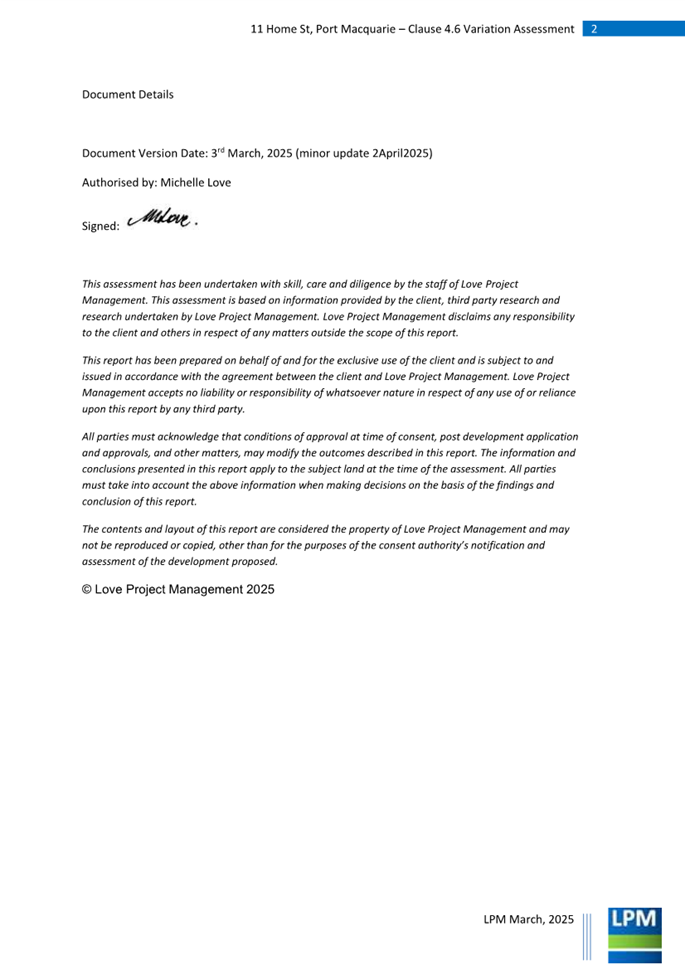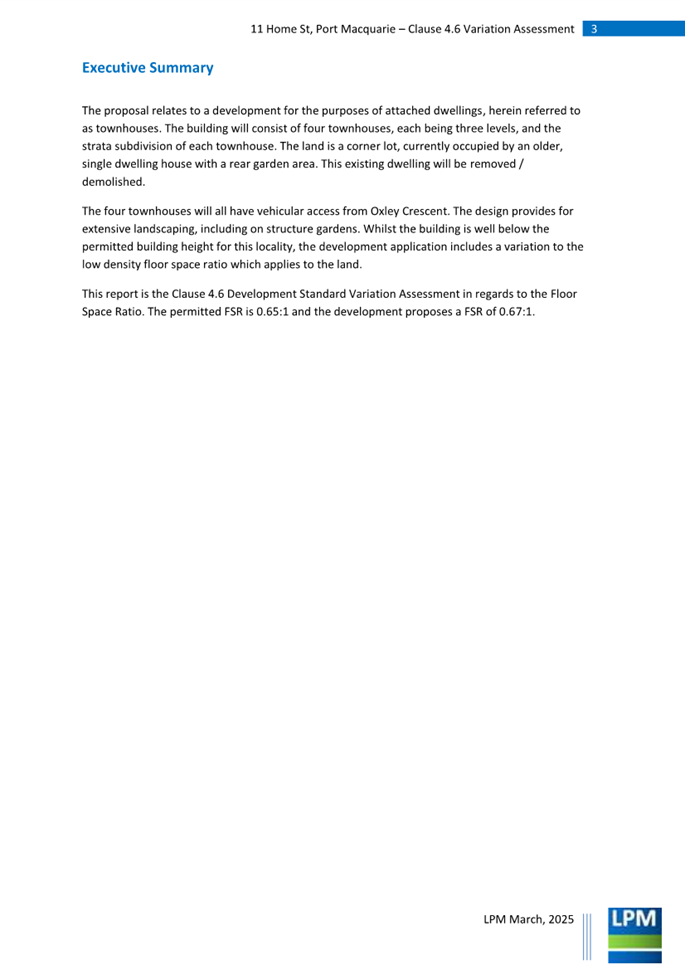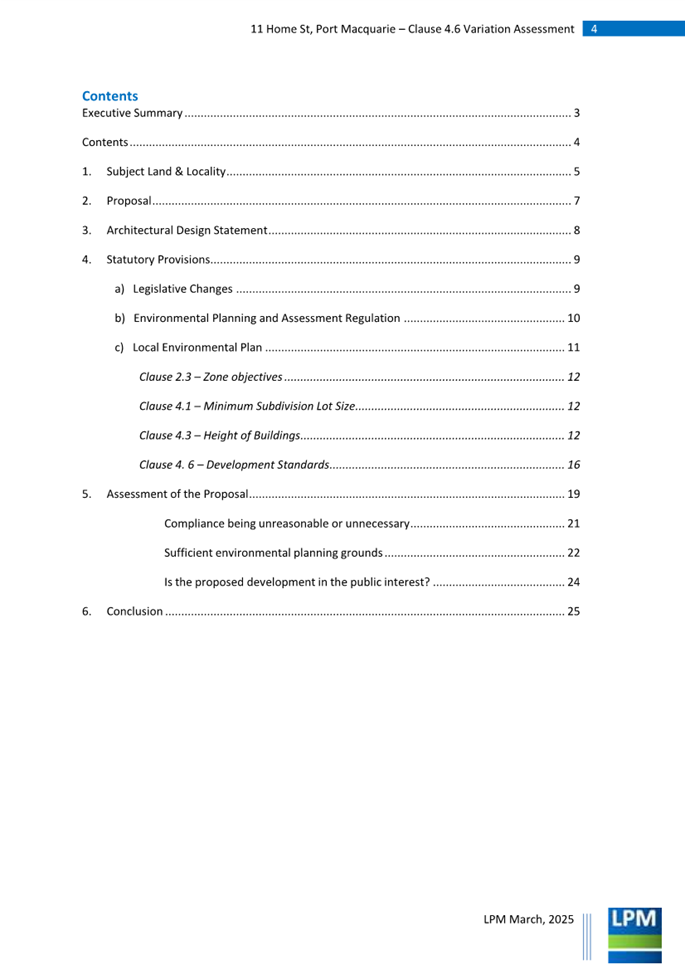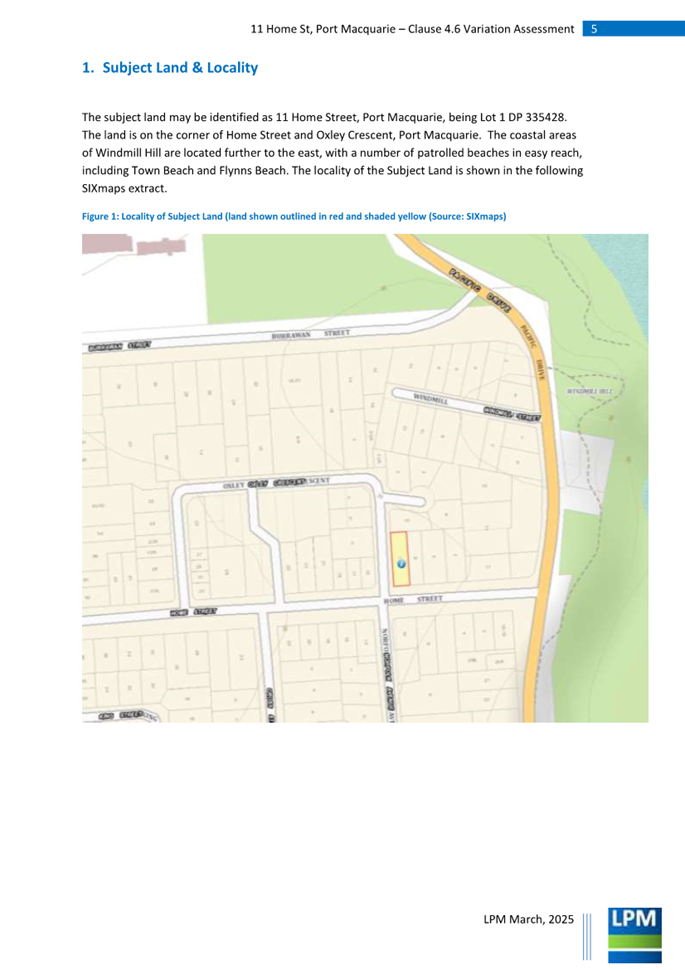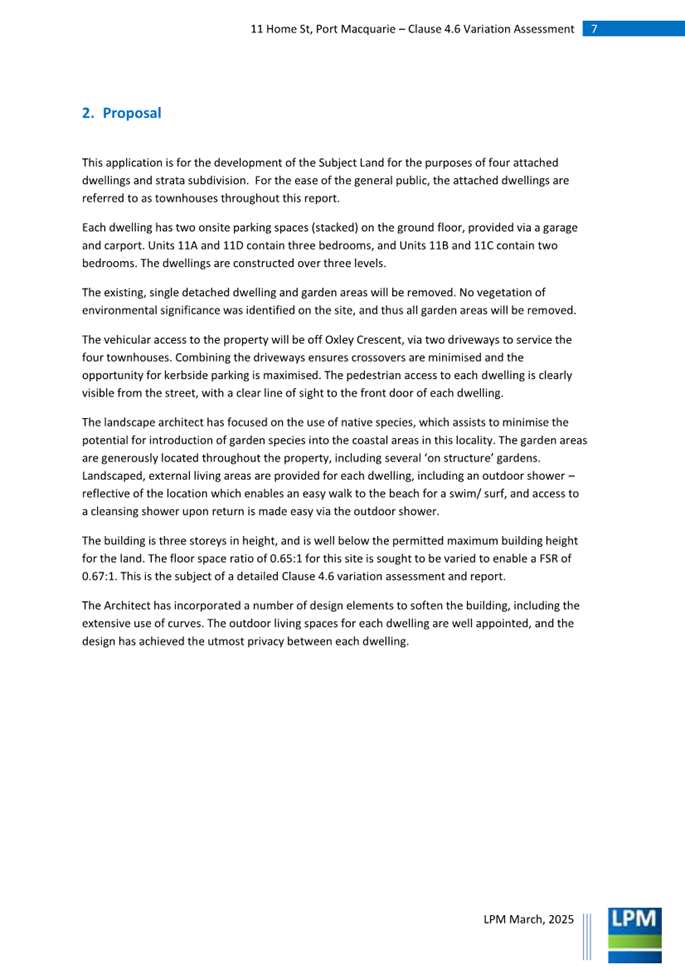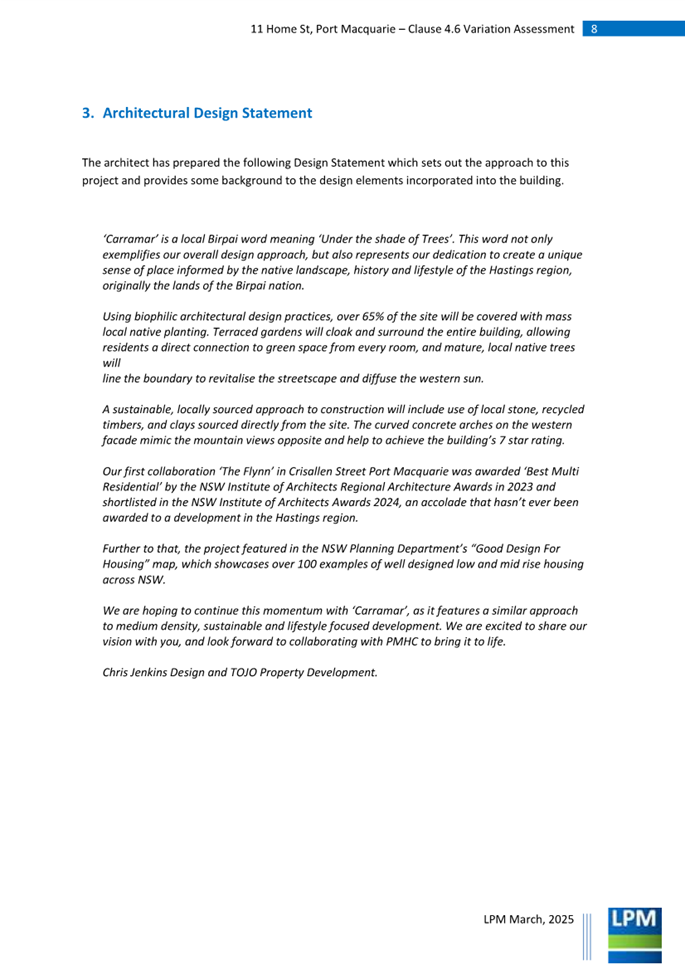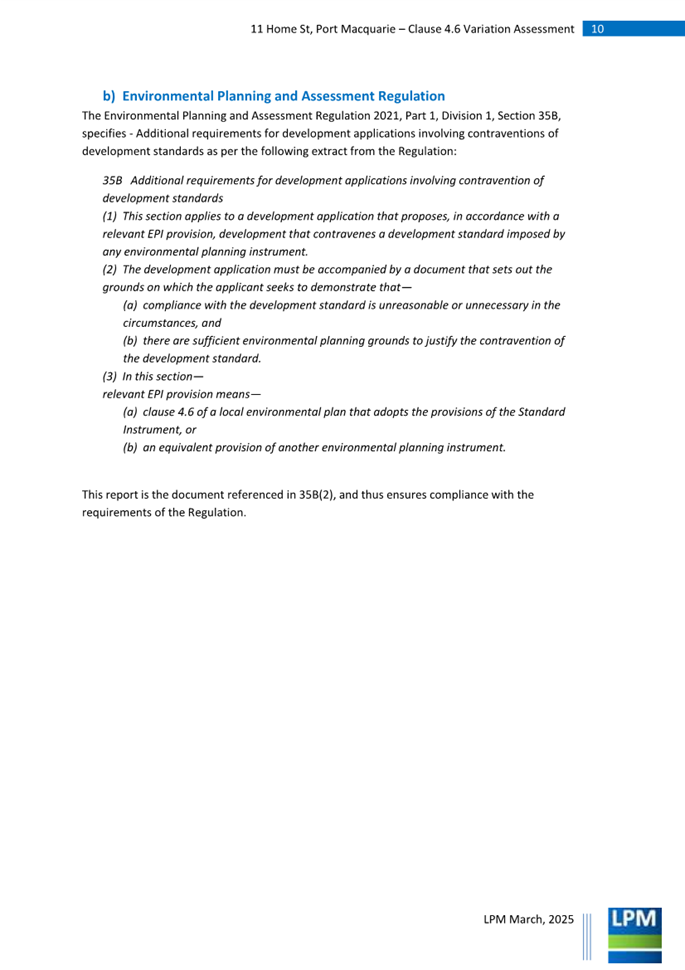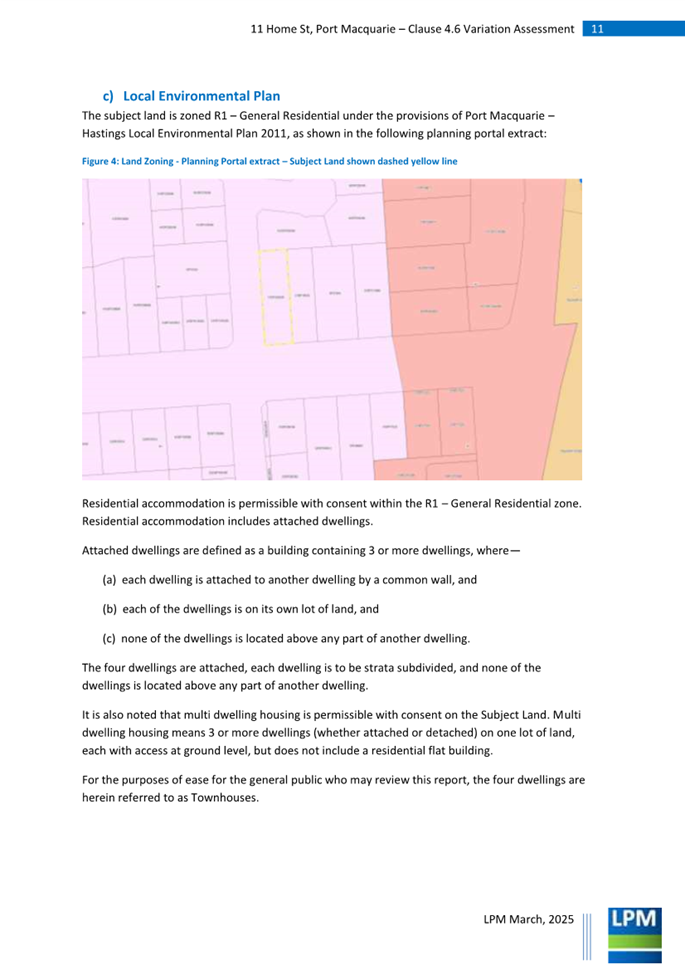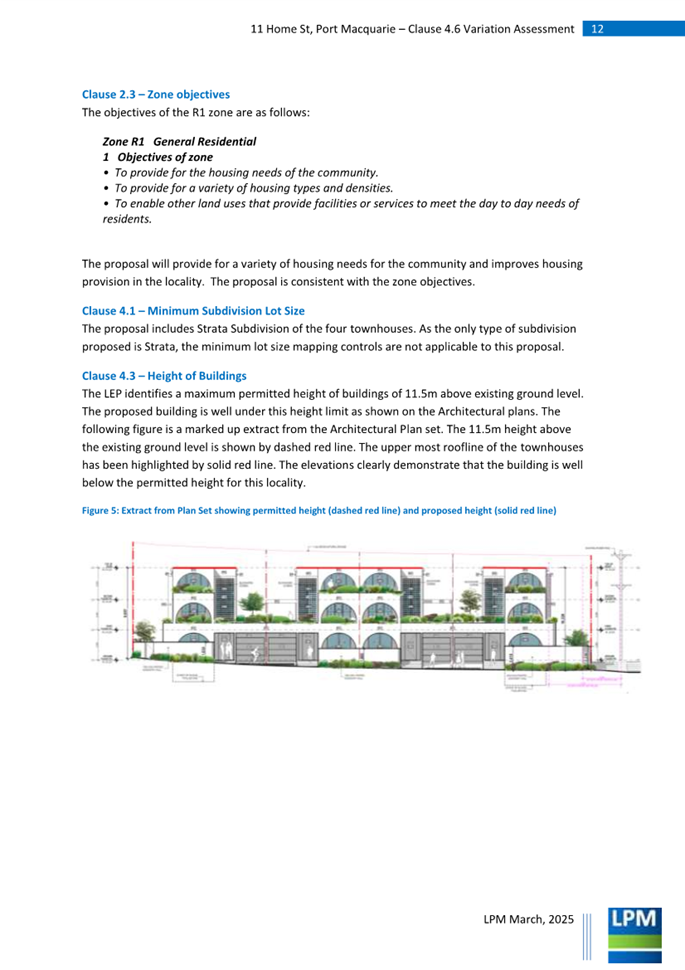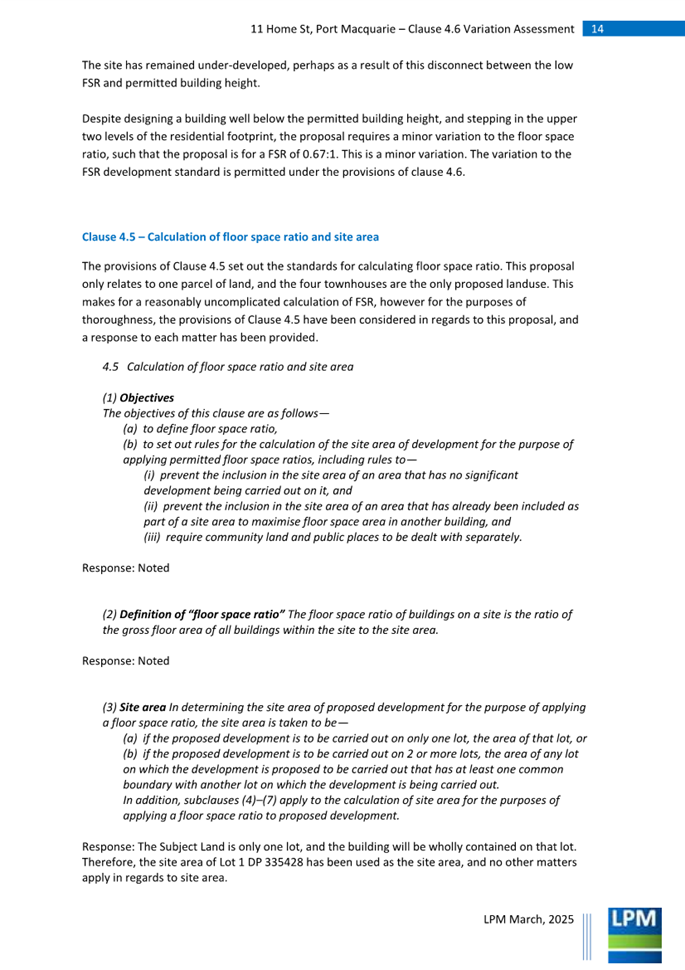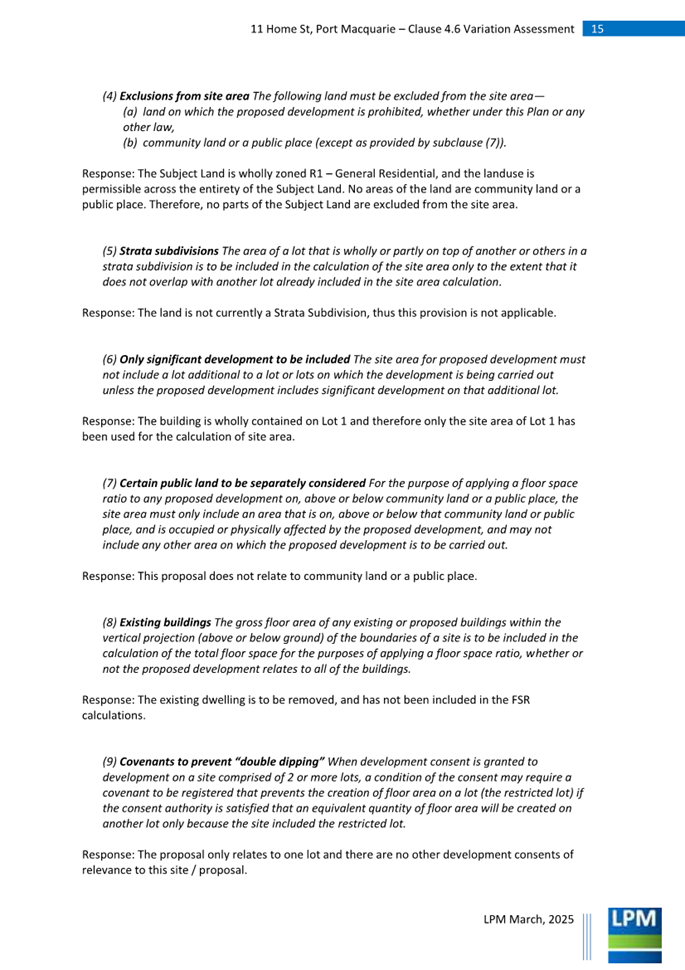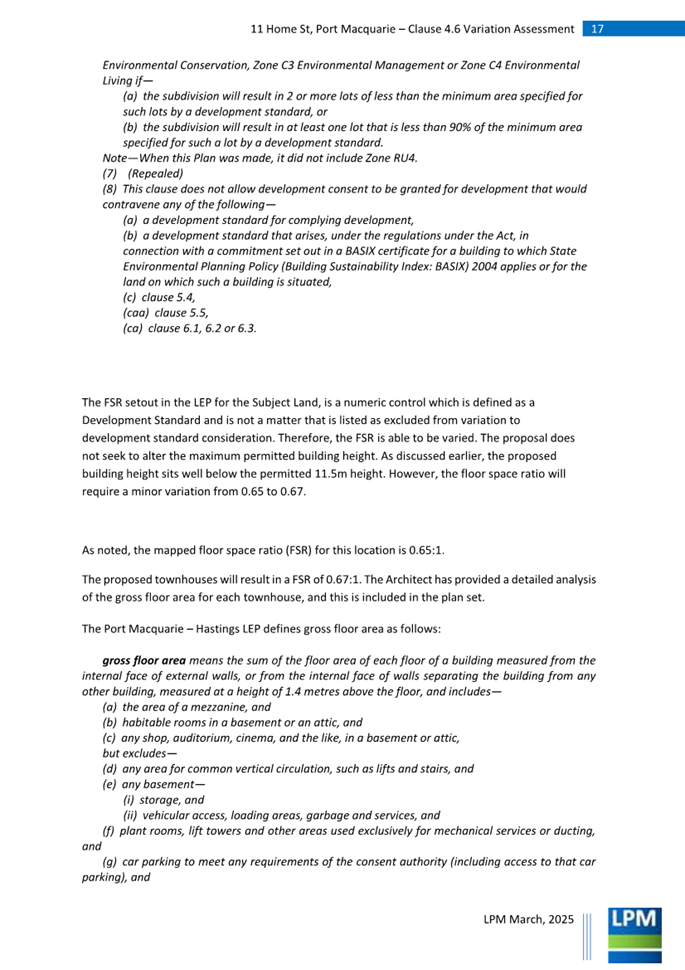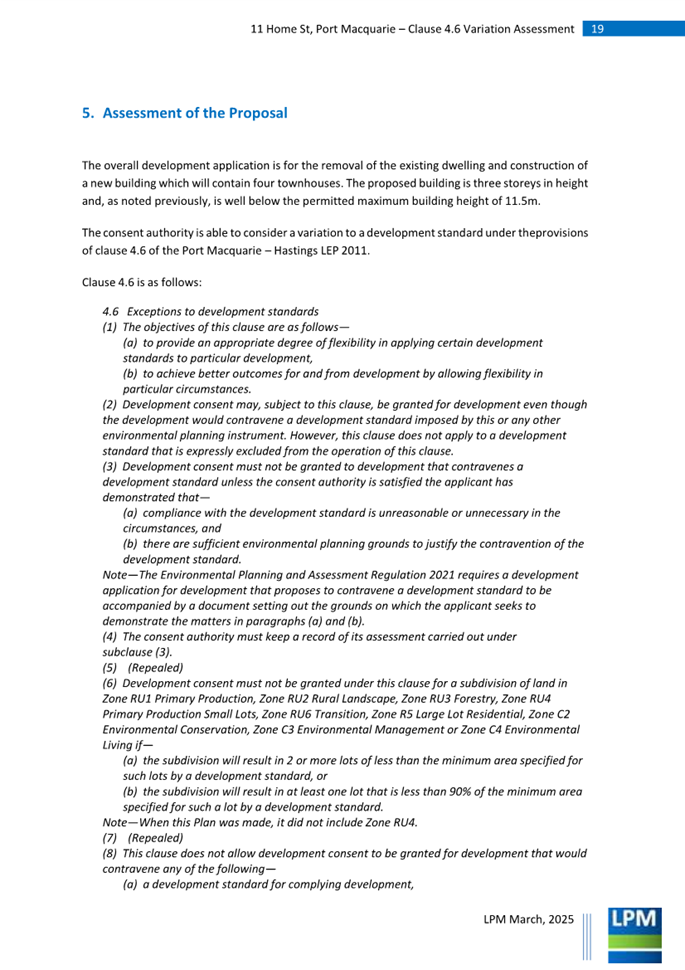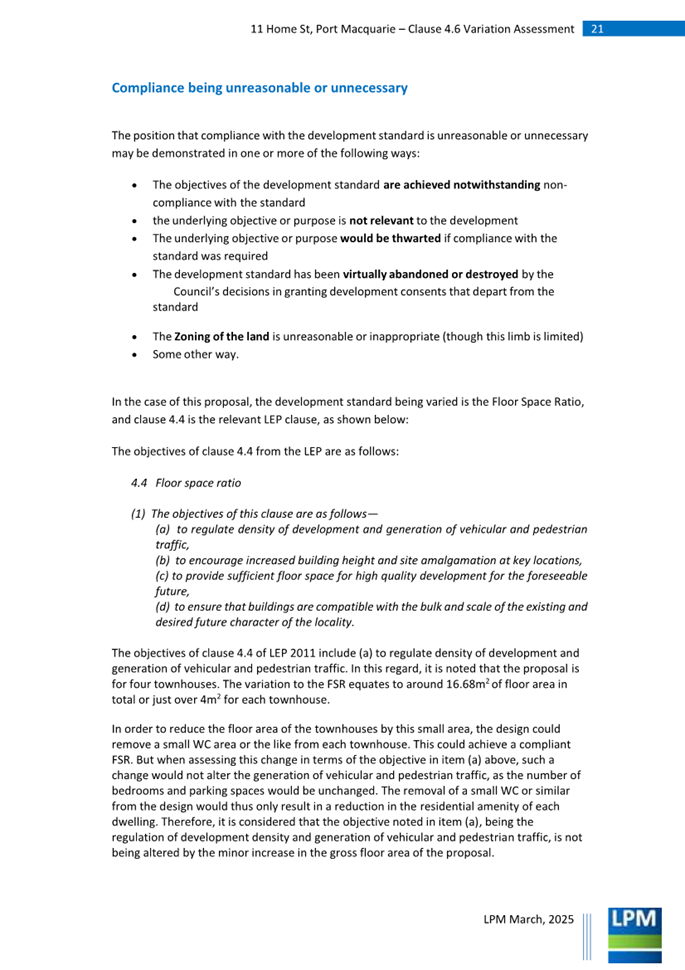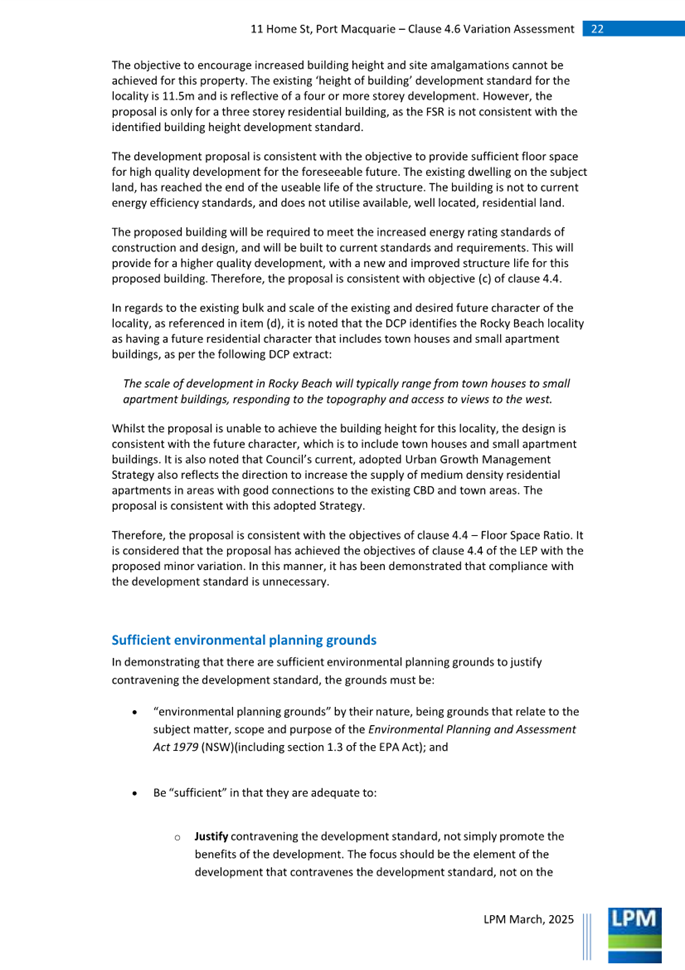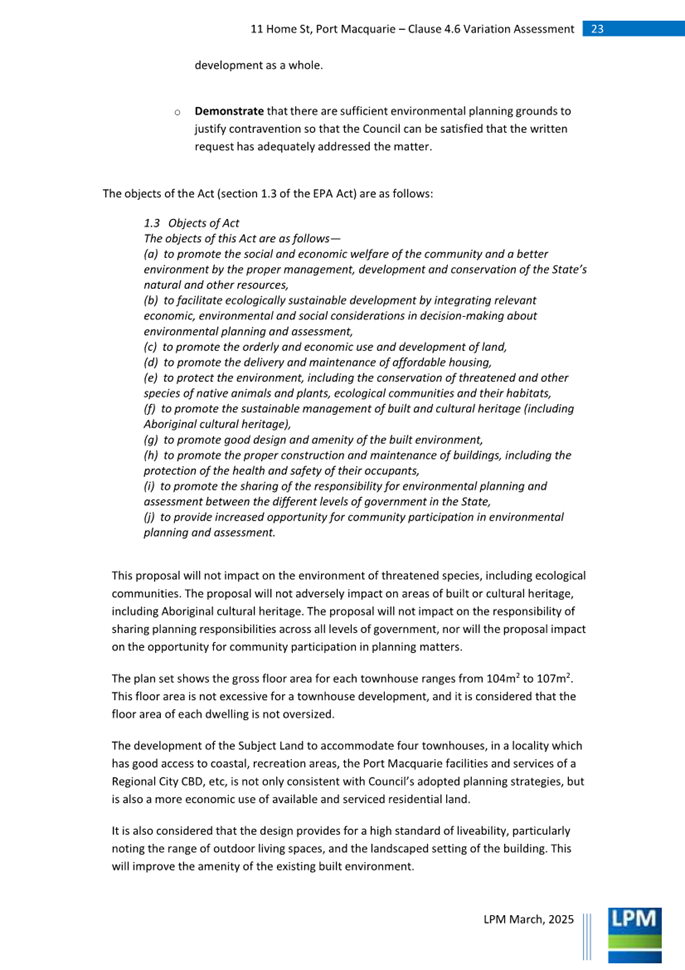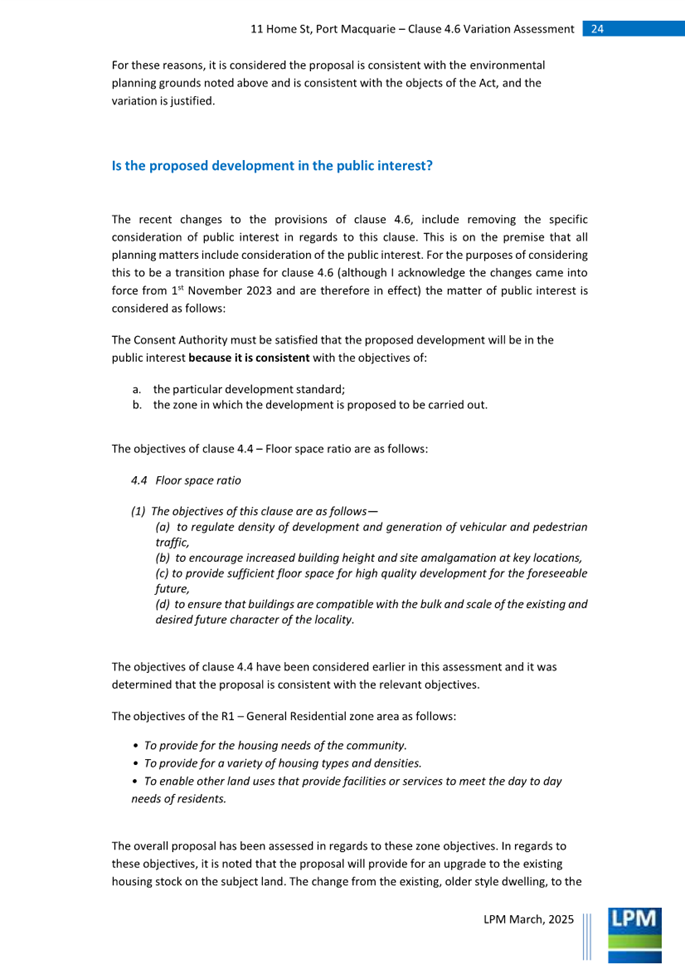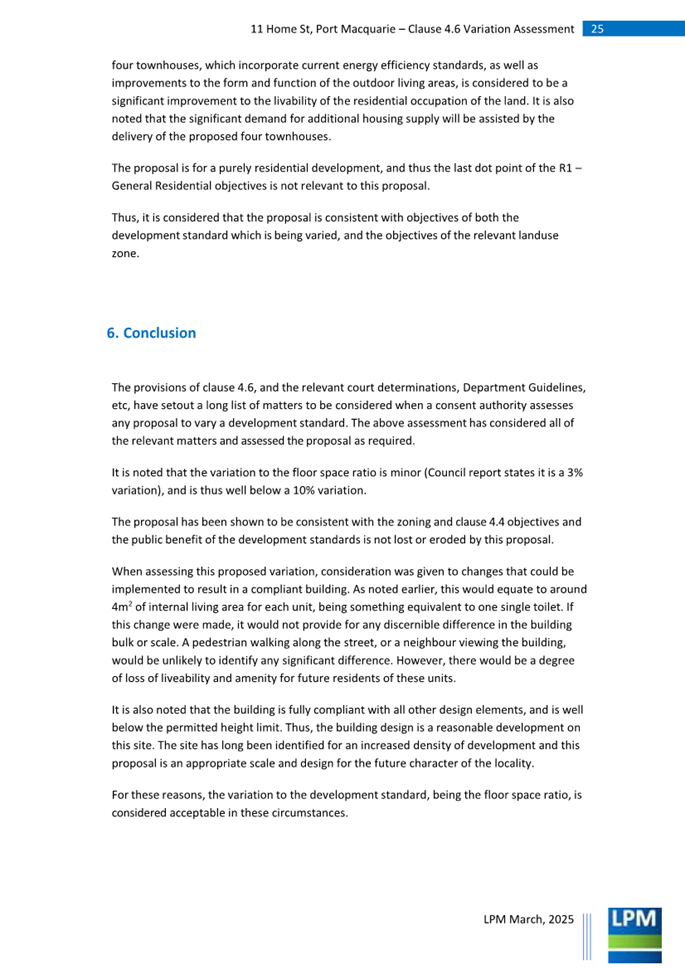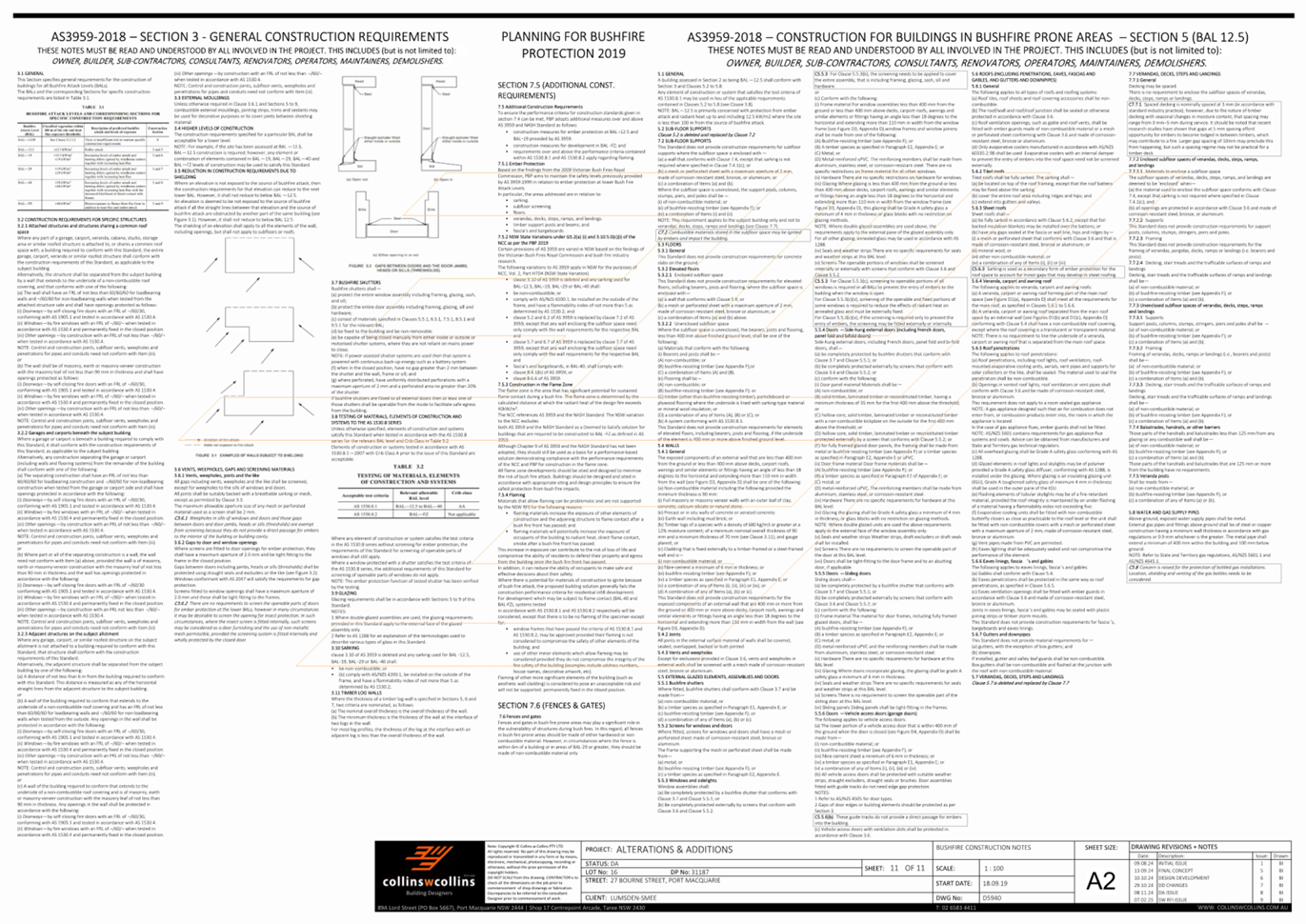Development
Assessment Panel
Business
Paper
|
date of meeting:
|
|
Wednesday 16 April
2025
|
|
location:
|
|
Port
Macquarie-Hastings Council
17 Burrawan Street,
Port Macquarie
Function Room
|
|
time:
|
|
2:00 PM
|
 DEVELOPMENT ASSESSMENT PANEL SUB COMMITTEE CHARTER
DEVELOPMENT ASSESSMENT PANEL SUB COMMITTEE CHARTER
Adopted: Ordinary
Council 2022 09 15
1.0 OBJECTIVES
To assist in managing
Council's development assessment function by providing independent, transparent and expert determinations of development applications that fall outside
of staff delegations.
2.0 KEY FUNCTIONS
·
To review development application reports and conditions. The focus of the Panel’s review is to be on those issues raised in submissions received following exhibition of development applications;
·
To determine
development applications
where there are 3 or more unique
submissions or where an
application is outside of staff delegations;
·
To refer development applications to Council for determination where
necessary;
·
To provide a forum for objectors
and applicants to make submissions on applications before the
Development Assessment Panel(DAP);
·
To maintain transparency in the determination of development applications.
Delegated Authority of Panel
Pursuant to Section 377 of the Local Government Act, 1993 delegation to:
·
Determine (approve
or refuse) development applications under Part 4 of the Environmental Planning and Assessment Act 1979 having regard to the relevant environmental planning instruments, development control plans and Council
policies.
·
Vary, modify or release
restrictions as to use and/or covenants created
by Section 88B instruments under the Conveyancing Act 1919 in relation to development applications being considered by the panel.
·
Determine Koala Plans of Management under State Environmental Planning Policy (Biodiversity and Conservation) 2021 associated with development applications being considered by the
Panel.
Noting the trigger to escalate decision
making to Council
as highlighted in section 5.2.
3.0
MEMBERSHIP
3.1
Voting Members
·
3 independent
external members will be selected for each scheduled DAP meeting from an
appointed pool of members. One of the independent external
members to be the
Chairperson. Independent members will be rostered onto meeting on a rotational
basis where possible.
·
Group Manager
Development Services (alternate - Director Community, Planning and Environment or Development Assessment Planning Coordinator).
The independent external
members shall have expertise in one or more of the following areas: planning,
architecture, heritage, the environment, urban
design, economics, traffic
and transport, law, engineering,
government and public administration.
3.2 Non-Voting Members Not applicable.
3.3
Obligations of members
·
Members must act faithfully and diligently and in accordance with this Charter.
·
Members must comply with Council's Code of Conduct.
·
Except as required to properly perform
their duties, DAP members must not disclose
any confidential information
(as advised by Council) obtained in connection with the DAP functions.
·
Members will have read and be familiar with the documents
and information provided
by Council prior to attending
a DAP meeting.
·
Members must act in accordance with Council's Workplace Health and Safety
Policies and Procedures
·
External members
of the Panel are not authorised to speak to the media on behalf of Council. Council officers that are members
of the Committee are bound by the
existing operational delegations in relation to speaking to media.
3.4
Member Tenure
The independent external
members will be appointed for the term of 4 years or until such time as an
expression of interest process to source panel members is completed for the proceeding 4 year term.
3.5
Appointment of members
·
A pool of independent external
members (including the Chair) shall be appointed by the Chief Executive Officer
following an external
Expression of Interest
process. Previous Panel members are eligible to be reappointed on the
Panel following this expression of interest process.
·
Independent members will be rostered on to Panel meetings on a rotational basis where possible
to suit Panel member availability and Panel operational needs.
·
Staff members on the Panel shall be appointed
by the Chief Executive Officer.
4.0 TIMETABLE OF MEETINGS
·
The Development Assessment Panel will generally meet on the 1st and 3rd Wednesday each month at 2.00pm
at the Port Macquarie offices of Council.
Meetings may be conducted on-line or a combination of in person and on-line.
·
Special Meetings
of the Panel may be convened by the Director
Community, Planning and Environment Services with 3 days
notice.
5.0
MEETING PRACTICES
5.1
Meeting Format
·
At all Meetings of the Panel the Chairperson shall occupy the Chair and preside. The Chair will be
responsible for keeping order at meetings.
·
Meetings shall be open to the public.
·
The Panel will hear from an applicant and objectors or their representatives. Speakers are required to register to speak by close of
business on the day prior to the Panel meeting.
·
The Panel shall have the discretion to ask the applicant and objectors questions
relating to the proposal and their submission. There
is no ‘right of reply’ for an objector or applicant.
·
Where there are a
large number of persons making submissions with common interests, the Panel
shall have the discretion to hear a representative of those persons
rather than multiple
persons with the same
interest.
·
Council assessment staff will be available
at Panel meetings
to provide technical
assessment advice and
assistance to the Panel.
·
Where considered necessary, the Panel will conduct site inspections prior to the meeting.
5.2
Decision Making
·
Decisions are to be made by consensus. Where consensus is not possible
on any item, that item is
to be referred to Council for a decision.
·
All development applications involving a proposed variation to a development standard greater than 10% under Clause 4.6 of the Local
Environmental Plan will be considered
by the Panel and recommendation made to the Council for a decision.
5.3
Quorum
3 members
must be present
at a meeting to form a quorum.
5.4 Chairperson and Deputy Chairperson Independent Chair (alternate - independent member).
5.5 Secretariat
·
The Director
Community, Planning and Environment is to be responsible for ensuring that the
Panel has adequate secretariat support. The secretariat will ensure that the
business paper and supporting papers
are circulated at least
3 days prior to each meeting. Minutes
shall be appropriately approved and circulated to
each member within 3 weeks of a meeting being held.
·
The format
of and the preparation and publishing of the Business
Paper and Minutes
shall be similar to the format for Ordinary Council
Meetings.
5.6
Recording of decisions
Minutes will be limited
to the recording of decisions
of the DAP and how each member
votes for each item
before the Panel. Meetings may be recorded via an on-line platform where practical.
6.0 CONVENING OF “OUTCOME SPECIFIC” WORKING GROUPS
Not applicable.
7.0 CONFIDENTIALITY AND CONFLICT OF INTEREST
·
Members of the
Panel must comply with Council’s Code of Conduct. It is the personal
responsibility of members to comply with the standards in the Code of Conduct
and regularly review their
personal circumstances with this in mind.
·
Panel members
must declare any conflict of interest at the start of each meeting or before
discussion of a relevant item or topic. Details of any conflicts of interest
are to be appropriately minuted. Where members are deemed to have a real or
perceived conflict of interest, it may be appropriate they be excused
from deliberations on the issue where the conflict of interest may exist.
A Panel meeting may be postponed where there is no quorum.
8.0 LOBBYING
All members and applicants are to adhere
to Council’s Lobbying
policy. Outside of scheduled Development Assessment Panel meetings,
applicants, their representatives, Councillors, Council staff and the general
public are not to lobby Panel members via meetings, telephone conversations,
correspondence and the like. Adequate opportunity will be provided at Panel
inspections or meetings for applicants, their representatives and the general
public to make verbal submissions in relation to Business Paper items.
9.0 CONDUCT AT MEETINGS
All parties in attendance at
a DAP meeting shall conduct themselves respectfully i.e. not disrupt the
conduct of the meeting, interject, act courteously and with compassion and
empathy and sensitivity and will not insult,
denigrate or make defamatory or personal reflections on or impute improper motives
to the DAP, Council staff or
other members of the public.
Development Assessment Panel
ATTENDANCE
REGISTER
|
Member
|
16/10/24
|
20/11/24
|
11/12/24
|
05/02/25
|
05/03/25
|
19/03/25
|
|
David Crofts
(Independent Chair)
|
A
|
P
|
P
|
|
A
|
P
|
|
Tony McNamara
(Independent Member)
|
P
|
|
P
|
P
|
P
|
|
|
Chris Gee
(Independent Member)
|
P
|
P
|
|
P
|
P
|
P
|
|
Murray Blackburn-Smith
(Independent Member)
|
|
|
|
P
|
|
P
|
|
Dan Croft
(Group Manager Development
Services)
|
P
|
P
|
P
|
P
|
P
|
P
|
|
Other attendees
|
|
|
|
|
|
|
|
Melissa Watkins
(Director Community,
Planning and Environment)
|
|
|
|
|
|
|
|
Grant Burge
(Development Engineering
Coordinator)
|
P
|
P
|
P
|
P
|
P
|
|
|
Kerrod Franklin
(Acting Development
Engineering Coordinator)
|
|
|
|
|
|
|
|
Patrick
Galbraith-Robertson
(Development Planning
Coordinator)
|
|
|
P
|
|
|
P
|
|
Steven Ford
(Development Assessment
Planner)
|
|
P
|
|
|
|
|
|
Chris Gardiner
(Development Assessment
Planner)
|
|
P
|
P
|
|
P
|
|
|
Vanessa Penfold
(Development Assessment
Planner)
|
P
|
|
P
|
|
|
|
|
Clinton Tink
(Development Assessment
Planner)
|
|
|
|
P
|
|
|
|
Jon Power
(Act Development Engineer
Coordinator)
|
|
|
|
|
|
|
|
Beau Spry
(Development Assessment
Planner)
|
|
|
|
|
|
|
|
Ben Roberts
(Development Assessment
Planner)
|
|
P
|
|
|
|
|
|
Kate Kennedy
(Building Surveyor)
|
|
|
|
|
|
|
|
Warren Wisemantel
(Building Surveyor)
|
|
|
|
|
|
|
|
Bob Slater
(Development Assessment
Planner)
|
|
|
|
|
|
|
|
Alton Dick
(Stormwater Engineer)
|
|
|
|
|
|
|
|
Fiona Tierney
(Development Assessment
Planner)
|
|
|
|
|
|
|
|
Nicholas Powers
(Development Assessment Planner)
|
|
|
|
|
|
|
Key: P = Present, A
= Absent With Apology X = Absent Without Apology
Development
Assessment Panel
Meeting Dates for
2025
|
5
February
|
Function Room
|
2.00pm
|
|
19
February
|
Function Room
|
2.00pm
|
|
5 March
|
Function Room
|
2.00pm
|
|
19
March
|
Function Room
|
2.00pm
|
|
2 April
|
Function Room
|
2.00pm
|
|
16
April
|
Function Room
|
2.00pm
|
|
7 May
|
Function Room
|
2.00pm
|
|
21 May
|
Function Room
|
2.00pm
|
|
4 June
|
Function Room
|
2.00pm
|
|
18 June
|
Function Room
|
2.00pm
|
|
2 July
|
Function Room
|
2.00pm
|
|
16 July
|
Function Room
|
2.00pm
|
|
6
August
|
Function Room
|
2.00pm
|
|
20
August
|
Function Room
|
2.00pm
|
|
3
September
|
Function Room
|
2.00pm
|
|
17
September
|
Function Room
|
2.00pm
|
|
1 October
|
Function Room
|
2.00pm
|
|
15 October
|
Function Room
|
2.00pm
|
|
5 November
|
Function Room
|
2.00pm
|
|
19 November
|
Function Room
|
2.00pm
|
|
10 December
|
Function Room
|
2.00pm
|
Development
Assessment Panel Meeting
Wednesday 16 April
2025
Items of Business
01 Acknowledgement
of Country........................................................................... 11
02 Apologies........................................................................................................ 11
03 Confirmation
of Minutes................................................................................... 11
04 Disclosures
of Interest..................................................................................... 14
05 DA2024
- 792.1 Alterations and Additions to Dwelling at 27 Bourne Street Port
Macquarie...................................................................................................................... 20
06 DA2024
- 252.1 Multi Dwelling Housing and Strata Subdivision including Clause 4.6
Variation to Clause 4.4 (Floor Space Ratio) of the Port Macquarie-Hastings
Local Environmental Plan 2011 at Lot 1 DP 335428 No 11 Home Street, Port
Macquarie....................................... 68
07 General
Business
Development Assessment Panel
16/04/2025
Subject: ACKNOWLEDGEMENT
OF COUNTRY
"I acknowledge that we are
gathered on Birpai Land. I pay respect to the Birpai Elders both past and
present. I also extend that respect to all other Aboriginal and Torres Strait
Islander people present."
RECOMMENDATION
That the apologies received be
accepted.
Subject: CONFIRMATION
OF PREVIOUS MINUTES
Recommendation
That the Minutes of the Development Assessment Panel Meeting
held on 19 March 2025 be confirmed.
MINUTES
Development Assessment Panel Meeting
19/03/2025
PRESENT
Members:
David Crofts (Independent Chair)
Chris Gee (Independent Member)
Murray Blackburn-Smith
(Independent Member)
Dan Croft (Group Manager
Development Services)
Other Attendees:
Pat Galbraith-Robertson
(Development Assessment Planning Manager)
|
The meeting opened at 2.00pm
|
|
01 ACKNOWLEDGEMENT
OF COUNTRY
|
|
The
Acknowledgement of Country was delivered.
|
|
03 CONFIRMATION
OF MINUTES
|
|
CONSENSUS:
That
the Minutes of the Development Assessment Panel Meeting held on 5 March 2025
be confirmed.
|
|
04 DISCLOSURES
OF INTEREST
|
|
There were no disclosures of interest presented.
|
|
05 DA2025 - 34.1
Change of Use to Dual Occupancy and Strata Title Subdivision at Lot 10 DP
591359, No. 159 Lake Road Port Macquarie
|
|
CONSENSUS:
That
DAP recommend to Council that DA2025 - 34.1 for a change of use to
dual occupancy and strata title subdivision at Lot
10, DP 591359, No. 159 Lake Road, Port
Macquarie, be determined by granting consent
subject to the recommended conditions, with the following additional
condition Numbered 3, before issue of a strata Certificate to read:
Prior to issue of a strata
certificate, the strata plan is to be amended so that the carport on lot 2 is
nominated as ‘CS’ as opposed to ‘CP’.
Reason: To clarify that the
carport is not common property and to ensure that lot 2 has a nominated car
parking space on the strata plan.
|
|
The meeting closed at 2.10pm.
|
Development Assessment Panel
16/04/2025
Subject: DISCLOSURES
OF INTEREST
RECOMMENDATION
That Disclosures of Interest be presented
DISCLOSURE OF
INTEREST DECLARATION
|
Name of Meeting:
|
|
Meeting
Date:
|
|
Item
Number:
|
|
Subject:
|
|
I,
the undersigned, hereby declare the following interest:
Pecuniary:
 Take no part
in the consideration and voting and be out of sight of the meeting. Take no part
in the consideration and voting and be out of sight of the meeting.
Non-Pecuniary
– Significant Interest:
 Take no part
in the consideration and voting and be out of sight of the meeting. Take no part
in the consideration and voting and be out of sight of the meeting.
Non-Pecuniary
– Less than Significant Interest:
 May
participate in consideration and voting. May
participate in consideration and voting.
|
|
For
the reason that:
|
|
Name:
Signed:
|
Date:
|
|
Please submit to the
Governance Support Officer at the Council Meeting.
|
 (Refer
to next page and the Code of Conduct)
(Refer
to next page and the Code of Conduct)
Pecuniary Interest
4.1
A pecuniary interest is an interest
that you have in a matter because of a reasonable likelihood or expectation of
appreciable financial gain or loss to you or a person referred to in clause
4.3.
4.2
You will not have a pecuniary
interest in a matter if the interest is so remote or insignificant that it
could not reasonably be regarded as likely to influence any decision you might
make in relation to the matter, or if the interest is of a kind specified in
clause 4.6.
4.3
For the purposes of this Part, you
will have a pecuniary interest in a matter if the pecuniary interest is:
(a)
your interest, or
(b)
the interest of your spouse or de
facto partner, your relative, or your partner or employer, or
(c)
a company or other body of which
you, or your nominee, partner or employer, is a shareholder or member.
4.4
For the purposes of clause 4.3:
(a)
Your “relative” is any
of the following:
(b)
“de facto partner” has
the same meaning as defined in section 21C of the Interpretation Act 1987.
4.5
You will not have a pecuniary
interest in relation to a person referred to in subclauses 4.3(b) or (c)
(a)
if you are unaware of the relevant
pecuniary interest of your spouse, de facto partner, relative, partner,
employer or company or other body, or
(b)
just because the person is a member
of, or is employed by, a council or a statutory body, or is employed by the
Crown, or
(c)
just because the person is a member
of, or a delegate of a council to, a company or other body that has a pecuniary
interest in the matter, so long as the person has no beneficial interest in any
shares of the company or body.
Non-Pecuniary
5.1
Non-pecuniary interests are private
or personal interests a council official has that do not amount to a pecuniary
interest as defined in clause 4.1 of this code. These commonly arise out of
family or personal relationships, or out of involvement in sporting, social,
religious or other cultural groups and associations, and may include an
interest of a financial nature.
5.2
A non-pecuniary conflict of
interest exists where a reasonable and informed person would perceive that you
could be influenced by a private interest when carrying out your official
functions in relation to a matter.
5.3
The personal or political views of
a council official do not constitute a private interest for the purposes of
clause 5.2.
5.4
Non-pecuniary conflicts of interest
must be identified and appropriately managed to uphold community confidence in
the probity of council decision-making. The onus is on you to identify any
non-pecuniary conflict of interest you may have in matters that you deal with,
to disclose the interest fully and in writing, and to take appropriate action
to manage the conflict in accordance with this code.
5.5
When considering whether or not you
have a non-pecuniary conflict of interest in a matter you are dealing with, it
is always important to think about how others would view your situation.
Managing
non-pecuniary conflicts of interest
5.6
Where you have a non-pecuniary
conflict of interest in a matter for the purposes of clause 5.2, you must
disclose the relevant private interest you have in relation to the matter fully
and in writing as soon as practicable after becoming aware of the non-pecuniary
conflict of interest and on each occasion on which the non-pecuniary conflict
of interest arises in relation to the matter. In the case of members of council
staff other than the Chief Executive Officer, such a disclosure is to be made
to the staff member’s manager. In the case of the Chief Executive Officer,
such a disclosure is to be made to the mayor.
5.7
If a disclosure is made at a
council or committee meeting, both the disclosure and the nature of the
interest must be recorded in the minutes on each occasion on which the
non-pecuniary conflict of interest arises. This disclosure constitutes
disclosure in writing for the purposes of clause 5.6.
5.8
How you manage a non-pecuniary
conflict of interest will depend on whether or not it is significant.
5.9
As a general rule, a non-pecuniary
conflict of interest will be significant where it does not involve a pecuniary
interest for the purposes of clause 4.1, but it involves:
a) a relationship between a council official and another
person who is affected by a decision or a matter under consideration that is
particularly close, such as a current or former spouse or de facto partner, a
relative for the purposes of clause 4.4 or another person from the council
official’s extended family that the council official has a close personal
relationship with, or another person living in the same household
b)
other relationships with persons
who are affected by a decision or a matter under consideration that are
particularly close, such as friendships and business relationships. Closeness
is defined by the nature of the friendship or business relationship, the
frequency of contact and the duration of the friendship or relationship.
c)
an affiliation between the council
official and an organisation (such as a sporting body, club, religious,
cultural or charitable organisation, corporation or association) that is
affected by a decision or a matter under consideration that is particularly
strong. The strength of a council official’s affiliation with an
organisation is to be determined by the extent to which they actively
participate in the management, administration or other activities of the
organisation.
d)
membership, as the council’s
representative, of the board or management committee of an organisation that is
affected by a decision or a matter under consideration, in circumstances where
the interests of the council and the organisation are potentially in conflict
in relation to the particular matter
e)
a financial interest (other than an
interest of a type referred to in clause 4.6) that is not a pecuniary interest
for the purposes of clause 4.1
f)
the conferral or loss of a personal
benefit other than one conferred or lost as a member of the community or a
broader class of people affected by a decision.
5.10 Significant non-pecuniary conflicts of interest must be
managed in one of two ways:
a)
by not participating in
consideration of, or decision making in relation to, the matter in which you
have the significant non-pecuniary conflict of interest and the matter being
allocated to another person for consideration or determination, or
b)
if the significant non-pecuniary
conflict of interest arises in relation to a matter under consideration at a
council or committee meeting, by managing the conflict of interest as if you
had a pecuniary interest in the matter by complying with clauses 4.28 and 4.29.
5.11 If you determine that you have a non-pecuniary conflict
of interest in a matter that is not significant and does not require further
action, when disclosing the interest you must also explain in writing why you
consider that the non-pecuniary conflict of interest is not significant and
does not require further action in the circumstances.
5.12 If you are a member of staff of council other than the Chief
Executive Officer, the decision on which option should be taken to manage a
non-pecuniary conflict of interest must be made in consultation with and at the
direction of your manager. In the case of the Chief Executive Officer, the
decision on which option should be taken to manage a non-pecuniary conflict of
interest must be made in consultation with and at the direction of the mayor.
5.13
Despite clause 5.10(b), a
councillor who has a significant non-pecuniary conflict of interest in a
matter, may participate in a decision to delegate consideration of the matter
in question to another body or person.
5.14
Council committee members are not
required to declare and manage a non-pecuniary conflict of interest in
accordance with the requirements of this Part where it arises from an interest
they have as a person chosen to represent the community, or as a member of a
non-profit organisation or other community or special interest group, if they
have been appointed to represent the organisation or group on the council
committee.
SPECIAL
DISCLOSURE OF PECUNIARY INTEREST DECLARATION
This
form must be completed using block letters or typed.
If
there is insufficient space for all the information you are required to
disclose,
you
must attach an appendix which is to be properly identified and signed by you.
|
By
[insert full name of councillor]
|
|
|
In the
matter of
[insert name of environmental planning instrument]
|
|
|
Which is
to be considered at a meeting of the
[insert name of meeting]
|
|
|
Held on
[insert date of meeting]
|
|
|
PECUNIARY INTEREST
|
|
Address of
the affected principal place of residence of the councillor or an associated
person, company or body (the identified land)
|
|
|
Relationship
of identified land to councillor
[Tick or cross one box.]
|
The councillor has interest in the land (e.g. is owner or has other
interest arising out of a mortgage, lease, trust, option or contract, or
otherwise).
An associated person of the councillor has an interest in the land.
An associated company or body of the councillor has interest in the land.
|
|
MATTER GIVING RISE TO PECUNIARY INTEREST
|
|
Nature of
land that is subject to a change
in
zone/planning control by proposed
LEP (the
subject land
[Tick or cross one box]
|
The identified land.
Land that adjoins or is adjacent to or is in proximity to the identified
land.
|
|
Current
zone/planning control
[Insert name of current planning instrument and
identify relevant zone/planning control applying to the subject land]
|
|
|
Proposed
change of zone/planning control
[Insert name of proposed LEP and identify proposed
change of zone/planning control applying to the subject land]
|
|
|
Effect of
proposed change of zone/planning control on councillor or associated person
[Tick or cross one box]
|
Appreciable financial gain.
Appreciable financial loss.
|
|
|
|
[If more than one pecuniary interest is to be
declared, reprint the above box and fill in for each additional interest]
Councillor’s Signature:
……………………………….
Date: ………………..
This form is to be retained
by the council’s Chief Executive Officer and included in full in the
minutes of the meeting
Last Updated: 3 June 2019
Important Information
This information is being collected for the purpose of
making a special disclosure of pecuniary interests under clause 4.36(c) of the
Model Code of Conduct for Local Councils in NSW (the Model Code of Conduct).
The special disclosure must relate only to a pecuniary
interest that a councillor has in the councillor’s principal place of
residence, or an interest another person (whose interests are relevant under
clause 4.3 of the Model Code of Conduct) has in that person’s principal
place of residence.
Clause 4.3 of the Model Code of Conduct states that you
will have a pecuniary interest in a matter because of the pecuniary interest of
your spouse or your de facto partner or your relative or because your business
partner or employer has a pecuniary interest. You will also have a pecuniary
interest in a matter because you, your nominee, your business partner or your
employer is a member of a company or other body that has a pecuniary interest
in the matter.
“Relative” is defined by clause 4.4 of the
Model Code of Conduct as meaning your, your spouse’s or your de facto
partner’s parent, grandparent, brother, sister, uncle, aunt, nephew,
niece, lineal descendant or adopted child and the spouse or de facto partner of
any of those persons.
You
must not make a special disclosure that you know or ought reasonably to know is
false or misleading in a material particular. Complaints about breaches
of these requirements are to be referred to the Office of Local Government and
may result in disciplinary action by the Chief Executive of the Office of Local
Government or the NSW Civil and Administrative Tribunal.
This form must be completed by you before the commencement
of the council or council committee meeting at which the special disclosure is
being made. The completed form must be tabled at the meeting. Everyone is
entitled to inspect it. The special disclosure must be recorded in the minutes
of the meeting.
A pecuniary interest may arise by way of a change of
permissible use of land adjoining, adjacent to or in proximity to land in which
a councillor or a person, company or body referred to in clause 4.3 of the
Model Code of Conduct has a proprietary interest
Development Assessment Panel
16/04/2025
Item: 05
Subject: DA2024 - 792.1 Alterations and Additions to
Dwelling at 27 Bourne Street Port Macquarie
Report
Author: Development Assessment Planner, Beau Spry
|
Applicant: Matthew
Lumsden-Smee & Sharon Lumsden-Smee, c/- Collins W Collin
Owner: Matthew
Lumsden-Smee & Sharon Lumsden-Smee
Estimated Cost: $900,00
Alignment with Delivery
Program
4.3.1 Undertake transparent
and efficient development assessment in accordance with relevant legislation.
|
RECOMMENDATION
That
DA 2024-792.1 for Alterations
and Additions to Dwelling at Lot 16, DP 31187, No. 27 Bourne, Port Macquarie,
be determined by granting consent subject to the recommended conditions.
Executive
Summary
This report considers a
development application for a single dwelling at the subject site and provides
an assessment of the application in accordance with the Environmental Planning
and Assessment Act 1979.
Following exhibition of the
application, three (3) submissions were received.
The site is considered suitable
for the proposed development and the proposal
adequately addresses relevant
planning controls. The development is not considered
to be contrary to the public's
interest and will not result in a significant adverse social,
environmental or economic
impact.
This report recommends that the
development application be approved subject to the
attached conditions (Attachment
1).
The reason for the application
being referred to Council’s Development Assessment
Panel (DAP) is because three (3)
or more objections to the proposal have been
received. A copy of the DAP
Charter outlining the delegations and functions of the
DAP is available on Council’s website.
REPORT
1. BACKGROUND
Existing
Sites Features and Surrounding Development
The site has an area of
656.86m².
The site is zoned R1 General
Residential in accordance with the Port Macquarie-
Hastings Local Environmental Plan 2011, as shown in the
following zoning plan:

The
existing subdivision pattern and location of existing development within the
locality is shown in the following aerial photograph:

2. DESCRIPTION
OF DEVELOPMENT
Key
aspects of the proposal include the following:
· Alterations to the existing
dwelling including floorplan alteration, deck extension, addition of third
storey, and reconfigured garage.
· Three (3) submissions
were received.
Plans
of the proposed development are at the end of this report (Attachment 2).
Application
Chronology
· 3/12/2024 -
Application lodged with Council.
· 9/01/2025 - Referral
to Essential Energy.
· 13/01/2025 - Essential
Energy comments received.
· 14-28/1/2025
- Notification period.
· 7/2/2025 -
Council staff requested additional information.
· 7/2/2025 -
Applicant responded to request for additional information
· 26/2/2025 -
Council staff requested additional information on the
−
updated
detail provided by the applicant on 7/2/2025, including establishment of site
poles.
· 25/3/2025 -
Establishment of two survey accurate height poles and
−
submission
of additional plans.
· 27/3/2025 -
View analysis inspections at #18 and #22 Bourne St.
3. STATUTORY
ASSESSMENT
Section
4.15(1) Matters for Consideration
In determining
the application, Council is required to take into consideration the following
matters as are relevant to the development that apply to the land to which the
development application relates:
(a) The
provisions (where applicable) of:
(i) Any
Environmental Planning Instrument
State Environmental Planning
Policy (Biodiversity and Conservation) 2021
Chapter 4 Koala Habitat
Protection 2021
Clause 4.4 - This SEPP applies
to all non-rural zoned land within the Port Macquarie-
Hastings Local Government Area.
The subject lot is zoned R1 General Residential
(non-rural zone), so the SEPP
applies.
Clause 4.10 - Having considered
the SEPP, the application and on completion of a
site inspection, Council is not
prevented from granting consent in this case for the
following reasons:
1) The property is not subject to a KPOM;
2) The subject lot is less than 1ha in size;
3) No significant clearing required. There are also no koala
feed trees to be
−
removed;
4) The site not considered to be core koala habitat.
State Environmental Planning Policy (Resilience and
Hazards) 2021
Chapter 2 Coastal Management
Clause 2.5 - This SEPP prevails over the Port
Macquarie-Hastings LEP 2011 in the event of any inconsistency.
The site is located within a coastal use area.
Having regard to clauses 2.10 and
2.11 of the SEPP the proposed development is not considered likely to result in
any of the following:
a) any
adverse impact on integrity and resilience of the biophysical, hydrological
(surface and groundwater) and ecological environment;
b) any
adverse impacts coastal environmental values and natural coastal processes;
c) any
adverse impact on marine vegetation, native vegetation and fauna and their
habitats, undeveloped headlands and rock platforms;
d) any
adverse impact on Aboriginal cultural heritage, practices and places;
e) any
adverse impacts on the cultural and built environment heritage;
f) any
adverse impacts the use of the surf zone;
g) any
adverse impact on the visual amenity and scenic qualities of the coast,
including coastal headlands;
h) overshadowing,
wind funnelling and the loss of views from public places to foreshores; and
i) any
adverse impacts on existing public open space and safe access to and along the
foreshore, beach, headland or rock platform for members of the public,
including persons with a disability.
The bulk, scale and size of the proposed development is
compatible with the surrounding coastal and built environment. The site is
predominately cleared and located within an area zoned for R1 General
Residential purposes.
Clause 2.12 - The proposal is not likely to cause increased
risk of coastal hazards on the land or other land
Chapter 4 Remediation of Land
Clause 4.6 - Following an
inspection of the site and a search of Council records, the
subject land is not identified
as being potentially contaminated and is suitable for the
intended use. In particular, the
site also has a long history of residential
accommodation.
There is potential for asbestos
within the existing building. However, conditions will
be used to cover the safe
removal/demolition of the building.
State Environmental Planning
Policy (Building Sustainability Index: BASIX)
2004
|
Provision
|
Comment
|
|
Chapter 2 - Standards for residential development -
BASIX
|
|
2.1 Standards for BASIX
development and BASIX optional development
(1) Schedule 1 sets out the standards that apply to
BASIX development referred to in paragraphs (a) and (b) of the definition
of BASIX development in the Environmental Planning and Assessment Regulation 2021.
(2) Schedule 2 sets out the standards that apply
to—
(a) BASIX
development referred to in paragraph (c) or (d) of the definition of BASIX
development in the Environmental Planning and Assessment Regulation 2021,
and
(b) BASIX
optional development if the development application or the application for a
complying development certificate was accompanied by a BASIX certificate.
(3) The standard specified in Schedule 2, section 4
extends to a swimming pool or spa that has a capacity of less than 40,000L if
the swimming pool or spa is part of development referred to in paragraph (c)
of the definition of BASIX development in the Environmental Planning and Assessment Regulation 2021.
(4) A standard specified in Schedule 1 or 2 does not
apply to development involving a heritage item or in a heritage conservation
area to the extent that the Planning Secretary is satisfied that the
development is not capable of achieving a standard because of other
development controls that apply.
|
A BASIX certificate has been submitted demonstrating that
the proposal will comply with the requirements of the SEPP. It is recommended
that a condition be imposed to ensure that the commitments are incorporated
into the development and certified at Occupation Certificate stage.
|
|
(5) Development consent must not be granted to
development to which the standards specified in Schedules 1 or 2 apply unless
the consent authority is satisfied the embodied emissions attributable to the
development have been quantified. (Baseline standards to be published by the
Department on the NSW Planning Portal before 1 October 2023).
|
|
State Environmental Planning Policy (Transport and
Infrastructure) 2021
Clause 2.48 - Development in proximity to electricity infrastructure
- referral to Essential Energy has been completed having regard for any of the
following:
Essential Energy have no specific concerns regarding the
development but have provided some general advice. The advice received from
Essential Energy has been forwarded the Applicant for consideration.

The development does not trigger any of the traffic
generating development thresholds of Clause 2.121. Referral to the NSW Roads
and Maritime Services (RMS) is not required.
Based on the above, the proposed
development satisfies the relevant clauses in the SEPP.
State
Environmental Planning Policy (Primary Production) 2021
Part 2.5 Division 4 - The
proposed development will create no adverse impact on any
oyster aquaculture development
or priority oyster aquaculture area.
Port Macquarie-Hastings Local Environmental Plan 2011
The proposal is consistent with the LEP having regard to the
following:
· Clause
2.2 - The subject site is zoned R1 General Residential.
· Clause
2.3(1) and the R1 zone landuse table - The alterations and additions to a
dwelling is a permissible landuse with consent.
The objectives of the R1 zone are as
follows:
o To provide for the housing needs
of the community.
o To provide for a variety of
housing types and densities.
o To
enable other land uses that provide facilities or services to meet the day to
day needs of residents.
· Clause
2.3(2) - The proposal is consistent with the zone objectives as it contributes
to the range of housing options in the locality.
· Clause
2.7 - The demolition requires consent as it does not fit within the provisions
of SEPP (Exempt and Complying Development Codes) 2008.
· Clause
4.3 - The maximum overall height of the building above ground level (existing)
is 8.47m which complies with the standard height limit of 8.5m applying to the
site.
· Clause
4.4 - The floor space ratio of the proposal is 0.62:1, which complies with the
maximum 1:1 floor space ratio applying to the site.
· Clause
5.10 - The site does not contain or adjoin any known heritage items or sites of
significance.
· Clause
7.13 - Satisfactory arrangements are in place for provision of essential
services including water supply, electricity supply, sewer infrastructure,
stormwater drainage and suitable road access to service the development.
(ii) Any draft
instruments that apply to the site or are on exhibition
No draft instruments apply to
the site.
(iii) Any Development
Control Plan in force
Port
Macquarie-Hastings Development Control Plan 2013
|
DCP 2013: Part B - General
Provisions - B2: Environmental Management
|
|
DCP Objective
|
Development Provisions
|
Proposed
|
Complies
|
|
3
|
a) Development must comply
with Council’s Developments, Public Place & Events - Waste
Minimisation and Management Policy.
|
Satisfactory arrangements
can be put in place for storage and collection of waste.
Standard condition
recommended for construction waste management.
|
Yes
|
|
Cut and Fill Regrading
|
|
4
|
a) Development shall not
exceed a maximum cut of 1.0m and fill of 1.0m measured vertically above the
ground level (existing) at a distance of 1.0m outside the perimeter of the
external walls of the building (This does not apply to buildings where such
cut and fill is fully retained within or by the external walls of the
building).
|
Owing to the topography of the site, with approximate 8m fall
from north-west/Bourne Street to
south-east/rear, the proposal includes cut to a maximum of 2.6m and
fill to a maximum of 1.0m and associated retaining walls
.
|
No, variation sought below
|
|
5
|
a) A certified practicing
structural engineer must certify any retaining wall greater than 1.0m.
|
Max 2.64m retaining wall
proposed. Condition recommended.
|
Yes
|
|
b) Where a combination of a
fence and a wall is proposed to be greater than 1.2m high:
- be a
maximum combined height of 1.8m above existing property boundary level;
- be
constructed up to the front boundary for a maximum length of 6.0m or 30% of
the street frontage, whichever is less;
− the
fence component has openings which make it not less than 25% transparent; and
− provide
a 3m x 3m splay for corner sites, and
- provide a
900mm x 900mm splay for vehicle driveway entrances.
|
No front fencing and
retaining wall combination is proposed.
|
Yes
|
|
DCP 2013: Part B - General Provision - B3: Hazards
Management
|
|
Bushfire Hazard Management
|
|
18
|
a) APZs are to be located
outside of environmental protection zones and wholly provided within private
land. Note perimeter roads provided as part of a residential subdivision are
classified as being part of the subdivision and not a separate permissible
land use within environment protection zones.
|
No APZ proposed on environmental land.
|
Yes
|
|
Flooding
|
|
19
|
a) Development must comply
with Council’s Floodplain Management Plan and Flood Policies.
|
Site is not identified as
flood prone.
|
N/A
|
|
DCP 2013: Part B- General
Provisions- B4: Transport, Traffic Management, Access and Car Parking
|
|
DCP Objective
|
Development Provisions
|
Proposed
|
Complies
|
|
Parking Provision
|
|
24
|
a) Off-street Parking is
provided in accordance with Table 3:
- 1 parking space per each
dwelling for dwelling-house.
|
Alterations and additions
to existing single dwelling proposed.
Required:
1x parking space for
primary dwelling required.
Proposed:
Attached double garage
proposed + opportunity for stacked parking within the driveway. Proposal
exceeds the minimum requirements.
|
Yes
|
|
Parking Layout
|
|
28
|
c) Parking spaces shall generally
be behind the building line but may be located between the building line and
the street when:
− it
is stacked parking in the driveway; or
− it
can be demonstrated that improvements to the open space provided will result;
and
− the
spaces are screened (densely landscaped or similar) from the street by a
landscaping with a minimum width of 3.0m for the entire length of the parking
area.
|
Attached double garage
proposed. The proposed garage is a reorientation of the existing garage while
maintaining the same/similar building line.
Additionally, owing to the
steep site topography many existing dwellings along the southern side of
Bourne St present garages forward of the building line to enable street
access.
In this instance the DCP
objectives are not compromised.
|
Yes
|
|
d) Parking design and layout
is provided in accordance with AS/NZS 2890.1 - Parking facilities -
Off-street car parking.
|
Capable of complying.
|
Yes
|
|
35
|
a) All parking and manoeuvring
spaces must be designed to avoid concentrations of water runoff on the
surface.
|
Capable of complying.
|
Yes
|
|
b) Council will not permit the
discharge of stormwater directly into kerbing and guttering or table drains
for any development other than that of a minor nature.
|
Capable of complying.
|
Yes
|
|
DCP 2013: Part B - General Provisions - B5: Social Impact
Assessment and Crime Prevention
|
|
DCP Objective
|
Development Provisions
|
Proposed
|
Complies
|
|
Crime Prevention
|
|
43
|
a) The development addresses
the generic principles of crime prevention:
− Casual
surveillance and sightlines;
− Land use
mix and activity generators;
− Definition
of use and ownership;
− Basic
exterior building design;
− Lighting;
− Way-finding;
and
− Predictable
routes and entrapment locations;
− as
described in the Crime Prevention Through Environmental Design (CPTED)
principles.
|
The proposed development will be unlikely to create any
concealment/entrapment areas or crime spots that would result in any
identifiable loss of safety or reduction of security in the immediate
area. Adequate casual surveillance is available.
Lighting and CCTV can be installed retrospectively by the
owner, should they wish to have further security in the future.
|
Yes
|
|
DCP 2013: Part C -
Development Specific Provisions - C1: Low Density Residential Development
|
|
DCP Objective
|
Development Provisions
|
Proposed
|
Complies
|
|
Front Setbacks
|
|
44
|
a) Dwellings may incorporate an articulation zone to a
street frontage at no less than 3m from property boundary. The
following building elements are permitted within the articulation zone:
− an entry
feature or portico;
− a
balcony, deck, patio, pergola, terrace or verandah;
− a window
box treatment;
− a bay
window or similar feature;
− an awning
or other feature over a window;
− a sun
shading feature.
b) These building elements should not extend above the
eave gutter line, other than a pitched roof to an entry feature or portico
that has the same pitch as the roof on the dwelling house.
|
Entry feature within articulation zone. Minimum setback to
portico posts 3.3m from Bourne St.
|
Yes
|
|
c) The primary road front setback shall be:
Classified road = any frontage 6.0m
Primary frontage = 4.5m
Secondary frontage = 3.0m
Ancillary Lane = 2.0m
Large lot residential and rural zones = 10.0m
|
The primary building line setback to Bourne Street is 5.3m
and exceeds the minimum 4.5m setback.
|
Yes
|
|
45
|
a) A garage, carport or car parking space should:
− be at least 1m
behind the building line, where the dwelling(s) has a setback from a front
boundary of 4.5m or more, or
− be at least
5.5m from a front boundary, where the dwelling(s) has a setback of less than
4.5m.
|
Attached double garage with
min 5.3m front setback proposed, and 2.3m behind front entry feature. This
represents a minor 200mm variation, which, in the context of the site
topography, is considered acceptable.
In this instance the DCP
objectives are not compromised.
|
Acceptable
|
|
b) The total width of the garage/carport openings should
not be more than 6m and not more than 50 per cent of the width of the
building.
|
The garage openings do not
exceed 6m or 50% of the width of the building.
|
Yes
|
|
c) Driveway crossovers are no greater than 5.0m in width.
|
Existing crossover proposed to be widened to max 4.5m.
|
Yes
|
|
d) Where a dual occupancy or attached dwelling is proposed
on a corner lot a garage and driveway is provided on each road frontage.
|
Provision does not apply.
|
N/A
|
|
Side and Rear Setbacks
|
|
46
|
a) A minimum rear boundary setback of 4m is to be provided
to dwellings (including verandahs, patios and decks).
|
Min 6.2m setback proposed from rear deck.
|
Yes
|
|
b) A minimum rear boundary setback of 900mm applies to
sheds and swimming pools subject to achieving minimum required private open
space area.
|
No change to existing swimming pool.
|
Yes.
|
|
c) Council may consider varying rear setback requirements
where it is demonstrated that the private open space could achieve better
solar access between the building and the side setback. In that instance, one
side setback should be a minimum 4m in width (for an equivalent length of
rear boundary, behind building line) and the rear setback may be reduced to
900mm.
|
Provision not utilised.
|
N/A
|
|
47
|
a) Ground floors (being <1m above existing ground
level) should be setback a minimum of 900mm from side boundaries.
|
Minimum side setback to ground floor is as existing 1.05m
to northern boundary and 3.5m to southern boundary.
|
Yes
|
|
b) First floors and above (including single storey with
floor level >1m) should be setback a minimum of 3m from the side boundary,
or reduced down to 900mm where it can be demonstrated that the adjoining
property’s primary living rooms and principal private open space areas
are not adversely overshadowed for more than 3hrs between 9am - 3pm on 21
June.
|
First floor setback to northern boundary is a minimum
1.05m.
The applicant has submitted shadow diagrams confirming
adjoining property’s primary living rooms and principle private opens
space areas will not be adversely overshadowed for 3 hours between 9am and
3pm midwinter.
|
Yes
|
|
c) First floors and above should have building walls that
step in and out at least every 12m by a minimum of 500mm articulation. Where
first floors and above are setback >3m, wall articulation is not required.
|
Max unarticulated length 11.9m where setback less than
3.0m along north-eastern elevation.
|
Yes
|
|
Private Open Space
|
|
48
|
a) All dwellings should have a minimum area of private
open space of 35m2, which includes a principal private open space area
with:
− a minimum
dimension of 4m x 4m, and
− a maximum
grade of 5% for minimum 4m x 4m of the total open space requirement, and
− direct
accessibility from a ground floor living area and orientated to maximise use.
|
The proposal exceeds the minimum 35m2 private open space
area provisions, including a 4m x 4m area at appropriate grade and accessible
off a living area.
|
Yes
|
|
|
b) Private open space may include clothes drying areas and
garbage storage.
|
Capable of complying.
|
Yes
|
|
Public Domain and Fencing
|
|
49
|
a) Front fences built forward of the building line for the
primary road frontage should be detailed on the development application
plans.
|
No change to existing front wall. No new/additional front
fencing proposed.
|
Yes
|
|
b) Solid Front fences up to 1.2m high should be:
− Setback
1.0m from the front boundary, and
− Suitably
landscaped to reduce visual impact, and
− Provide a
3m x 3m splay for corner sites.
|
N/A
|
N/A
|
|
b) Front fences proposed to be more than 1.2m high should be
a maximum of 1.8m in height, above existing front property boundary level,
and either:
− Include
landscaped recesses having minimum dimensions of 1.8m long x 900mm deep which
occupy no less than 50% of the total length of the fence, or
− be
erected up to the front boundary for a maximum length of 6.0m or 50% of the
street frontage,
|
N/A
|
N/A
|
|
c) have openings which make it not less than 25%
transparent (no individual opening more than 30mm wide);
|
N/A
|
N/A
|
|
d) provide a 3m x 3m splay for corner sites, and
|
N/A
|
N/A
|
|
e) provide a 900mm x 900mm splay for vehicle driveway
entrances.
|
N/A
|
N/A
|
|
Bulk and Scale
|
|
51
|
a) Direct views between indoor living rooms and principal
private open space of adjacent dwellings, including proposed dwellings
approved on adjoining lots, including possible dwellings on future lots,
should be obscured or screened where:
− Ground
and first floor (and above) indoor living room windows are within a 9m
radius.
− Direct
views between principal private open space areas where within a 12m radius.
− Direct
views between indoor living rooms of dwellings into the principal area of
private open space of other dwellings within a 12m radius.
|
The main indoor living areas and kitchen are located on
the ground floor of the dwelling. A parents retreat and master bedroom are
located on the first floor, which corresponds to the garage and street
access. The lower floor includes a multi-purpose/sitting room and deck and
corresponds to the pool area.
The nominated open space is located off the ground floor
multi-purpose/sitting room, deck and pool area.
The proposal includes a combination of hi-line windows and
privacy screening to proposed living spaces, as well as appropriate setbacks
and/or windows to non-habitable areas.
No direct views between indoor living rooms and principal
private open space of adjacent dwellings, including proposed dwellings
approved on adjoining lots within the 9m and 12m radius. Overall, the
development is acceptable and meets the objectives of the DCP.
|
Yes
|
|
b) A balcony, deck, patio, pergola, terrace or verandah
should have a privacy screen where there are direct views of:
− Indoor
living room windows of adjacent dwellings, including proposed dwellings
approved on adjoining lots within 9m radius; or
− Principal
areas of private open space of adjacent dwellings, including proposed
dwellings approved on adjoining lots within a 12m radius.
|
Refer to comments on 51(a) above.
|
Yes
|
|
c) Privacy protection is
not required for:
− Any
Indoor living room windows with a sill height of greater than 1.5m above the
finished floor level of that room or where fixed non-openable translucent
glass is installed to the same height.
|
Refer to comments on 51(a) above.
|
Yes
|
|
d) Direct views described above may be reduced or obscured
by one of the following measures (details to be submitted with the
development application):
− 1.8m high
fence or wall between ground-floor level windows or between a dwelling and
principal private open space
− Screening
of minimum 1.7m height, that has 25% openings (max), with no individual
opening more than 30mm wide, is permanently fixed and is made of durable
materials.
− A window,
the whole of which has translucent glass and is not able to be opened.
|
Refer to comments on 51(a) above.
|
Yes
|
|
Ancillary Development
|
|
56
|
a) For ancillary development in R1 General Residential, R2
Low Density Residential, R3 Medium Density Residential, R4 High Density
Residential, R5 Large Lot Residential and RU5 Village zones:
− The
height of an outbuilding or the alterations and additions to an existing
outbuilding on a lot should not be more than 4.8m above ground level
(existing).
− The
building should be single storey construction with a maximum roof pitch of 24
degrees.
− The
maximum area of the building should be 60m2 for lots less than 900m² and
maximum of 100m² for larger lots.
− Ancillary
development that is a garage, or an outbuilding, or a rainwater tank should
not be located in front of the main building line with the exception of
swimming pools.
|
Ancillary development appropriately located.
|
Yes
|
The proposal seeks to vary Development Provision 4 relating
to the extent of cut and fill. The provision provides that development shall
not exceed a maximum cut of 1.0m and fill of 1.0m measured vertically above the
ground level (existing) at a distance of 1.0m outside the perimeter of the
external walls of the building. The proposal includes cut to a maximum of 2.6m
and fill to a maximum of 1.0m and associated retaining walls.
The relevant objectives are:
· To
ensure that design of any building or structure integrates with the topography
of the land to:
−
Minimise the extent of site
disturbance caused by excessive cut and fill to the site.
−
Ensure there is no damage or
instability to adjoining properties caused by excavation or filling.
−
Ensure that there is no
adverse alteration to the drainage of adjoining properties.
−
Ensure the privacy of adjoining dwellings and private open space are protected.
−
Ensure that adequate
stormwater drainage is provided around the perimeter of buildings
Having regard for the development provisions and relevant
objectives, the variation is considered acceptable for the following reasons:
· The
site is steep and falls approximately 8m from the Bourne Street frontage to the
rear. Maximum retaining is proposed to 2.6m.
· The
extent of cut and retaining proposed contributes to the integration of the
proposed dwelling into the site having regard to the topography of the land.
· The
proposed retaining walls are to be designed and certified by a practising
engineer to ensure no damage or instability.
· The
management of drainage is achievable without impacting on adjoining properties
· No adverse privacy
impacts to adjoining dwellings and private open space areas would result from
the proposed cut.
Based on the above assessment, the
variations proposed to the provisions of the DCP are considered acceptable and
the relevant objectives have been satisfied.
Cumulatively, the variations do
not amount to an adverse impact of a significance that would justify refusal of
the application.
(iiia) Any planning agreement that has
been entered into under section 7.4, or any draft planning agreement that a
developer has offered to enter into under section 7.4
No planning agreement has been
offered or entered into relating to the site.
(iv) Any
matters prescribed by the Regulations
Demolition
of buildings AS 2601 - Clause 92
Demolition of the existing
dwelling is capable of compliance with this Australian
Standard and is recommended to
be conditioned.
(b) The likely
impacts of that development, including environmental impacts on both the
natural and built environments, social and economic impacts in the locality
Context and Setting
The site is located on the
south-eastern (ocean-) side of Bourne Street, Port Macquarie and contains an
existing ‘older stock’ two storey dwelling house that sits low in
the landscape well below the 8.5m height limit.
Existing development in the
locality typically comprise a mixture of two storey and
three storey dwellings. The
street and broader locality is undergoing change with a mix of ‘older
stock’ dwelling, renovations and substantial new builds. Some of the
older stock sit well below the existing permissible height limits, while some
newer builds take advantage of the height limits.
Immediately opposite at
#24 Bourne Street is a 3-storey new build approved in 2014.
See site photo looking
north-west from the site below for context:

Further along Bourne Street is
#19 that sits high on the southern side of the street. See site photo looking
south from the site below for context:

View Sharing
The notion of view sharing is
invoked when a property enjoys existing views and a
proposed development would share
that view by taking some of it away for its own
enjoyment. Taking it all away
cannot be called view sharing, although it may, in some
circumstances, be quite
reasonable.
The judgement in Tenacity
Consulting v Warringah 2004 NSW LEC 140 is an
established ‘planning
principle’ which provides an assessment methodology as to what
constitutes view sharing and what constitutes reasonable view sharing. To that
end, Commissioner Roseth SC developed a four-step assessment process to assess
the impacts of views. The four steps are as follows:
Step 1
Assessment of views to be
affected. Water views are valued more highly than land
views. Iconic views (e.g. of
the Opera House, the Harbour Bridge or North Head) are
valued more highly than views
without icons. Whole views are valued more highly than partial views, e.g. a
water view in which the interface between land and water is visible is more
valuable than one in which it is obscured.
Step 2
Consider from what part of
the property the views are obtained. For example, the
protection of views across
side boundaries is more difficult than the protection of views from front and
rear boundaries. In addition, whether the view is enjoyed from a standing or
sitting position may also be relevant. Sitting views are more difficult to
protect than standing views. The expectation to retain side views and sitting
views is often unrealistic.
Step 3
Assess the extent of the
impact. This should be done for the whole of the property, not just for the
view that is affected. The impact on views from living areas is more
significant than from
bedrooms or service areas (though views from kitchens are highly valued because
people spend so much time in them). The impact may be assessed quantitatively,
but in many cases this can be meaningless. For example, it is unhelpful to say
that the view loss is 20% if it includes one of the sails of the Opera House.
It is usually more useful to assess the view loss qualitatively as negligible,
minor, moderate, severe or devastating.
Step 4
Assess the reasonableness of
the proposal that is causing the impact. A development that complies with all
planning controls would be considered more reasonable than one that breaches
them. Where an impact on views arises as a result of non-compliance with one or
more planning controls, even a moderate impact may be considered unreasonable.
With a complying proposal, the question should be asked whether a more skilful
design could provide the applicant with the same development potential and
amenity and reduce the impact on the views of neighbours. If the answer to that
question is no, then the view impact of a complying development would probably
be considered acceptable and the view sharing reasonable.
While planning principles may be
applied to particular applications they are not
legally binding and they do not
prevail over Council’s plans and policies. Planning
principles assist in providing a
chain of reasoning and appropriate matters to be
considered when making a
planning decision especially when there is no policy or a
void in a policy. Council has no
specific policy surrounding assessment of view
impacts and has consistently
applied this planning principle when assessing
applications that include view
sharing impacts.
Analysis of view impacts from
the available submission residences was
undertaken to establish whether
the view sharing is acceptable. For the purposes of this assessment, the
following was undertaken and where appropriate relied upon:
· 25
March 2025 - Establishment of two survey accurate height poles by proponent to
reflect maximum allowable height of building from natural ground level and also
maximum proposed building height.
· 27
March 2025 - Site inspections, observations and photographs from the following
residences:
− 18 and 22
Bourne Street, (unfortunately, at that time 20 Bourne St was unavailable owing
to medical emergency).
· Height poles were
in place at the time of inspection;
· Aerial photo
showing location of abovementioned residences (yellow) in relation to the site
(red) indicated below;
· Direct
observations from inspected properties indicated that the view impact
perspectives supporting the application provide a relatively accurate
representation of the proposed building envelope, however it has not been
entirely relied upon for the purpose of this view impact assessment.
· The
applicant submitted a view impact assessment. It has not been entirely relied
upon for the purpose of this view impact assessment.


Each residence views and impacts
are discussed below via the first 3 steps. Step 4 is addressed in conclusion:
18 Bourne Street:
The site contains a two-storey
dwelling that fronts Bourne Street.
Step 1 - The dwelling is
orientated to the south-east and the primary view is that
of expansive ocean and horizon
interface enjoyed to the south-east over the rooftops of dwellings on the
south-east/sea-side of Bourne Street, and Middle Brother Mountain to the south
along the Bourne Street corridor.
Step 2 - The ocean views
south-east to the horizon are enjoyed over the rooftops of similarly oriented
dwellings on the south-east/sea-side of Bourne Street. This includes front/rear
boundaries for sites immediately opposite and also side boundaries for site
further down the street, as the subject site is. The views are enjoyed from
both sitting and standing positions from the primary living and private open
space (i.e. balcony) areas.
Step 3 - The ocean and horizon
view to the south-east will be partially impacted from the proposed
development. The view loss is considered negligible, particularly noting the
proposal is below the standard 8.5m height limit applying to the site The Middle
Brother Mountain view to the south along the Bourne Street corridor will not be
impacted by the proposed development.


Figure 1: View from #18 Bourne St al-fresco area.
Proposal indicated in red.
20 Bourne Street:
The site contains a two-storey
dwelling that fronts Bourne Street.
This dwelling was unable to be
inspected at the time of assessment owing to personal reasons for the
submission. The dwelling sits between #18 and #22 Bourne Street and is of a
similar bulk, scale, setback and layout to these properties. From the site inspections
of the adjoining properties, it can be surmised that the impacts would be
similar.
22 Bourne Street
The site contains a two-storey
dwelling that fronts Bourne Street.
Step 1 - The dwelling is
orientated to the south-east and the primary view is that
of expansive ocean, horizon and
some beach interface enjoyed to the south-east over the rooftops of dwellings
on the south-east/sea-side of Bourne Street, and Middle Brother Mountain to the
south along the Bourne Street corridor. There are also glimpses of Tacking
Point Light House in the distance to the north-east along the Bourne Street
corridor.
Step 2 - The ocean, horizon and
beach interface views are enjoyed over the rooftops of similarly oriented
dwellings on the south-east/sea-side of Bourne Street. This includes side
boundaries for site further down the street, and front/rear boundaries for
sites immediately opposite as the subject site is. The views are enjoyed from
both sitting and standing positions from the primary living and private open
space (i.e. balcony) areas.
Step 3 - The ocean, horizon and
beach interface views to the south-east will not be impacted from the proposed
development. The proposal will sit lower in the locality than the beachfront
interface and will partially obscure the vegetation between Matthew Flinders
Drive and the beach. The view loss is considered negligible, particularly
noting the proposal is below the standard 8.5m height limit applying to the
site. The Middle Brother Mountain view to the south and the glimpses of Tacking
Point Light House in the distance to the north-east along the Bourne Street
corridor will not be impacted by the proposed development.


Figure 2: View from #22 Bourne St al-fresco area.
Proposal indicated in red.
Step 4 of the view impact
assessment principle
The
key relevant planning controls for the site are the 8.5m maximum height limit
and 1:1 floor space ratio for the site which are both complied with. It is
noted that the development proposes maximum height of 8.47m and
floor-space-ration of 0.62:1, both significantly under the allowable maximums
and expected built form and character for the locality.
The dwelling is the component of
the proposal that would be impact on views from 18, 20 and 22 Bourne Street.
The dwelling complies with the building height and floor space LEP controls.
There are no DCP variations proposed.
In determining whether a more
skilful design could provide the same development potential and amenity and
reduce the impact on the views of neighbours the following comments are
provided:
− The
dwelling is significantly cut into the site which aids in minimising view
sharing impacts
− In
reducing the impact upon views of the neighbours across the road on Bourne
Street, the top floor of the proposed dwelling would need to be removed in its
entirety. The preservation of all existing views would unreasonably limit the
development potential of the site and be at odds with the adopted building
height and floor ratio space controls adopted for the site. It is considered
unreasonable to request further height or design changes.
The proposed development will
result in negligible view sharing impacts to neighbouring dwellings as assessed
by applying the Tenancity view sharing principle. However, overall and on
balance the view sharing impact to neighbouring dwellings over the site is
considered acceptable and reasonable owing to the established planning controls
applicable to the site.
It is not reasonable for
neighbouring property owners who wholly enjoy existing views over the subject
site to expect that these existing views will be maintained into the future.
The law is clear on this and the issue was dealt with by the High Court in Victoria
Park Racing & Recreation Grounds Co Ltd v Taylor (1937) HCA 45, which
has been reinforced in subsequent decisions of the Court and as a legal
principle remains relatively unchanged today.
It could be argued that the
existing views over the subject site from neighbouring properties are largely
due to the under-developed nature of the site, and it is not considered
reasonable or appropriate to require further design amendments based on the retention
of these views.
Access, Traffic and Transport
The proposal will not have any significant adverse impacts
in terms access, transport and traffic. No additional residential occupancy is
proposed. The existing road network will satisfactorily cater for traffic
generation resulting from the development. The existing driveway is to be
upgraded as part of the proposed development. Specific details will be required
with Section 138 application. Appropriate standard condition is recommended in
this regard.
Water Supply Connection
Service available – details required with Section 68
application.
An appropriate standard condition is recommended in this
regard.
Sewer Connection
The proposed works are to be clear of the existing sewer
junction. The required distance off the junction is to be determined in
relation to the depth.
Service available - details required with Section 68
application.
An appropriate standard condition is recommended in this
regard.
Stormwater
Collection and disposal of stormwater is capable of being
managed. Specific details will be required with Section 68 application.
Appropriate standard condition is recommended in this regard.
Other Utilities
Telecommunication and electricity services are available to
the site.
Heritage
This site does not contain or
adjoin any known heritage item or site of significance.
The site is considered to be
disturbed land.
Other land resources
The site is within an
established urban context and will not sterilise any significant
mineral or agricultural
resource.
Water cycle
The proposed development will
not have any significant adverse impacts on water
resources and the water cycle.
Soils
The proposed development will
not have any significant adverse impacts on soils in
terms of quality, erosion,
stability and/or productivity subject to a standard condition
requiring erosion and sediment
controls to be in place prior to and during
construction.
Air and microclimate
The construction and/or
operations of the proposed development will not result in any
significant adverse impacts on
the existing air quality or result in any pollution.
Standard precautionary site
management condition recommended.
Flora and
fauna
Construction of the proposed
development will not require any significant
removal/clearing of any native
vegetation, does not trigger any clearing thresholds
and is also not located within a
mapped Biodiversity Values area. The site is also
heavily disturbed from past
activities onsite and unlikely to contain or impact on any
threatened species. Development
is considered to be compliant with the Biodiversity
Conservation Act 2016.
Waste
Satisfactory arrangements are in
place for proposed storage and collection of waste
and recyclables. No adverse
impacts anticipated. Standard precautionary site
management condition and private
collection arrangement condition recommended.
Energy
The proposal includes measures
to address energy efficiency and will be required to
comply with the requirements of
BASIX.
Noise and
vibration
The construction and/or
operations of the proposed development will not result in any
significant adverse impacts on
the existing air quality or result in any pollution.
Standard precautionary site
management condition recommended.
Bushfire
The site is identified as being
bushfire prone.
The applicant
has submitted a bushfire report. An assessment of bushfire risk having
regard to section 4.3.5 of
Planning for Bushfire Protection 2019 including vegetation
classification and slope
conclude that a Bushfire Attack Level of 12.5 shall be
required.
Management of
bushfire risk is acceptable subject to BAL construction levels being
implemented and APZ being
maintained. An appropriate condition is recommended
to ensure BAL 12.5 construction
is incorporated into the construction plans.
Safety,
security and crime prevention
The proposed development will be
unlikely to create any adverse
concealment/entrapment areas or
crime spots that would result in any identifiable
loss of safety or reduction of
security in the immediate area. The development will
also provide a level of natural
surveillance within the locality.
Lighting and CCTV can be
installed retrospectively by the owner, should they wish to
have further security in the
future.
Social
impacts in the locality
Given the nature of the proposed
development and its location the proposal is not
considered to have any significant adverse social impacts.
Economic
impact in the locality
The proposal is not considered
to have any significant adverse economic impacts on
the locality. A likely positive
impact is that the development will maintain employment
in the construction industry,
which will lead to flow impacts such as expenditure in the
area.
Site design
and internal design
The proposed development design
satisfactorily responds to the site attributes and
will fit into the locality. No
adverse impacts likely.
Construction
Construction impacts are
considered capable of being managed, standard
construction and site management
conditions have been recommended.
Cumulative Impacts
The proposed development is not
considered to have any significant adverse
cumulative impacts on the
natural or built environment or the social and economic
attributes of the locality.
(c) The
suitability of the site for the development
The proposal will fit into the
locality and the site attributes are conducive to the
proposed development.
Site constraints have been
adequately addressed and appropriate conditions of
consent recommended.
(d) Any
submissions made in accordance with this Act or the Regulations
Three (3) written submissions
were received following public exhibition of the
application. Copies of the
written submissions have been provided separately to
members of the DAP.
Key issues raised in the
submissions received and comments are provided as
follows:
|
Submission
Issue/Summary
|
Planning Comment/Response
|
|
The proposal will result in unacceptable
view loss impacts.
|
View sharing impacts are discussed in detail under the
view sharing heading of this report. The proposal is considered reasonable.
|
|
Concerns around changes to Councils planning policies over
the years detrimentally impacting height, views and locally amenity.
|
Proposals are able to comply with planning controls
applicable at the time of DA lodgement. These controls may change over time,
and Councils planning policies are periodically reviewed and typically
involve extensive public consultation. In an area undergoing change, as this
locality is, there is often a mix of older housing stock approved under
previous controls and newer/updated stock approved under present controls.
View sharing implications still need to be considered separately, regardless
of the planning controls. The current LEP was adopted in 2011 and the current
DCP was adopted in 2013. The proposal complies with the present planning
controls and the view sharing implications have been considered elsewhere in
this report.
|
|
Proposal may not be compliant with the building height
limits as it appears to be higher than any existing residence on that side of
Bourne street.
|
The proposal complies with the allowable maximum height of
8.5m applying to the site. Additionally, a condition of consent has been
included to require a survey of the roof framework to be provided to the
certifier during construction to ensure compliance with the approved plans.
|
|
Concern around impact of future addition of solar panels
to existing height and views.
|
Solar panels can be installed post-consent without Council
approval under SEPP Transport and Infrastructure 2021.
|
|
Characterisation of alterations and additions
|
The NSW Land & Environment Court (LEC) judgment
of Coorey v Municipality of Hunters Hill provides us with the
appropriate considerations for determining whether a development application
should be characterised as “additions and alterations” or an
application for “a new building”. In considering the quantitative
and qualitative considerations of the proposal, the use remains the same as a
single dwelling, the streetscape amenity remains the same presenting as a
single dwelling from the street and with a garage frontage similar to many
others in the locality, the setbacks and envelopes are largely the same or
more broadly reflect the locality.
|
|
Concerns around the clarity and detail of the plans.
|
The plans clearly illustrate the bulk, scale and height of
the both the existing dwelling and the proposed dwelling.
Additional information was also provided during the
assessment to illustrate the levels to AHD, the height pole locations and
also the extent of the potential building envelope on site.
|
(e) The Public Interest
The proposed development
satisfies relevant planning controls and will not adversely impact on the wider
public interest.
4. DEVELOPMENT
CONTRIBUTIONS APPLICABLE
Development contributions will
not be required under s64, s7.11 or s7.12 as the proposed alteration and
additions to an existing single dwelling does not create additional residential
or commercial components to the existing residential use.
5. CONCLUSION AND
STATEMENT OF REASON
The application has been assessed in accordance with Section
4.15 of the Environmental Planning and Assessment Act 1979.
Issues raised during assessment and public exhibition of the
application have been considered in the assessment of the application. Where
relevant, conditions have been recommended to manage the impacts attributed to
these issues.
The proposed development does
not raise any significant general public interest issues beyond matters already
addressed in this report. Overall, the proposed development is consistent with
the provisions and objectives of the relevant planning controls and will have
an acceptable impact on the surrounding natural and built environment. Approval
of the application is considered to be in the public interest as it achieves
the LEP objectives for development in the zone. No significant adverse
environmental, social or economic impacts on the locality have been identified.
Accordingly, the proposal is considered to be in the public interest.
|
Attachments
1⇩. Attachment 1 -
Recommended Conditions Attachment 1 -
Recommended Conditions
2⇩. Attachment 2 - Plans Attachment 2 - Plans
|
|
ATTACHMENT
|
Development Assessment Panel
16/04/2025
|










|
ATTACHMENT
|
Development Assessment Panel
16/04/2025
|

Development Assessment Panel
16/04/2025
Item: 06
Subject: DA2024 - 252.1 Multi Dwelling Housing and
Strata Subdivision including Clause 4.6 Variation to Clause 4.4 (Floor Space
Ratio) of the Port Macquarie-Hastings Local Environmental Plan 2011 at Lot 1 DP
335428 No 11 Home Street, Port Macquarie
Report
Author: Development Assessment Officer (Planner), Benjamin Roberts
|
Applicant: Chris
Jenkins
Owner: TOJO
Property Developments Pty Ltd
Estimated Cost: $2,500,000
Alignment with Delivery
Program
4.3.1 Undertake transparent
and efficient development assessment in accordance with relevant legislation.
|
RECOMMENDATION
That
DA 2024 - 252.1 for Multi Dwelling Housing and Strata Subdivision including
Clause 4.6 Variation to Clause 4.4 (Floor Space Ratio) of the Port
Macquarie-Hastings Local Environmental Plan 2011 at Lot 1, DP 335428, No. 11
Home Street, Port Macquarie, be determined by refusing consent for the
following reasons:
1. The proposal is not
consistent with the floor space ratio objectives of clause 4.4 of the Port
Macquarie-Hastings Local Environmental Plan 2011. Specifically, the proposed
buildings are not compatible with the desired future character of the locality
having regard to bulk and scale.
2. Having regard to
clause 4.6(3) (a) and (b) of the Port Macquarie-Hastings Local Environmental
Plan 2011 (LEP), compliance with the floor space ratio is not unreasonable or
unnecessary in the circumstances and there are insufficient environmental
planning grounds to justify contravention of the development standard.
3. In this instance, it
is not in the public interest to support the clause 4.6 variation to the floor
space ratio development standard.
Executive
Summary
This
report considers a development application for a multi dwelling housing and strata
subdivision including clause 4.6 variation to clause 4.4 (floor space ratio) of
the Port Macquarie-Hastings Local Environmental Plan 2011 at the subject site.
The report provides an assessment of the application in accordance with the
Environmental Planning and Assessment Act 1979.
Following exhibition of the
application, 6 submissions were received.
The proposed variation to the floor space ratio development
standard is consider to be not warranted or justified in this instance.
Approval of the development application is considered to be contrary to the
public's interest.
Accordingly, this report
recommends that the development application be refused
for the following reasons:
1. The proposal is not consistent with the
floor space ratio objectives of clause 4.4 of the Port Macquarie-Hastings Local
Environmental Plan 2011. Specifically, the proposed buildings are not
compatible with the desired future character of the locality having regard to
bulk and scale.
2. Having regard to clause 4.6(3) (a) and (b)
of the Port Macquarie-Hastings Local Environmental Plan 2011 (LEP), compliance
with the floor space ratio is not unreasonable or unnecessary in the
circumstances and there are insufficient environmental planning grounds to
justify contravention of the development standard.
3. In this instance, it is not in the public
interest to support the clause 4.6 variation to the floor space ratio
development standards.
The reason for the application being referred to
Council’s Development Assessment Panel (DAP) is because three (3) or more
objections to the proposal have been received. A copy of the DAP Charter
outlining the delegations and functions of the DAP is available on
Council’s website.
REPORT
1. BACKGROUND
Existing
Sites Features and Surrounding Development
The site has an area of 626.8m2 and is located on the corner of Home Street and Oxley
Crescent, Port Macquarie. The site contains a single storey dwelling and
detached garage with driveway and access off Home Street.
The
site is zoned R1 General Residential in
accordance with the Port Macquarie-Hastings Local Environmental Plan 2011, as
shown in the following zoning plan:

The
existing subdivision pattern and location of existing development within the
locality is shown in the following aerial photograph:
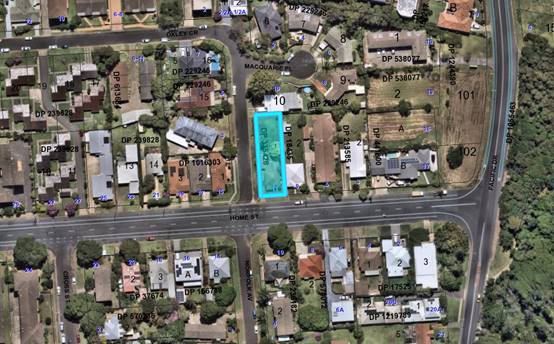
2. DESCRIPTION
OF DEVELOPMENT
Key
aspects of the proposal include the following:
· Demolition
of the existing dwelling, detached garage and garden areas.
· Construction
of 4 attached dwellings and strata subdivision.
Plans
of the proposed development are at the end of this report (Attachment 2).
Application
Chronology
· 22
April 2024 - Application lodged.
· 2 to 15 May 2024 - Public exhibition via neighbour
notification.
· 23 May 2024 - Essential energy comments received.
· 24 May 2024 - Additional information request to show
clearances from electricity infrastructure.
· 7 June 2024 - Additional information response with revised
plans showing clearances to electricity infrastructure.
· 17 July 2024 - Additional information request seeking
clarification on subdivision type proposed and preliminary servicing plans.
· 31 July 2024 - Draft strata plan and preliminary servicing
plans provided.
· 17 October 2024 - Additional information request re gross
floor area calculations and concern that there are no valid planning grounds
for the FSR variation. Appears minor changes could be made to achieve FSR
compliance.
· 8 November 2024 - Meeting with applicant to discuss floor
space ratio. Noted that the building height and floor space ratio controls
don’t appear to correlate. A planning proposal via an LEP amendment would
be appropriate process in seeking a change to these controls. Re-iterated that
compliance with the FSR is not achievable or unreasonable in this instance and
consistent with pre-lodgement advice suggest amending application to achieve
FSR compliance.
· 31 January 2025 - Amended plans submitted.
· 3 February 2025 - Additional information request for
revised SOEE and Clause 4.6 variation report to support amended application.
· 24 March 2025 - Revised SOEE and Clause 4.6 variation
report submitted.
3. STATUTORY
ASSESSMENT
Section
4.15(1) Matters for Consideration
In
determining the application, Council is required to take into consideration the
following matters as are relevant to the development that apply to the land to
which the development application relates:
(a) The
provisions (where applicable) of:
(i) Any
Environmental Planning Instrument
State Environmental Planning Policy (Biodiversity and
Conservation) 2021
Chapter 4 Koala Habitat Protection 2021
Clause 4.4 - This SEPP applies to all non-rural zoned land
within the Port Macquarie-Hastings Local Government Area.
Clause 4.10 - Having considered the SEPP, the
application and on completion of a site inspection, Council is not prevented
from granting consent in this case for the following reasons:
1. The property is not subject to a KPOM, and
2. The site not considered to be core koala habitat.
State
Environmental Planning Policy (Housing) 2021
Chapter
4 Design of residential apartment development
Clause
144 - The proposal includes class 1a attached dwellings only and therefore this
chapter does not apply to the application.
State Environmental Planning Policy (Resilience and
Hazards) 2021
Chapter 2 Coastal Management
Clause 2.5 - This SEPP prevails over the Port
Macquarie-Hastings LEP 2011 in the event of any inconsistency.
The site is located within a coastal use and coastal
environment area.
Having regard to clauses 2.10 and
2.11 of the SEPP the proposed development is not considered likely to result in
any of the following:
a) any
adverse impact on integrity and resilience of the biophysical,
hydrological (surface and groundwater) and ecological environment;
b) any
adverse impacts coastal environmental values and natural coastal
processes;
c) any
adverse impact on marine vegetation, native vegetation and fauna
and their habitats, undeveloped headlands and rock platforms;
d) any
adverse impact on Aboriginal cultural heritage, practices and
places;
e) any
adverse impacts on the cultural and built environment heritage;
f) any
adverse impacts the use of the surf zone;
g) any adverse impact on the visual amenity and scenic qualities of the
coast, including coastal headlands;
h) overshadowing, wind funnelling and the loss of views from public places
to foreshores; and
i) any
adverse impacts on existing public open space and safe access to
and along the foreshore, beach, headland or rock platform for members of the
public, including persons with a disability.
The proposed development is compatible with the surrounding
coastal and built environment. The site is predominately cleared and located
within an area zoned for residential purposes.
Clause 2.12 - The proposal is not likely to cause increased
risk of coastal hazards on the land or other land.
Chapter 4 Remediation of Land
Clause 4.6 - Following an inspection of the site and a
search of Council records, the subject land is not identified as being
potentially contaminated and is suitable for the intended use.
State Environmental Planning Policy (Sustainable
Buildings) 2022
A BASIX certificate has been submitted
demonstrating that the proposal will comply with the requirements of the SEPP.
It is recommended that a condition be imposed to ensure that the commitments
are incorporated into the development and certified at Occupation Certificate
stage.
State Environmental Planning Policy (Transport and
Infrastructure) 2021
Clause 2.48 - Development in proximity to electricity
infrastructure - referral to Essential Energy has been undertaken and the
following comments provided for consideration:
“Strictly based on the documents submitted,
Essential Energy has the following comments to make as to potential safety
risks arising from the proposed development:
· Regarding
any buildings etc, A safe distance of 3.8 metres is required to the
centreline of the High voltage 11000 volt and low voltage 400/230 volt overhead
powerline(s).
· Regarding the
proposed plunge pool, A safe distance of 7.2 meters measured horizontally is
required from, the pool containers closest edge to the centreline of the High
voltage 11000 volt and low voltage 400/230 volt overhead powerline(s)
please refer to page 12 of Essential energys DA guide. DA-guide.pdf (essentialenergy.com.au)
· If wanting to
encroach (come closer than advised above), then the Next Step for the
applicant is, To contact Essential Energy’s network encroachments group using
this link, Encroachments (essentialenergy.com.au)
and provide where applicable supporting documentation, including a report from
a Level 3 Accredited Service Provider calculating the blowout distance of the
powerline (if applicable).
Applicants are advised that fees and charges will apply where
Essential Energy provides this service.
(Please reach out to Essential’s Network
Encroachment team on 132391 for advice),
(Please note Essential Energy’s Network
encroachments team would then provide advice from there forward, Technical
Enquiry’s cannot provide any further site-specific advice/solutions in
the Network encroachments sphere).
Essential Energy makes the following general comments:
1. If
the proposed development changes, there may be potential safety risks and it is
recommended that Essential Energy is consulted for further comment.
2. Any
existing encumbrances in favour of Essential Energy (or its predecessors) noted
on the title of the above property should be complied with.
3. As
part of the subdivision, an easement/s are/is created for any existing
electrical infrastructure (located within the property or adjoining the
property as required). The easement/s is/are to be created using Essential
Energy’s standard easement terms current at the time of registration of
the plan of subdivision. Refer Essential Energy’s Contestable Works Team
for requirements via email contestableworks@essentialenergy.com.au.
4. Council
should ensure that a Notification of Arrangement (confirming satisfactory
arrangements have been made for the provision of power) is issued by Essential
Energy with respect to all proposed lots which will form part of the
subdivision, prior to Council releasing the Subdivision Certificate. It is the
Applicant’s responsibility to make the appropriate application with
Essential Energy for the supply of electricity to the subdivision, which may
include the payment of fees and contributions. Despite Essential Energy not
having any safety concerns, there may be issues with respect to the subdivision
layout, which will require Essential Energy’s approval.
5. In
addition, Essential Energy’s records indicate there is electricity
infrastructure located within close proximity to the property. Any activities
within this location must be undertaken in accordance with the latest industry
guideline currently known as ISSC 20 Guideline for the Management of Activities within
Electricity Easements and Close to Infrastructure. Approval
may be required from Essential Energy should activities within the property
encroach on the electricity infrastructure.
6. Prior
to carrying out any works, a “Dial Before You Dig” enquiry should
be undertaken in accordance with the requirements of Part 5E (Protection of
Underground Electricity Power Lines) of the Electricity Supply Act
1995 (NSW).
7. Given
there is electricity infrastructure in the area, it is the responsibility of
the person/s completing any works around powerlines to understand their safety
responsibilities. SafeWork NSW (www.safework.nsw.gov.au) has
publications that provide guidance when working close to electricity
infrastructure. These include the Code of Practice – Work near
Overhead Power Lines and Code of Practice – Work near
Underground Assets.”
In response to these comments the plans were revised to show
indicative clearances to electricity infrastructure. If the application was to
be approved a consent condition would need to be applied requiring satisfactory
arrangements with Essential Energy be obtained prior to issue of any
construction certificate as to ensure the minimum clearances and any
encroachments are acceptable. Essential Energy have also provided some general
advice. The advice received from Essential Energy has been forwarded to the
applicant for consideration.
State Environmental Planning Policy (Primary Production)
2021
Part 2.5 Division 4 - The proposed development will create
no adverse impact on any oyster aquaculture development or priority oyster
aquaculture area.
Port Macquarie-Hastings Local Environmental
Plan 2011
The proposal is consistent with the LEP having regard to the
following:
· Clause
2.2 - The subject site is zoned R1 General Residential.
· Clause
2.3(1) and the R1 zone landuse table - The proposed development for multi
dwelling housing and strata subdivision is permissible with consent.
The objectives of the R1 zone are as
follows:
• To provide for
the housing needs of the community.
• To provide for
a variety of housing types and densities.
• To enable other
land uses that provide facilities or services to meet the day to day needs of
residents.
Clause 2.3(2) - The proposal is
consistent with the zone objectives having regard to the following:
o Will provide for the housing needs
of the community; and
o Will provide for a variety in
housing type and density.
· Clause
2.7 - The demolition of the existing dwelling and ancillary structures requires
consent as it does not fit within the provisions of SEPP (Exempt and Complying)
2008.
· Clause
4.1 - The minimum 450m2 lot size for subdivision does not apply to the proposal as it proposes
a strata subdivision.
· Clause
4.1A - The minimum lot sizes do not apply to the proposal as it is
characterised as multi dwelling housing development
· Clause
4.3 - The maximum overall height of the building above ground level (existing)
is below and complies with the height limit of 11.5m applying to the site.
· Clause
4.4 - The floor space ratio of the proposal has been assessed as 0.67:1. The
maximum floor space ratio applying to the site is 0.65:1. This represents a
variation of 3% and equates to 12.22m2 of floor area. A clause 4.6 variation
supports the application. Refer to comments below.
· Clause
4.6 - This clause
establishes a degree of flexibility for certain development standards in
particular circumstances, which have demonstrated that a better planning
outcome will occur from that flexibility. In this regard, the proposal seeks a
variation to the floor space ratio standard as identified under Clause 4.4 of
this report. Assistance on the approach to a variation is taken from NSW Land
and Environment Court and NSW Court of Appeal decisions in:
1. Wehbe v Pittwater Council (2007) NSW LEC 827 (Wehbe);
2. Four2Five Pty Ltd v Ashfield Council (2015) NSWLEC 1009;
and
3. Al Maha Pty Ltd v Huajun Investments Pty Ltd (2018) NSWCA
245
The assessment will now step through and address the
requirements of Clause 4.6(3).
Clause 4.6(3) states the following:
4.6(3) Development consent must not be granted to
development that contravenes a development standard unless the consent
authority is satisfied the applicant has demonstrated that:
(a) compliance with the
development standard is unreasonable or unnecessary in the circumstances, and
(b) there are sufficient
environmental planning grounds to justify the contravention of the development
standard.
Comments: The applicant has submitted a document consistent with
clause 35B(2) of the Environmental Planning and Assessment Regulation 2021 to
justify the contravention of the floor space ratio standard for the following
reasons (as summarised):
1. The variation remains
consistent with the objectives of the floor space ratio clause.
2. The variation is minor
and will result in density and traffic generation envisaged for the future
character of the locality.
3. The maximum building
height of 11.5m is not commensurate with the maximum floor space ratio of
0.65:1 applicable to the site.
4. The proposal is
consistent with the objectives of the EPA Act.
5. The proposal is
consistent with the R1 zone objectives and the public benefit of the of the
development standard is not lost or eroded by the proposed development.
In addressing Clause 3(a), Wehbe established
‘five methods’ to test whether compliance with the standard was
unreasonable or unnecessary. They are as follows:
· Establishing that the underlying objective or
purpose is not relevant to the development with the consequence that compliance
is unnecessary.
· Establishing that the underlying objective or
purpose would be defeated or thwarted if compliance was required with the
consequence that compliance is unreasonable.
· Establishing that the development standard has been
virtually abandoned or destroyed by the consent authority’s own actions
in granting consents departing from the standard — and hence compliance
with the standard is unnecessary and unreasonable.
· Establishing that the zoning of particular land was
unreasonable or inappropriate so that a development standard appropriate for
that zoning was also unreasonable or unnecessary — and that compliance
with the standard, in that case, would also be unreasonable or unnecessary.
The objectives of clause 4.4 floor space ratio are:
(a) to regulate density of
development and generation of vehicular and pedestrian traffic,
(b) to encourage increased
building height and site amalgamation at key locations,
(c) to provide sufficient floor
space for high quality development for the foreseeable future,
(d) to ensure that buildings are
compatible with the bulk and scale of the existing and desired future character
of the locality.
Having regard to the ‘five methods’ and
objectives of the floor space ratio clause the following comment is provided:
1. The main underling
objective of the standard is to regulate density and ensure the bulk and scale
of buildings is compatible with existing and future character of the locality.
In this regard adoption of the maximum 0.65:1 floor space ratio has established
the expectation for future character, building bulk and scale on this site and
the immediate locality. It is considered that the underlying objectives of the
floor space ratio standard are not achieved.
2. There are no examples
of departures from the floor space ratio standard in the immediate locality to
suggest abandonment of the standard and that compliance is unreasonable or
unnecessary.
3. There are no specific
site constraints as to why compliance with the standard is unreasonable or
necessary in this circumstance.
4. Some minor changes
could be made to the development design to reduce the floor area of the
development by 12.22m2 so as to achieve compliance with the floor space ratio
standard.
In addressing Clause 3(b) and whether there are sufficient
environmental planning grounds to justify contravening the development
standard, the following comments are provided:
1. The proposed
development does not meet the objectives of floor space ratio standard.
2. While only minor, the
floor space ratio variation will result in a development which is out of
character and incompatible with the bulk and scale of development envisioned
for the immediate locality.
3. Allowing the floor
space ratio variation would lead to similar applications with variations that
will incrementally erode and undermine the planning objective of the locality.
4. There are no specific
site constraints or environmental planning grounds to justify contravention of
the floor space ratio standard in this instance.
5. Some minor changes
could readily be made to the development design to reduce the floor area of the
development by 12.22m2 to achieve compliance with the floor space ratio
standard. In this instance it is not considered to be unreasonable or
unnecessary to comply with the development standard.
6. The justification
provided by the applicant is not supported by the assessing officer.
On the basis of the above, it is considered that compliance
with the floor space ratio development standard is not unreasonable or
unnecessary in the circumstances. There are insufficient planning grounds to
justify the contravention of the floor space ratio development standard.
Having regard to the above, it is recommended that the floor space ratio
variation using clause 4.6 not be supported and on this basis the application
be refused.
·
Clause 4.6(4) states that the consent
authority must keep a record of its assessment carried out under subclause (3).
· Clause
5.10 - The site does not contain or adjoin any known heritage items or sites of
significance.
· Clause
7.13 - Satisfactory arrangements are in place for provision of essential
services including water supply, electricity supply, sewer infrastructure,
stormwater drainage and suitable road access to service the development.
(ii) Any draft
instruments that apply to the site or are on exhibition
No draft instruments apply.
(iii) Any Development
Control Plan in force
Port
Macquarie-Hastings Development Control Plan 2013
|
DCP 2013: Part B - General
Provisions - B2: Environmental Management
|
|
DCP Objective
|
Development Provisions
|
Proposed
|
Complies
|
|
3
|
a) Development must comply
with Council’s Developments, Public Place & Events - Waste
Minimisation and Management Policy.
|
Six units are proposed and
consistent with the waste services policy adequate street frontage is
available for the proposed kerbside collection arrangement.
|
Yes
|
|
Cut and Fill Regrading
|
|
4
|
a) Development shall not
exceed a maximum cut of 1.0m and fill of 1.0m measured vertically above the
ground level (existing) at a distance of 1.0m outside the perimeter of the
external walls of the building (This does not apply to buildings where such
cut and fill is fully retained within or by the external walls of the
building).
|
A maximum cut of
approximately 1.3m is proposed in the north-eastern corner of the site.
|
No*
|
|
5
|
a) A certified practicing
structural engineer must certify any retaining wall greater than 1.0m.
|
Conditions can be applied
requiring engineering certification for retaining walls greater than 1m in
height.
|
Yes
|
|
b) Where a combination of a
fence and a wall is proposed to be greater than 1.2m high:
- be a
maximum combined height of 1.8m above existing property boundary level;
- be
constructed up to the front boundary for a maximum length of 6.0m or 30% of
the street frontage, whichever is less;
− the
fence component has openings which make it not less than 25% transparent; and
− provide
a 3m x 3m splay for corner sites, and
- provide a
900mm x 900mm splay for vehicle driveway entrances.
|
No front fence and
retaining wall combinations are proposed.
|
N/A
|
|
Tree Management - Land to
which State Environmental Planning Policy SEPP (Vegetation in Non-Rural
Areas) 2017 Applies
|
|
10
|
a) Prescribed vegetation for
the purposes of Chapter 2, Vegetation in Non- Rural Areas of the SEPP
(Biodiversity and Conservation) 2021 is any tree identified in Table 1 and
any tree on land that is:
- 3m
or higher in height, or
- has
a trunk diameter of 100mm at 1m above ground level; or
- a
hollow bearing tree, or
- a
mangrove, or cycad, or
- is
a Norfolk Island Pine (Araucaria heterophylla), or
- a
threatened species or
- a
threatened ecological community as listed under the Biodiversity
Conservation Act 2016 or Environment Protection and Biodiversity
Conservation Act 1999.
|
The removal of existing
planted ornamental trees is proposed. No native vegetation exists on the
site.
|
Yes
|
|
b) The above criteria does not
apply to a tree where the nearside trunk is 5m from the nearest external wall
of an existing, permanent dwelling or manufactured home and is located within
the same property. Such trees may be removed without a permit or development
consent. This provision does not apply to areas mapped as Core Koala Habitat
under the LEP, or areas identified as containing a threatened ecological
community. A permit will be required in these instances.
|
N/A
|
N/A
|
|
Tree Management –
Private Land
|
|
11
|
a) Pruning must be undertaken
in accordance with Australian Standard AS 4373 - Pruning of Amenity Trees.
|
No pruning proposed or
required.
|
N/A
|
|
b) An application for the
removal of a tree listed in Table 1 must be accompanied by an
Arborist’s report
stating that the tree:
- is
dangerous; or
- is dying
and remedial pruning would not improve the deteriorated condition of the
tree; or
- has a
history of branch fall (documented or photographic evidence to be provided);
or
- is
structurally unsound or;
- diseased.
- Advice on the
requirement of an arborist report associated with a tree removal permit can
be obtained from Council’s Tree Assessment staff.
- The
requirement for an arborist report for tree removal associated with a
development application will be determined on merit by Council’s
Development Assessment.
|
No trees listed in table 1
exist on the site.
|
N/A
|
|
c) Where a tree listed in
Table 1 is approved for removal it must be compensated with 2 x koala habitat
trees. Significant large-scale development will require an advanced size
koala food tree or habitat tree (primary Koala browse species) that meets AS2303:2015
Tree Stock for Landscape Use. The compensation tree is to be planted in a
suitable location as determined by the Director of Development and
Environment or their delegate.
|
Not proposed.
|
N/A
|
|
d) Removal of dead branches
including palm fronts and the selective removal of branches up to and
including a diameter of 50mm may be undertaken without a permit or
development consent where the removal:
- Does not alter
the canopy of the tree, and
- Does not
destroy the aesthetic appearance of the tree canopy; and
- Does not
alter the growth structure of the tree, and
- − Is
carried out in accordance with Australian Standard AS 4373 - Pruning of
Amenity Trees.
|
Not proposed or required.
|
N/A
|
|
e) The pruning of large garden
shrubs in excess of 3 metres in height for the purpose of ornamental shaping
is permitted without a permit or development consent.
|
N/A
|
N/A
|
|
f) Where a development is
proposed adjoining Council controlled land, the plans must identify all trees
that fall within 6.0m of the property boundary and any trees proposed to be
removed, identified on that plan.
|
No trees exist on adjoining
road reserve.
|
N/A
|
|
g) Any pruning or removal of
any tree on private land must be undertaken in accordance with
Council’s tree management specifications.
|
Removal of the planted
ornamental trees can be removed in accordance with tree management
specifications.
|
Yes
|
|
h) A tree removal permit can
be sought for tree removal associated with a Complying Development
Certificate (CDC), subject to the tree removal meeting the following
criteria:
- Must be
associated with CDC and removal must not occur until CDC issued.
- Application
must identify and locate all trees within proximity to the development.
- No more
than 3 trees over 6m in height to be removed. Trees taken to be impacted on
by the development are to be determined in accordance with AS 4970 -
Protection of trees on development sites (i.e 12 x DBH tree protection zone
required for those trees to be retained).
- Must not
involve removal of hollow bearing trees.
- The removal
of any koala browse tree species are to be replaced at a ratio of 2:1 on site
or at a secure off site location agreed to by Council. Any on site replanting
is to have regard for services and buildings and is to be agreed to by
Council.
|
N/A
|
N/A
|
|
DCP 2013: Part B- General
Provisions- B4: Transport, Traffic Management, Access and Car Parking
|
|
DCP Objective
|
Development Provisions
|
Proposed
|
Complies
|
|
Road Hierarchy
|
|
23
|
a) New direct accesses from a
development to arterial and distributor roads is not permitted. Routes should
differ in alignment and design standard according to the volume and type of
traffic they are intended to carry, the desirable traffic speed, and other
factors.
|
No new roads proposed.
|
N/A
|
|
b) Existing direct accesses
from a development to arterial and distributor roads are rationalised or
removed where practical.
|
Home Street and Oxley
Crescent are not arterial or distributor roads.
|
N/A
|
|
c) Vehicle driveway crossings
are minimal in number and width (while being adequate for the nature of the
development), and positioned:
− to
avoid driveways near intersections and road bends, and
− to
minimise streetscapes dominated by driveways and garage doors, and
− to
maximise on-street parking.
|
The proposal incorporates
removal of the existing crossover near the intersection on Home Street and
construction of 2 new combined crossovers on Oxley Crescent.
|
Yes
|
|
Parking Provision
|
|
24
|
a) Off-street Parking is
provided in accordance with Table 3.
1 parking space per each 1 or
2 bedroom unit
1.5 spaces per each 3 or 4
bedroom unit
+ 1 visitor’s space per
4 units.
|
The proposal incorporates 2
x 2-bedroom units and 2 x 3-bedroom units. Total of 6 units.
Parking required equates to
2 + 3 = 5 resident spaces + 1 visitor space.
Parking proposed
incorporates a single garage to each unit with a stacked space in front of
each garage. Only stacked visitor spaces are to be include in the assessment
of parking provision. Therefore, a total of 4 resident spaces and 3 visitor
spaces are proposed. Technically the proposal is 1 resident space short
having regard to the parking provisions in table 3.
|
No*
|
|
b) Where a proposed
development does not fall within any of the listed definitions, the provision
of on-site parking shall be supported by a parking demand study.
|
N/A
|
N/A
|
|
c) Where a proposed
development falls within more than one category Council will require the
total parking provision for each category.
|
N/A
|
N/A
|
|
25
|
a) A development proposal to
alter, enlarge, convert or redevelop an existing building, whether or not
demolition is involved, shall provide the total number of parking spaces
calculated from the schedule for the proposed use, subject to a credit for
any existing deficiency, including any contributions previously accepted in
lieu of parking provision.
|
N/A
|
N/A
|
|
26
|
a) On street parking, for the
purposes of car parking calculations will not be included unless it can be
demonstrated that:
− there
is adequate on street space to accommodate peak and acute parking demands of
the area;
− parking
can be provided without compromising road safety or garbage collection
accessibility;
− parking
can be provided without jeopardising road function; and
− that
streetscape improvement works, such as landscaped bays and street trees are
provided to contribute to the streetscape.
|
While the proposal is not
reliant upon on street parking it is noted that removal of the existing
crossover on Home Street will provide additional street parking opportunity.
|
N/A
|
|
b) On street parking is
provided in accordance with AS2890.5.
|
N/A
|
N/A
|
|
27
|
a) On street parking will not
be permitted unless it can be demonstrated that:
− parking
does not detract from the streetscape; and
− that
streetscape improvement works, such as landscaped bays and street trees are
provided.
|
N/A
|
N/A
|
|
Parking Layout
|
|
28
|
a) Visitor and customer
parking shall be located so that it is easily accessible from the street.
|
Visitor parking in front of
each garage is easily accessible from the street.
|
Yes
|
|
b) Internal signage (including
pavement markings) should assist customers and visitors to find parking and
circulate efficiently and safely through a car park.
|
The parking spaces are
clearly visible and internal signage not required in this instance.
|
Yes
|
|
c) Parking spaces shall
generally be behind the building line but may be located between the building
line and the street when:
− it
is stacked parking in the driveway; or
− it
can be demonstrated that improvements to the open space provided will result;
and
− the
spaces are screened (densely landscaped or similar) from the street by a
landscaping with a minimum width of 3.0m for the entire length of the parking
area.
|
The parking spaces in front
of the building line are stacked spaces in the driveways.
|
Yes
|
|
d) Parking design and layout
is provided in accordance with AS/NZS 2890.1 - Parking facilities -
Off-street car parking and AS 2890.6 - Off-street parking for individuals
with a disability and AS/NZS 2890.2 - Parking facilities - Off-street
commercial vehicle facilities.
|
Capable of compliance.
|
Yes
|
|
e) Stack or tandem parking
spaces will not be included in assessment of parking provision
except where:
− the
spaces are surplus to that required;
− in
motor showrooms;
− for
home business;
− for
exhibition homes;
− in
car repair stations;
− staff
parking spaces are separately identified and delineated;
− it
is visitor parking associated with a dual occupancy multi dwelling and/or
terrace housing, directly in front of the garage with a minimum depth of
5.5m.
|
Three (3) of the proposed
stacked spaces in the driveway are visitor spaces. One (1) of the proposed
stacked spaces in front of the driveway is a resident parking space which is
inconsistent with this provision.
All stacked spaces are a
minimum of 5.5m in depth.
|
No*
|
|
29
|
a) Parking is provided in
accordance with AS/NZS 2890.1 - Parking facilities - Off-street car parking,
AS/NZS 2890.2 - Parking facilities - Off-street commercial vehicle
facilities, AS 1428 - Design for access and mobility and AS 2890.6 -
Off-street parking for individuals with a disability.
|
Capable of compliance.
|
Yes
|
|
30
|
a) Bicycle and motorcycle
parking shall be considered for all developments.
|
Areas exist within ground
floor to facilitate bicycle and motorcycle parking.
|
Yes
|
|
b) Bicycle parking areas shall
be designed generally in accordance with the principles of AS2890.3 - Parking
facilities - Bicycle parking facilities.
|
Areas exist within ground
floor to facilitate bicycle and motorcycle parking.
|
Yes
|
|
c) Motorcycle parking areas
shall be 1.2m (wide) x 2.5m (long).
|
Areas exist within ground
floor to facilitate bicycle and motorcycle parking.
|
Yes
|
|
Landscaping of Parking
Areas
|
|
33
|
a) Landscaping areas shall be
provided in the form of large tree planting, understorey plantings, mulch
areas, mounding, lawns and the like
|
Parking areas are confined
to the garage and driveways. Adequate landscaping is proposed in and around
these areas.
|
Yes
|
|
b) Landscaping areas shall be
used throughout the car park and on the perimeters of the property where it
addresses the public domain.
|
Parking areas are confined
to the garage and driveways. Adequate landscaping is proposed in and around
these areas.
|
Yes
|
|
c) Garden beds shall be a
minimum of 3m in width between car parking areas and street boundaries.
|
N/A
|
N/A
|
|
34
|
a) All plantings on public
lands are to be selected from Council’s Indigenous Street and Open
Space Planting List from the relevant vegetation community adjacent to the
Development.
|
Plantings proposed within
the road reserve can be consistent with the plantings list. Details to be
provided as part of the s138 road act application.
|
Yes
|
|
b) Trees are to be grown and
installed in accordance with AS 2303:2015 Tree Stock for Landscape Use and
Council’s AUS-SPEC design specifications.
|
Per above.
|
Yes
|
|
|
Surface Finishes
|
|
|
|
35
|
a) All parking and manoeuvring
areas shall be constructed with a coarse base of sufficient depth to suit the
amount of traffic generated by the development, as determined by Council. It
shall be sealed with either bitumen, asphaltic concrete, concrete or
interlocking pavers.
Preliminary details of
construction materials for access and car parking areas shall be submitted
with the development application. Detailed plans shall be prepared for the
construction certificate by a practising qualified Civil Engineer.
|
Parking and driveway areas
are proposed to be concrete.
|
Yes
|
|
b) In special cases (e.g.
where traffic volumes are very low) Council may consider the use of
consolidated unsealed gravel pavement for car parks. However, this should not
be assumed and will need to be justified by the applicant at the Development
Application stage.
|
N/A
|
N/A
|
|
|
Drainage
|
|
|
|
36
|
a) All parking and manoeuvring
spaces must be designed to avoid concentrations of water runoff on the
surface.
|
Stormwater is capable of
being managed. Details to be provided as part of s69 plumbing drainage
application.
|
Yes
|
|
b) Council will not permit the
discharge of stormwater directly into kerbing and guttering or table drains
for any development other than that of a minor nature.
|
Noted.
|
Yes
|
|
|
|
|
|
|
DCP 2013: Part B - General Provisions - B5: Social Impact
Assessment and Crime Prevention
|
|
DCP Objective
|
Development Provisions
|
Proposed
|
Complies
|
|
Social Impact Assessment
|
|
42
|
a) A social impact assessment
shall be submitted in accordance with the Council’s Social Impact
Assessment Policy.
|
The proposal does not
trigger the requirement for a social impact assessment.
|
Yes
|
|
Crime Prevention
|
|
43
|
a) The development addresses
the generic principles of crime prevention:
- Casual surveillance and
sightlines;
- Land use mix and
activity generators;
- Definition of use and
ownership;
- Basic exterior building
design;
- Lighting;
- Way-finding; and
- Predictable routes and
entrapment locations;
- as described in the
Crime Prevention Through Environmental Design (CPTED) principles.
|
No concealment or entrapment areas proposed. Adequate
casual surveillance to the public domain is available from the first and
second floors of the development.
The private and public domain is clearly defined with
fencing at ground level.
|
Yes
|
|
DCP 2013: Part C -
Development Specific Provisions - C1: Low Density Residential Development
|
|
DCP Objective
|
Development Provisions
|
Proposed
|
Complies
|
|
Front Setbacks
|
|
44
|
a) Dwellings may incorporate an articulation zone to a
street frontage at no less than 3m from property boundary. The
following building elements are permitted within the articulation zone:
- an entry feature or
portico;
- a balcony, deck, patio,
pergola, terrace or verandah;
- a window box treatment;
- a bay window or similar
feature;
- an awning or other
feature over a window;
- a sun shading feature.
b) These building elements should not extend above the
eave gutter line, other than a pitched roof to an entry feature or portico
that has the same pitch as the roof on the dwelling house.
|
The first-floor terraced landscaping and blockwork
screening is located within the articulation zone to Home Street and is
setback approximately 3.5m and 4.2m respectively.
|
Yes
|
|
c) The primary road front setback shall be:
Primary frontage = 4.5m
Secondary frontage = 3.0m
|
4.5m setback to building wall from Home Street frontage.
Home Street considered the primary frontage as it has the higher volume of
traffic.
3m setback to building wall from Oxley Crescent being the
secondary frontage.
|
Yes
Yes
|
|
45
|
a) A garage, carport or car parking space should:
- be at least 1m behind the
building line, where the dwelling(s) has a setback from a front boundary of
4.5m or more, or
- be at least 5.5m from a front
boundary, where the dwelling(s) has a setback of less than 4.5m.
|
The garage to each dwelling is at least 1m behind the
building line.
The parking spaces in front of the garage extend slightly
forward of the building line however are greater than 5.5m in depth from the
front boundary.
|
Yes
No*
|
|
b) The total width of the garage/carport openings should
not be more than 6m and not more than 50 per cent of the width of the
building.
|
The garage doors are no greater than 6m in width and not
more than 50% of the width of the buildings.
|
Yes
|
|
c) Driveway crossovers are no greater than 5.0m in width.
|
The proposed combined crossovers are 5.5m in width. There
appears to be no reason why the crossovers cannot be reduced to a maximum of
5m in width. If approval was granted a condition has been recommended
requiring the driveway crossovers to be reduced to a maximum of 5m in width
at the boundary.
|
Yes subject to conditioning.
|
|
d) Where a dual occupancy or attached dwelling is proposed
on a corner lot a garage and driveway is provided on each road frontage.
|
No dual occupancy proposed.
|
N/A
|
|
Side and Rear Setbacks
|
|
46
|
a) A minimum rear boundary setback of 4m is to be provided
to dwellings (including verandahs, patios and decks).
|
The site is a corner lot with no rear setback requirement.
|
N/A
|
|
b) A minimum rear boundary setback of 900mm applies to
sheds and swimming pools subject to achieving minimum required private open
space area.
|
N/A
|
N/A
|
|
c) Council may consider varying rear setback requirements
where it is demonstrated that the private open space could achieve better
solar access between the building and the side setback. In that instance, one
side setback should be a minimum 4m in width (for an equivalent length of
rear boundary, behind building line) and the rear setback may be reduced to
900mm.
|
N/A
|
N/A
|
|
47
|
a) Ground floors (being <1m above existing ground
level) should be setback a minimum of 900mm from side boundaries.
|
East side ground floor 900mm.
North side ground floor 4.005m
|
|
|
b) First floors and above (including single storey with
floor level >1m) should be setback a minimum of 3m from the side boundary,
or reduced down to 900mm where it can be demonstrated that the adjoining
property’s primary living rooms and principal private open space areas
are not adversely overshadowed for more than 3hrs between 9am - 3pm on 21
June.
|
Upper levels east side 2m setback with shadow diagrams
demonstrating that the adjoining property’s primary living rooms and
principal private open space areas are not adversely overshadowed for more
than 3hrs between 9am - 3pm on 21 June.
Upper levels north side 4.005m setback.
|
Yes
Yes
|
|
c) First floors and above should have building walls that
step in and out at least every 12m by a minimum of 500mm articulation. Where
first floors and above are setback >3m, wall articulation is not required.
|
The first floor was a central unarticulated wall length of
12.4m facing east.
|
No*
|
|
Private Open Space
|
|
48.
|
a) All dwellings should have a minimum area of private
open space of 35m2, which includes a principal private open space area
with:
- a minimum dimension of
4m x 4m, and
- a maximum grade of 5%
for minimum 4m x 4m of the total open space requirement, and
- direct accessibility
from a ground floor living area and orientated to maximise use.
|
Each unit is provided with a minimum of 35m2 private open
space which incorporate a directly accessible 4m x 4m area from living areas.
|
Yes
|
|
|
b) Private open space may include clothes drying areas and
garbage storage.
|
Noted.
|
Yes
|
|
Public Domain and Fencing
|
|
49
|
a) Front fences built forward of the building line for the
primary road frontage should be detailed on the development application
plans.
|
Front fencing is illustrated on the plans.
|
Yes
|
|
b) Solid Front fences up to 1.2m high should be:
- Setback 1.0m from the
front boundary, and
- Suitably landscaped to
reduce visual impact, and
- Provide a 3m x 3m splay
for corner sites.
|
N/A
|
N/A
|
|
b) Front fences proposed to be more than 1.2m high should be
a maximum of 1.8m in height, above existing front property boundary level,
and either:
- Include landscaped
recesses having minimum dimensions of 1.8m long x 900mm deep which occupy no
less than 50% of the total length of the fence, or
- be
erected up to the front boundary for a maximum length of 6.0m or 50% of the
street frontage,
|
Solid masonry front fencing variable in height from 1.6 to
2.41m in height is proposed.
No landscapes recesses are proposed rather landscaping in
front of the fencing within the road reserve.
Having regard to the solid nature, height and length of
fencing proposed along the Home Street frontage it is considered that the
fence on this frontage should incorporate landscape recesses. If approval was
granted condition is recommend ensuring openings are incorporated.
|
Yes subject to conditions.
|
|
c) have openings which make it not less than 25%
transparent (no individual opening more than 30mm wide);
|
No openings are illustrated on the plans. If approval was
granted condition is recommend ensuring openings are incorporated.
|
Yes subject to conditions.
|
|
d) provide a 3m x 3m splay for corner sites, and
|
Curved 3m splay is provided on the corner.
|
Yes
|
|
e) provide a 900mm x 900mm splay for vehicle driveway
entrances.
|
No fencing against driveways.
|
N/A
|
|
Bulk and Scale
|
|
51
|
a) Direct views between indoor living rooms and principal
private open space of adjacent dwellings, including proposed dwellings
approved on adjoining lots, including possible dwellings on future lots,
should be obscured or screened where:
- Ground and first floor
(and above) indoor living room windows are within a 9m radius.
- Direct views between
principal private open space areas where within a 12m radius.
- Direct views between
indoor living rooms of dwellings into the principal area of private open
space of other dwellings within a 12m radius.
|
1.8m boundary and front fencing screens views from ground
floor living and open space areas.
There are no other views identified within 9m or 12m to
adjoining dwellings from primary living areas.
It is noted that an east view from first floor
terrace/lawn areas of units 11C and 11B is screened with 2m high shrub
plantings indicated on the landscape plan.
The terraces on the second floor incorporate solid side
walls and arches to protect privacy between units and the existing adjoining
dwelling to the north.
|
Yes
|
|
b) A balcony, deck, patio, pergola, terrace or verandah
should have a privacy screen where there are direct views of:
- Indoor living room
windows of adjacent dwellings, including proposed dwellings approved on
adjoining lots within 9m radius; or
- Principal areas of
private open space of adjacent dwellings, including proposed dwellings
approved on adjoining lots within a 12m radius.
|
It is noted that an east view from first floor
terrace/lawn areas of units 11C and 11B is screened with 2m high shrub
plantings indicated on the landscape plan.
The terraces on the second floor incorporate solid side
walls and arches to protect privacy between units and the existing adjoining
dwelling to the north.
|
Yes
|
|
c) Privacy protection is
not required for:
- Any Indoor living room
windows with a sill height of greater than 1.5m above the finished floor
level of that room or where fixed non-openable translucent glass is installed
to the same height.
|
Noted.
|
N/A
|
|
d) Direct views described above may be reduced or obscured
by one of the following measures (details to be submitted with the
development application):
- 1.8m high fence or wall
between ground-floor level windows or between a dwelling and principal
private open space
- Screening of minimum
1.7m height, that has 25% openings (max), with no individual opening more
than 30mm wide, is permanently fixed and is made of durable materials.
- A window,
the whole of which has translucent glass and is not able to be opened.
|
Refer to comments above. Suitable screening and fencing is
proposed.
|
Yes
|
|
Ancillary Development
|
|
56
|
a) For ancillary development in R1 General Residential, R2
Low Density Residential, R3 Medium Density Residential, R4 High Density
Residential, R5 Large Lot Residential and RU5 Village zones:
- The height of an
outbuilding or the alterations and additions to an existing outbuilding on a
lot should not be more than 4.8m above ground level (existing).
- The building should be
single storey construction with a maximum roof pitch of 24 degrees.
- The maximum area of the
building should be 60m2 for lots less than 900m² and maximum of
100m² for larger lots.
- Ancillary development
that is a garage, or an outbuilding, or a rainwater tank should not be
located in front of the main building line with the exception of swimming
pools.
|
No outbuildings proposed. Swimming pools are proposed and
allowed in front setback.
|
Yes
|
The proposal seeks a variation to
provision 4 which prescribes that development shall not exceed cut of 1m
outside the perimeter of the external walls of the building. The proposal
incorporates cut to 1.3m along the boundary in the north-eastern corner of the
site outside the perimeter of the building walls.
The objectives of provision 4 are
as follows:
· Minimise the extent of site disturbance caused by excessive
cut and fill to the site.
· Ensure there is no damage or instability to adjoining
properties caused by excavation or filling.
· Ensure that there is no adverse alteration to the drainage
of adjoining properties.
· Ensure the privacy of adjoining dwellings and private open
space are protected.
· Ensure that adequate stormwater drainage is provided around
the perimeter of buildings and that overflow paths are provided.
Having regard for the development provisions and relevant
objectives, the variation is considered acceptable for the following reasons:
· Owing to the site topography,
the cut is proposed to provide for a balanced levels across the development
site.
· The proposed cut
would be retained with engineered retaining wall.
· The proposed area
of cut is considered minimal and does not represent excessive cut or site
disturbance.
· Stormwater
drainage is capable of being managed in the retaining wall design.
The proposal seeks a variation to
provision 24 which requires off-street parking be provided in accordance with
the parking demand rates identified in table 3 of the plan. Specifically, the
plan requires 5 resident spaces and 1 visitor space. The proposal incorporates
4 resident spaces and 3 visitor spaces.
The objectives of provision 24 is
as follows:
· To ensure adequate provision is made for off-street parking
commensurate with volume and turnover of traffic likely to be generated by the
development.
· To ensure no adverse impacts on traffic and road function.
Having regard for the development provisions and relevant
objectives, the variation is considered acceptable for the following reasons:
· Each dwelling will
be provided with in essence 2 parking spaces. These spaces can be utilised by
either residents or visitors of each unit which is commensurate with the
anticipated volume and turnover of traffic likely to be generated by the
development.
· The proposed
parking arrangement will have no adverse impact on traffic and road function.
The proposal seeks a variation to
provision 28 which prescribes that stack or tandem spaces will not be included
in assessment of parking provision except where it is surplus to that required
or it is visitor parking associated with multi dwelling housing, directly in
front of the garage with a minimum depth of 5.5m.
The objectives of provision 28 is
as follows:
· Parking areas and access-ways are easy and safe to use by
vehicles and pedestrians without conflict.
Having regard for the development provisions and relevant
objectives, the variation is considered acceptable for the following reasons:
· Each dwelling will
be provided with in essence 2 parking spaces.
· The parking
arrangement will provide for safe use by vehicles and not result in any
pedestrian conflict.
The proposal seeks a variation to
provision 45 which prescribes that parking spaces should be at least 1m behind
the building line. The proposal incorporates stacked parking spaces that extend
slightly forward of the building line. The provision prescribes that driveway
crossovers are no greater than 5m in width. The proposal incorporates 2
driveway crossovers of 5.5m in width.
The objectives of provision 45 is
as follows:
· To minimise the impact of garages and driveways on the
streetscape, on street parking and amenity.
· To minimise the visual dominance of garages in the
streetscape.
· To provide safe and functional vehicular access.
Having regard for the development provisions and relevant
objectives, the variation for the stacked spaces is considered acceptable for
the following reasons:
· The parking spaces
slightly forward of the main building line are open and predominantly located
underneath the first-floor landscaped terrace. There will be no adverse impact
upon the streetscape and amenity.
· The parking spaces
are open, predominately located underneath a landscaped terrace and do not
incorporate any garage doors or the like that would ordinarily create and
visual dominance in the streetscape.
· The parking
arrangement will provide for safe and functional vehicle access.
The proposal seeks a variation to
provision 47 which prescribes that first floors and above, which are setback
closer than 3m, should have buildings walls that step in and out at least every
12m by a minimum of 500mm articulation. The proposal incorporates a central
12.4m unarticulated wall on the first floor facing east.
The objectives of provision 47 is
as follows:
· To reduce overbearing and perceptions of building bulk on
adjoining properties.
Having regard for the development provisions and relevant
objectives, the variation is considered acceptable for the following reasons:
· The wall
incorporates two small bathroom windows with privacy screening and is partly
screened by the landscaped terrace.
· The extent of the
variation (400mm) is minor and will not result in any significant overbearing
and perception of building bulk on the adjoining property.
Based on the above assessment, the variations proposed to
the provisions of the DCP are considered acceptable and the relevant objectives
have been satisfied. Cumulatively, the variations do not amount to an
adverse impact of a significance that would justify refusal of the application.
(iiia) Any planning agreement that has
been entered into under section 7.4, or any draft planning agreement that a
developer has offered to enter into under section 7.4
No planning agreement has been
offered or entered into relating to the site.
(iv) Any
matters prescribed by the Regulations
Demolition of buildings AS 2601 - Clause 61
Demolition work on the site is capable of compliance with
this Australian Standard and is recommended to be conditioned.
(b) The likely
impacts of that development, including environmental impacts on both the
natural and built environments, social and economic impacts in the locality
Context and Setting
The site is located on the corner of Home Street and Oxley
Crescent.
Adjoining the site immediately to the north is residential
development typically comprising two storey
dwellings.
Adjoining the site immediately to the east is a single
storey residential development.
Adjoining the site to the south is Home Street with
residential development typically comprising two storey dwellings
beyond.
Adjoining the site to the west is Home Street with
residential development typically comprising single storey and two storey
dwellings or units.
The proposal will not have any significant adverse impacts
to existing adjoining properties and satisfactorily addresses the public
domain.
The proposal does not have a significant adverse impact on
existing view sharing.
The proposal does not have significant adverse lighting
impacts.
There are no significant adverse privacy impacts. Adequate
building separation is proposed/existing.
There are no significant adverse overshadowing impacts. The
proposal does not prevent adjoining properties from receiving 3 hours of
sunlight to private open space and primary living areas on 21 June between the
hours of 9am and 3pm.
Roads
The site has road frontages to Oxley Crescent and Home
Street, Port Macquarie. These are sealed public roads under the care and
control of Council. Both streets are classified as Local roads. All 4 garages
for the development will have direct access onto Oxley Crescent, via 2 shared
driveways (11A & 11B and 11C & 11D). Oxley Crescent has a 7m wide
carriageway, within a 15m wide road reserve. There is SA profile (up-right)
kerb and gutter present in the street, with on-street parking available. There
is also an existing give way sign and a painted yield line for vehicles
approaching the Home Street intersection.
Immediately adjacent to the site, Home Street has a 17m wide
carriageway, within a 27m wide road reserve. There are painted, on-street
bicycle lanes within the carriageway on both sides of the street. There is also
SA profile kerb and gutter and on-street parking available.
Traffic and Transport
The site is currently approved for residential use permitted
to generate 7 daily trips. This development proposes to generate 28 daily
trips. The addition in traffic associated with the development is unlikely to
have any adverse impacts to the existing road network within the immediate
locality.
Site Frontage and Access
Vehicle access to the site is proposed through 2 shared
driveways with direct frontage onto Oxley Crescent. Access shall comply with
Council AUSPEC and Australian Standards, and conditions have been recommended
to reflect these requirements.
Parking and Manoeuvring
A total of 4 parking spaces have been provided on-site
within garages, with an additional 4 parking spaces available within each
driveway. Two shared driveways have been proposed, with the widths limited to
ensure on-street parking opportunities are maximised. The plans demonstrate
that the property frontage can accommodate approximately seven on-street
parking spaces. Parking and driveway widths on site are capable of complying
with relevant Australian Standards (AS 2890) and conditions have been recommended
to reflect these requirements
Water Supply Connection
Water Supply is available to the site. A Section 306 Notice
of Requirements will be required from the water authority prior to the issue of
a Construction Certificate, and a Section 307 Certificate will be required at
the completion of work and prior to the issue of an Occupation Certificate and
Strata Certificate.
Appropriate conditions are recommended in this regard.
Sewer Connection
Sewer is available to the site. A Section 306 Notice of
Requirements will be required from the water authority prior to the issue of a
Construction Certificate, and a Section 307 Certificate will be required at the
completion of work and prior to the issue of an Occupation Certificate and
Strata Certificate.
Appropriate conditions are recommended in this regard.
Stormwater
The site naturally grades towards the street frontage of
Oxley Crescent/ Home Street and is currently serviced via an existing kerb
outlet to Home Street.
The legal point of discharge for the proposed development is
defined as a direct connection to Council’s stormwater pit within Oxley
Crescent, near the corner of Home Street.
Stormwater from the proposed development is planned to be
disposed via Council’s stormwater pit within Oxley Crescent, which is
consistent with the above requirements.
A detailed site stormwater management plan will be required
to be submitted for assessment with the S.68 application and prior to the issue
of a Construction Certificate. In accordance with Councils AUSPEC requirements,
the following must be incorporated into the stormwater drainage plan:
· On
site stormwater detention facilities
Appropriate conditions are recommended in this regard.
Other Utilities
Telecommunication and electricity services are available to
the site.
Heritage
No known items of Aboriginal or European heritage
significance exist on the property. No adverse impacts anticipated.
Other land resources
The site is within an established urban context and will not
sterilise any significant mineral or agricultural resource.
Water cycle
The proposed development will not have any significant
adverse impacts on water resources and the water cycle.
Soils
The proposed development will not have any significant
adverse impacts on soils in terms of quality, erosion, stability and/or
productivity subject to a standard condition requiring erosion and sediment
controls to be in place prior to and during construction.
Air and microclimate
The construction and/or operations of the proposed
development will not result in any significant adverse impacts on the existing
air quality or result in any pollution. Standard precautionary site management
condition recommended.
Flora and fauna
Construction of the proposed development will not require
any removal/clearing of any native vegetation and therefore does not trigger
the biodiversity offsets scheme. Part 7 of the Biodiversity Conservation
Act 2016 is considered to be satisfied.
Waste
Satisfactory arrangements are in place for proposed storage
and collection of waste and recyclables. No adverse impacts anticipated.
Standard precautionary site management condition recommended.
Energy
The proposal includes measures to address energy efficiency
and will be required to comply with the requirements of BASIX. No adverse
impacts anticipated.
Noise and vibration
The construction and/or operations of the proposed
development will not result in any significant adverse impacts on the existing
air quality or result in any pollution. Standard precautionary site management
condition recommended.
Bushfire
The site is not identified as being bushfire prone.
Safety, security and crime prevention
The proposed development will be unlikely to create any concealment/entrapment
areas or crime spots that would result in any identifiable loss of safety or
reduction of security in the immediate area. Adequate casual surveillance is
available.
Social impacts in the locality
Given the nature of the proposed development and its
location the proposal is not considered to have any significant adverse social
impacts.
Economic impact in the locality
The proposal is not considered to have any significant
adverse economic impacts on the locality. A likely positive impact is that the
development will maintain employment in the construction industry, which will
lead to flow impacts such as expenditure in the area.
Site design and internal design
The proposed development design satisfactorily responds to
the site attributes.
Construction
Construction impacts are considered capable of being
managed, standard construction and site management conditions have been
recommended.
Cumulative impacts
The proposed development is not considered to have any
significant adverse cumulative impacts on the natural or built environment or
the social and economic attributes of the locality.
(c) The
suitability of the site for the development
The proposal will fit into the locality and the site
attributes are conducive to the proposed development.
(d) Any
submissions made in accordance with this Act or the Regulations
Six (6) written
submissions were received following public exhibition of the application.
Copies of the written submissions have been provided separately to members of
the DAP.
Key
issues raised in the submissions received and comments are provided as follows:
|
Submission
Issue/Summary
|
Planning
Comment/Response
|
|
Impacts upon on-street parking
and additional traffic in Oxley Crescent. It is a narrow street.
|
Sufficient off-street parking
is proposed for resident and visitor spaces consistent with the parking
requirements of the Development Control Plan. Council’s Development
Engineer has reviewed the proposal and is satisfied that the traffic
generation from the proposed development is within the capacity of the
existing road network.
|
|
3 storeys is out of character for the immediate area
which is characterised by single and two storey dwellings and units.
|
The proposal complies with the 11.5m (i.e. 3 storey)
maximum building height standard which has been envisaged for the site and
locality.
|
|
No apparent reasoning for variation to floor space ratio
standard, which would set a precedent for future developments in the area.
|
Refer to detailed comments under clause 4.6 of the Port
Macquarie-Hastings Local Environmental Plan 2011 section of this report. The
variation is not supported, and refusal of the application recommended.
|
|
Privacy impacts.
|
There are no east facing windows to the kitchens on the
first floor of the middle units. All other living areas are either located on
the ground floor or greater 12m from adjoining primary living and open space
areas on adjoining properties. No adverse privacy impacts are identified.
|
|
View impacts.
|
There are no identified views impacted from the proposal.
|
|
Overshadowing impacts.
|
Having regard to the north-south orientation of the site
and supporting shadow diagrams no adverse overshadowing impacts would
result.
|
|
Vegetation and tree removal impacts.
|
No native vegetation exists on the site. The removal of
planted and ornamental trees will have no adverse impact on native flora and
fauna.
|
|
Construction impacts
|
The construction phase is short term and standard
construction site management and construction hour conditions would apply to
any consent granted.
|
|
Lack of affordable housing.
|
The proposal does not incorporate any affordable housing
component and there is no planning requirement to provide affordable housing
in this type of development.
|
|
The architectural design is not attractive and is dated.
|
The design of the building (not withstanding the floor
space ratio variation) is consistent with other planning controls. The
appearance of architectural design elements and colours is subjective and not
a relevant planning consideration.
|
|
Lack of green space/landscaped areas.
|
The proposal incorporates adequate landscaping. This is
detailed on the landscaping plan.
|
|
It is unclear who the owner is behind the proposal as the
business has no ABN.
|
This is not a relevant planning consideration matter.
|
(e) The Public
Interest
The proposed
development does not satisfy a key planning control of floor space ratio. In this instance it is not in the public interest to
support an application that does not meet this development standard.
Climate change
The proposal is not considered to be vulnerable to any risks
associated with climate change.
4. DEVELOPMENT
CONTRIBUTIONS APPLICABLE
· If approval was to be granted development contributions
will be required towards augmentation of town water supply and sewerage system head
works under Section 64 of the Local Government Act 1993.
· I f approval was to be granted Development contributions
will be required in accordance with Section 7.11 of the Environmental Planning
and Assessment Act 1979 towards roads, open space, community cultural services,
emergency services and administration buildings.
· A copy of the contributions estimate is included as
Attachment 3.
5. CONCLUSION AND
STATEMENT OF REASON
The application has been assessed
in accordance with Section 4.15 of the Environmental Planning and Assessment
Act 1979.
Issues raised during assessment and
public exhibition of the application have been considered in the assessment of
the application. Where relevant and if approval was to be granted conditions
have been recommended to manage the impacts attributed to these issues.
The proposed
development incorporates a variation to the planning control of floor space
ratio. In this instance the objectives of the floor space ratio development
standard are not achieved, and the variation is not supported. On this basis it
is not considered to be in the public interest to support the application.
|
Attachments
1⇩. Attachment 1 -
Recommended Conditions Attachment 1 -
Recommended Conditions
2⇩. Attachment 2 - Plans Attachment 2 - Plans
3⇩. Attachment 3 -
Contribution Estimate Attachment 3 -
Contribution Estimate
4⇩. Attachment 4 -
Clause 4.6 Assessment Attachment 4 -
Clause 4.6 Assessment
|
|
ATTACHMENT
|
Development Assessment Panel
16/04/2025
|



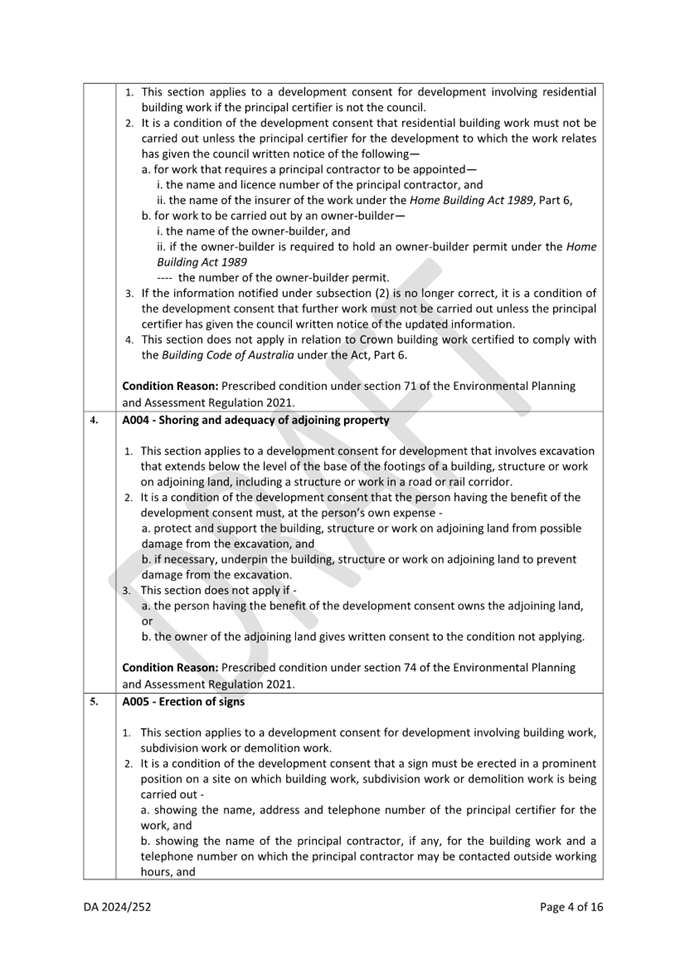


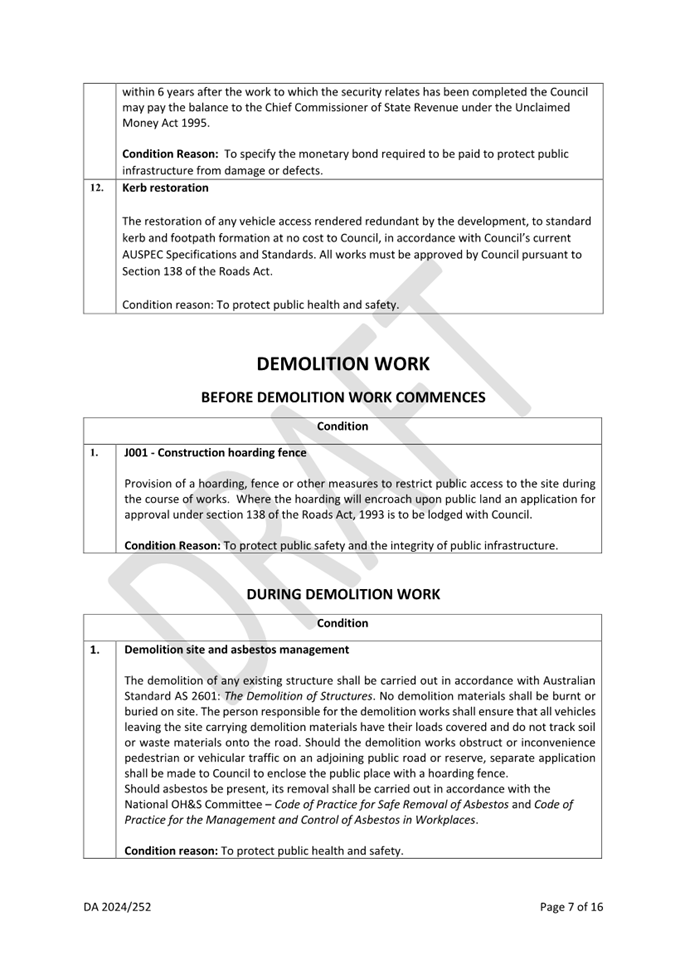



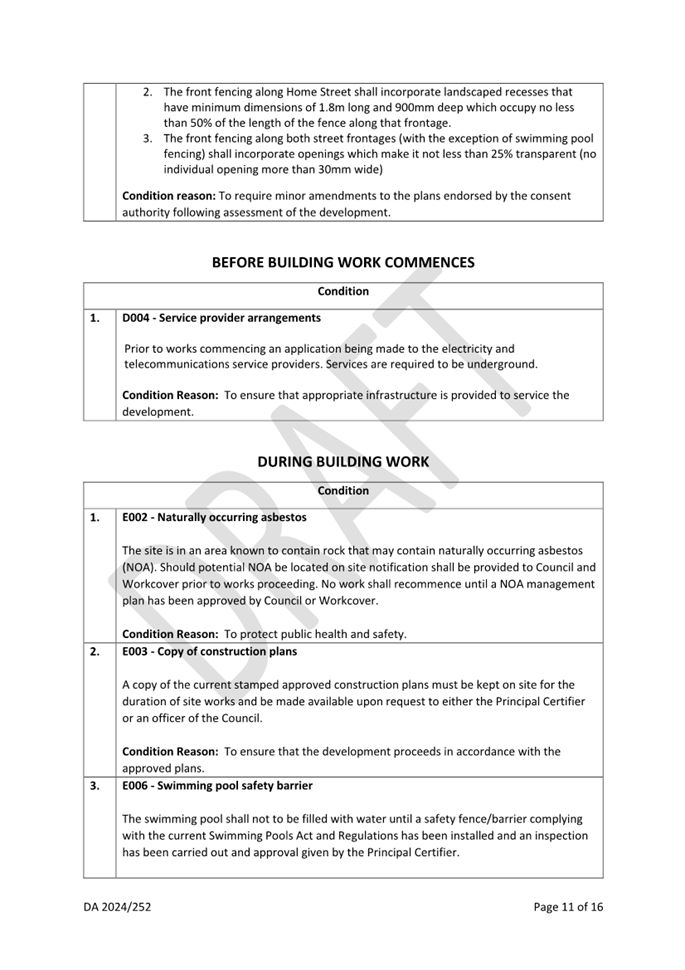
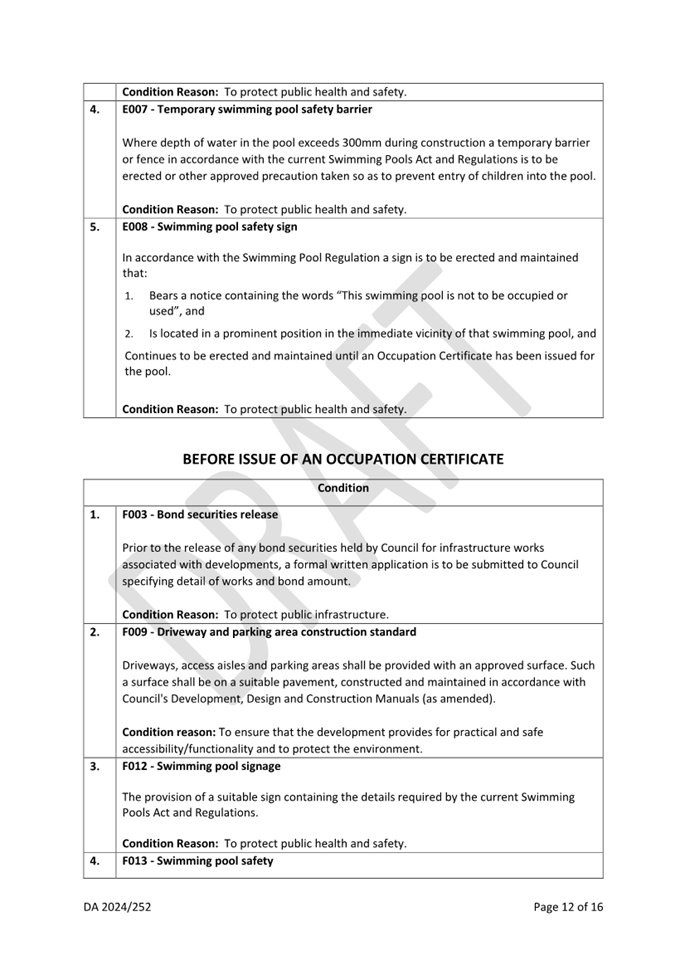
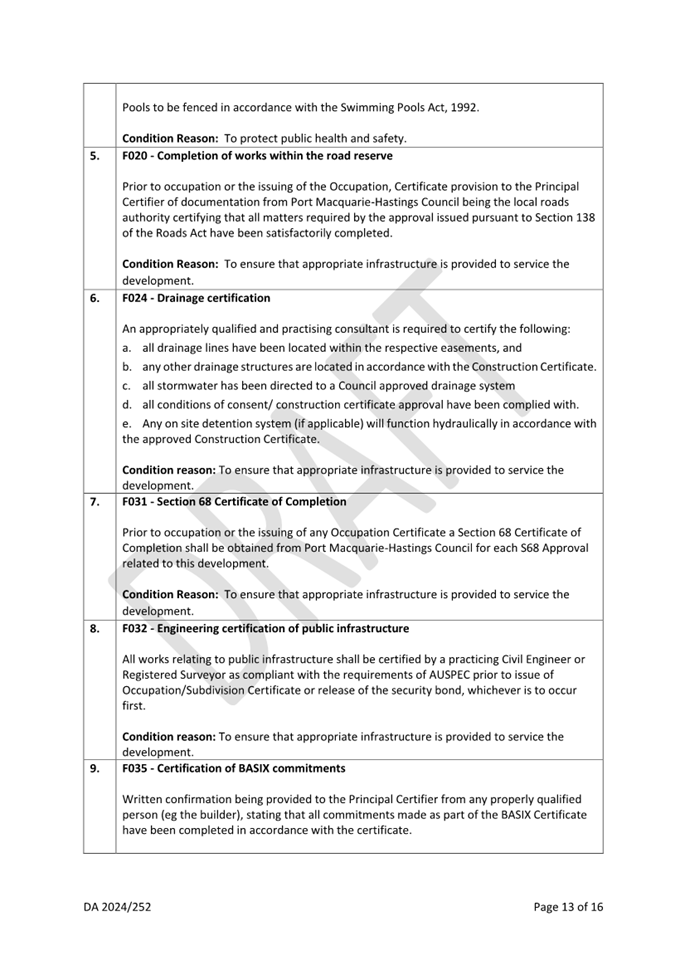

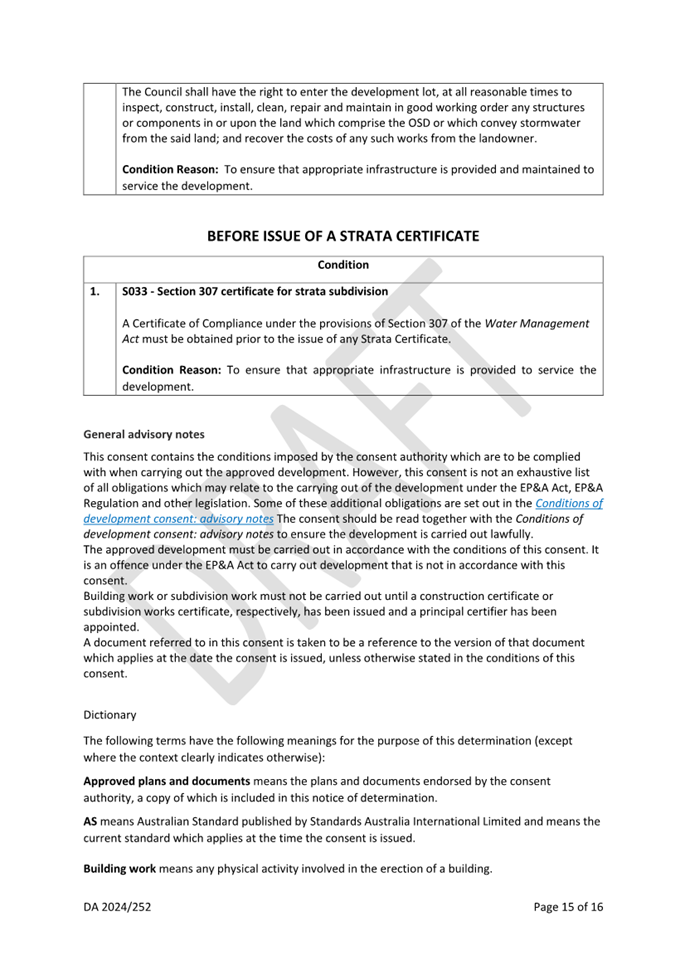
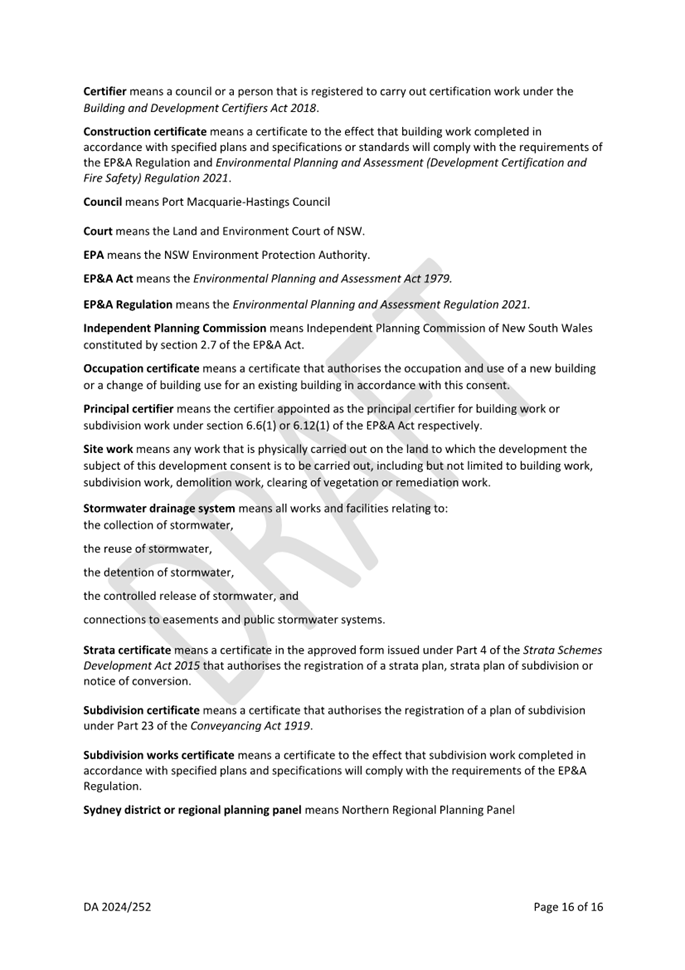
|
ATTACHMENT
|
Development Assessment Panel
16/04/2025
|
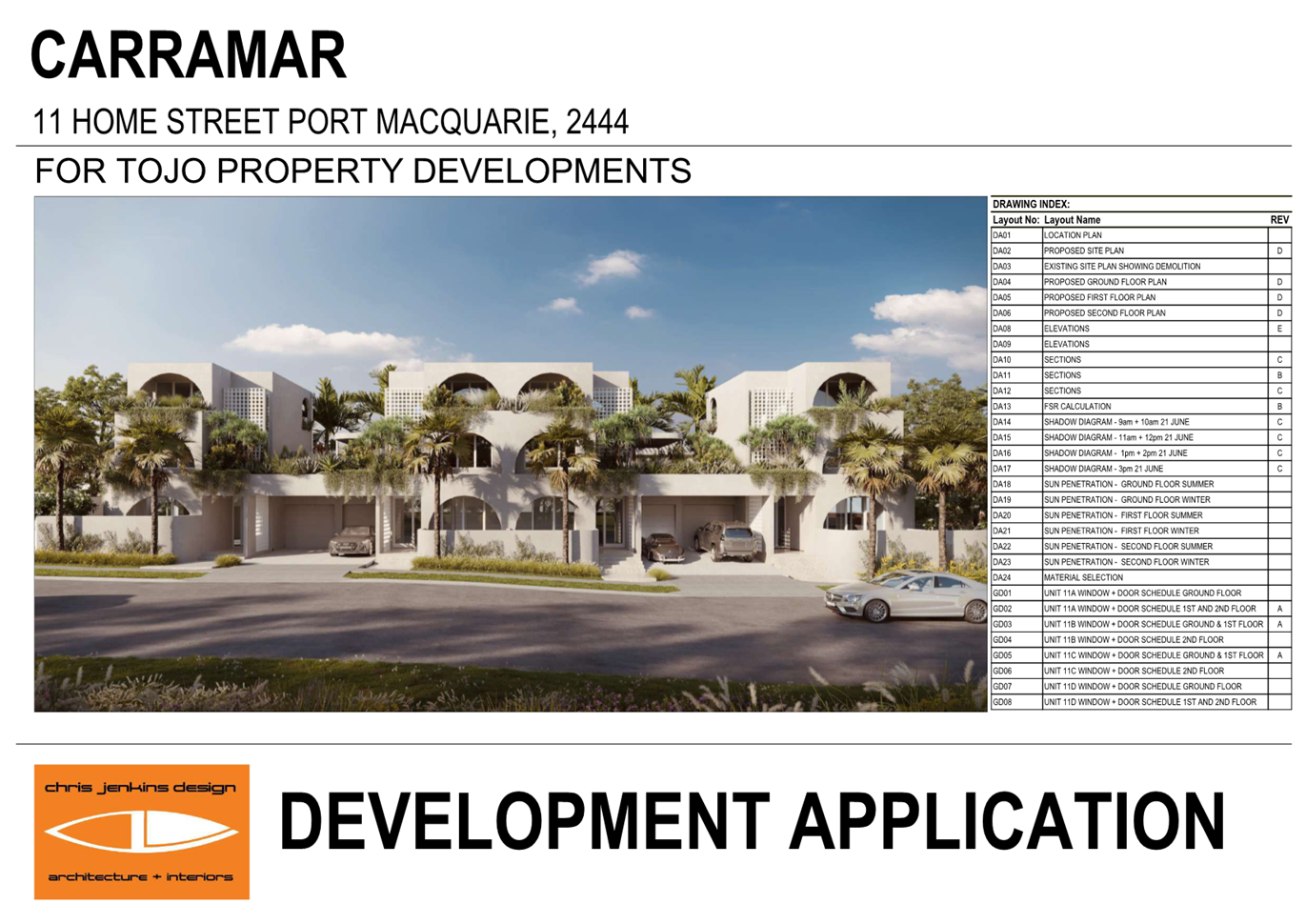
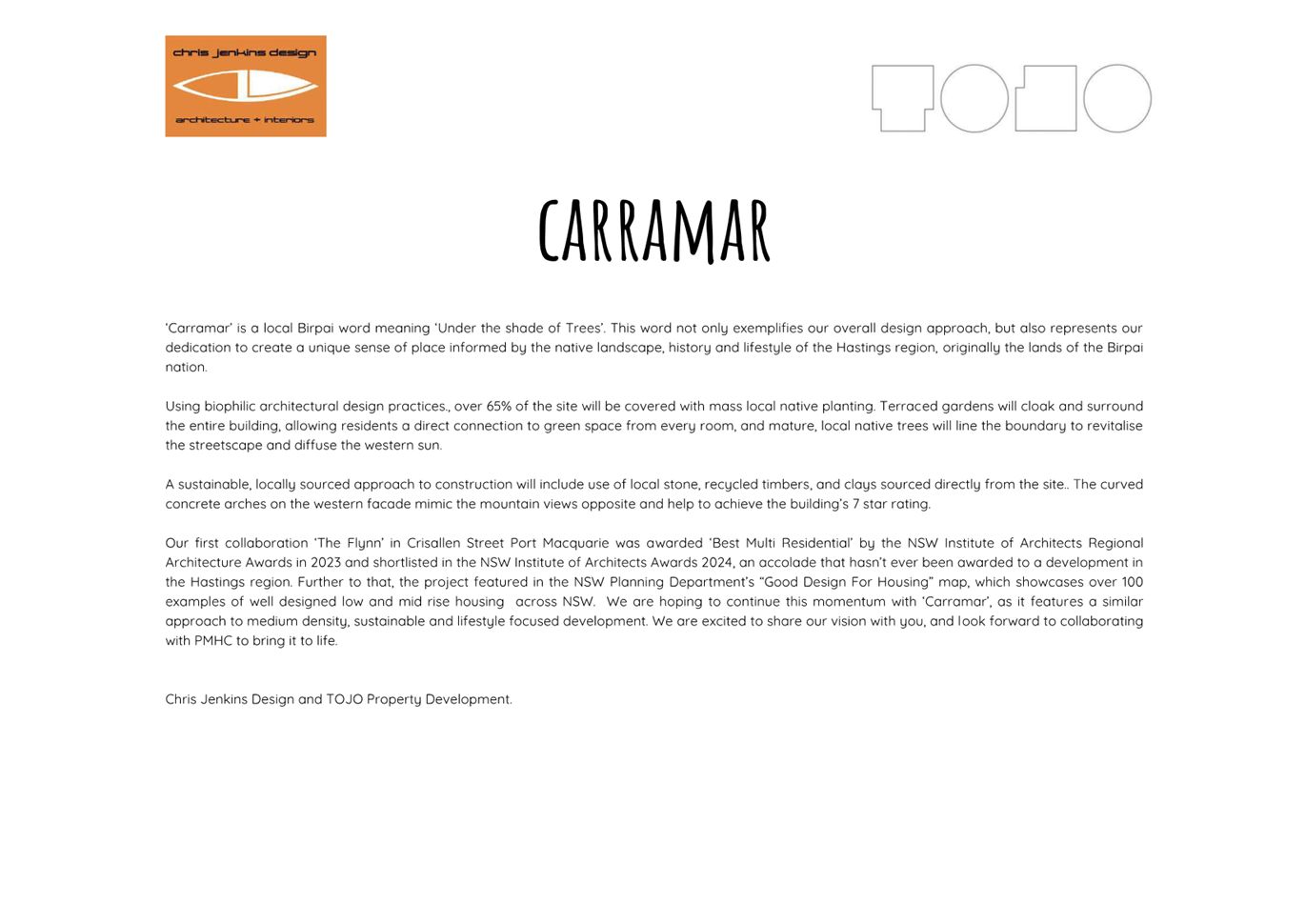
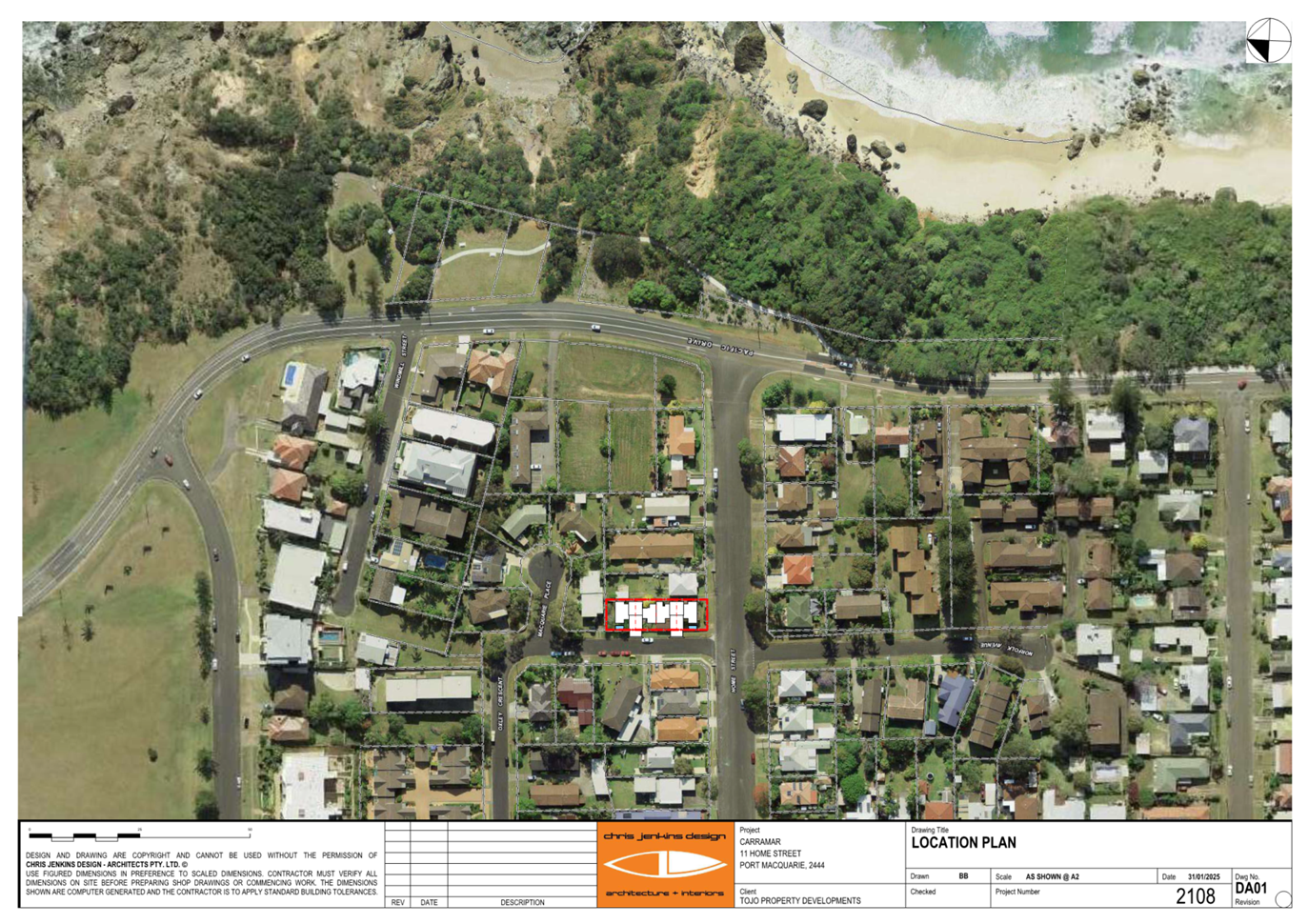
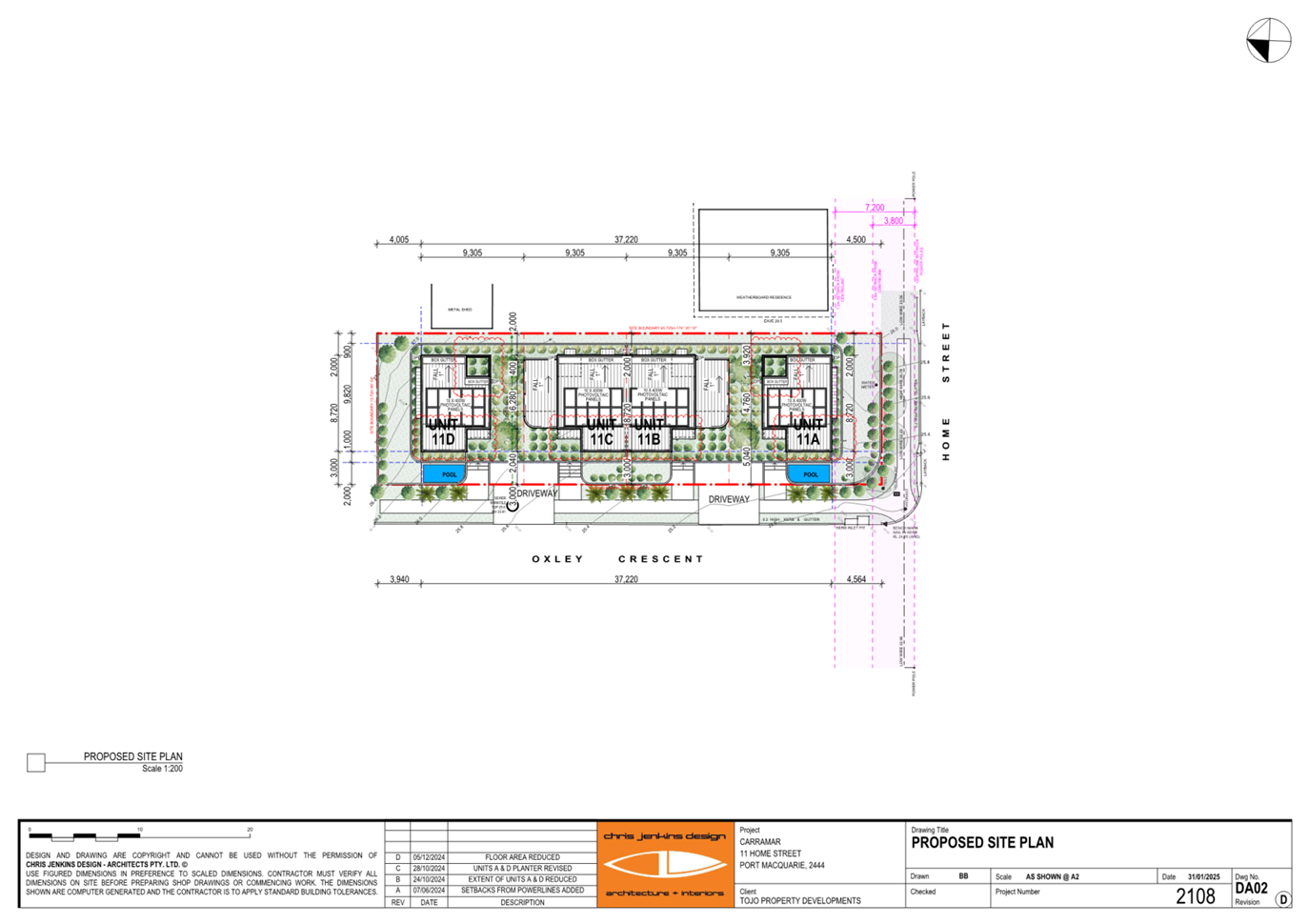
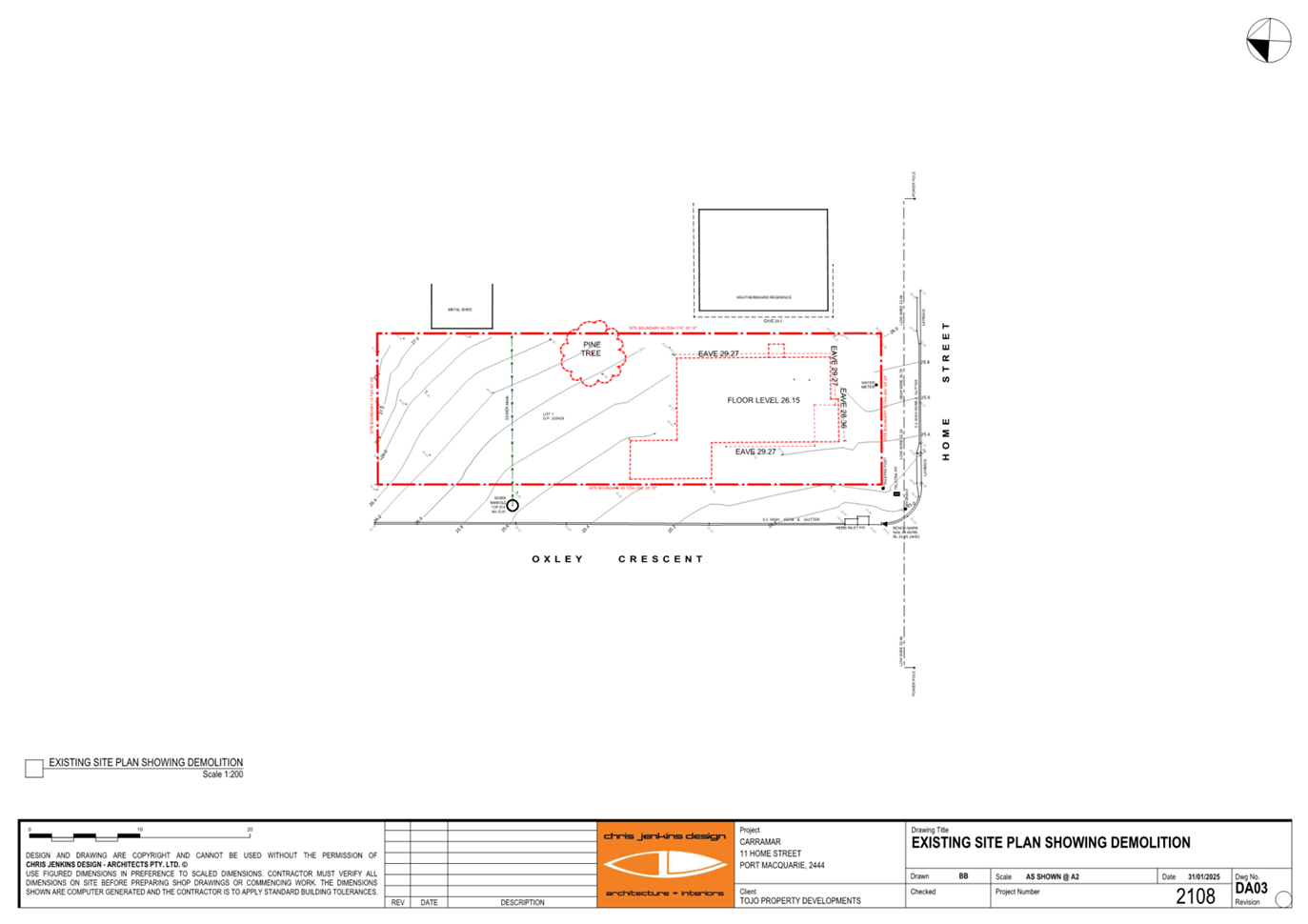
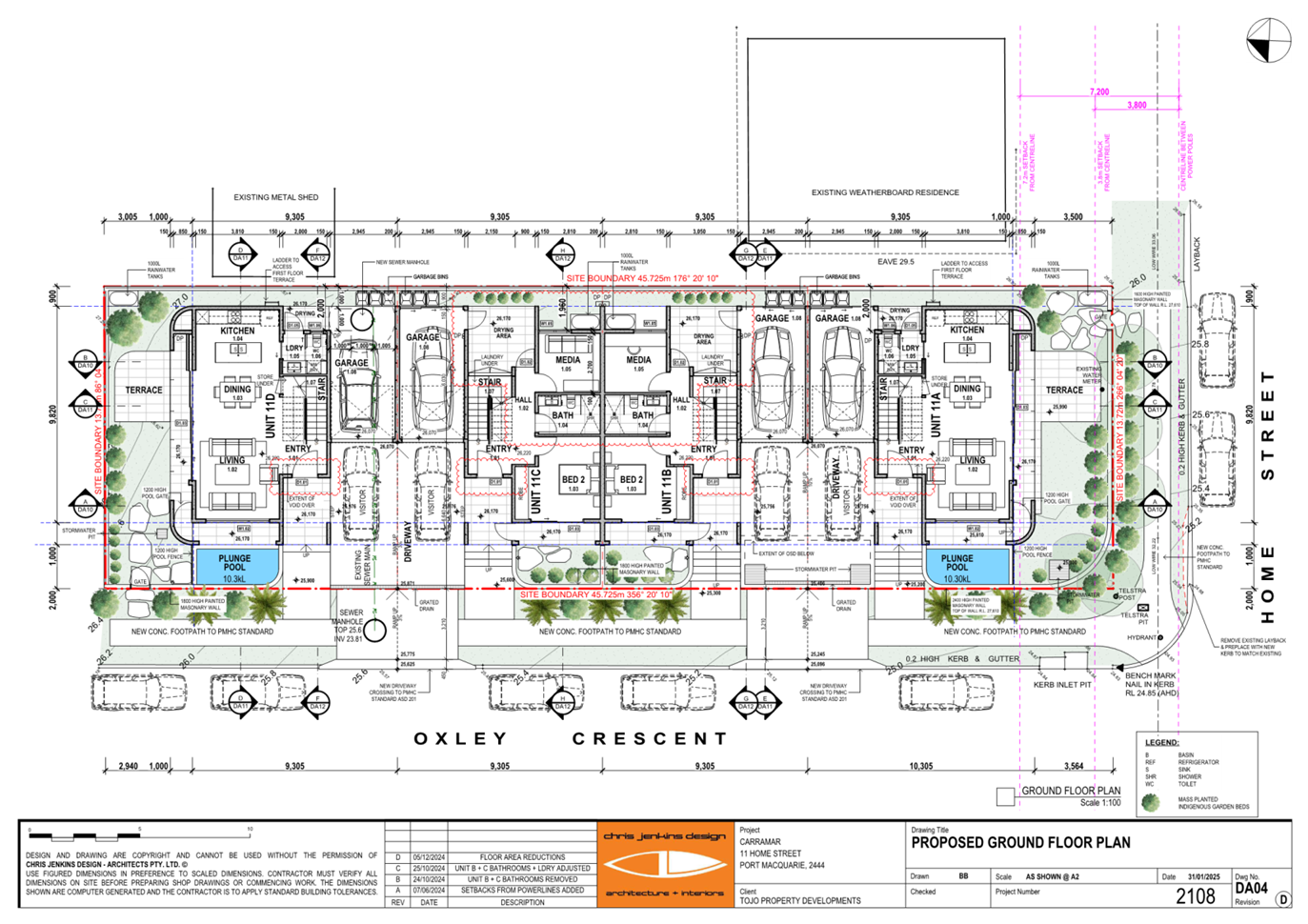
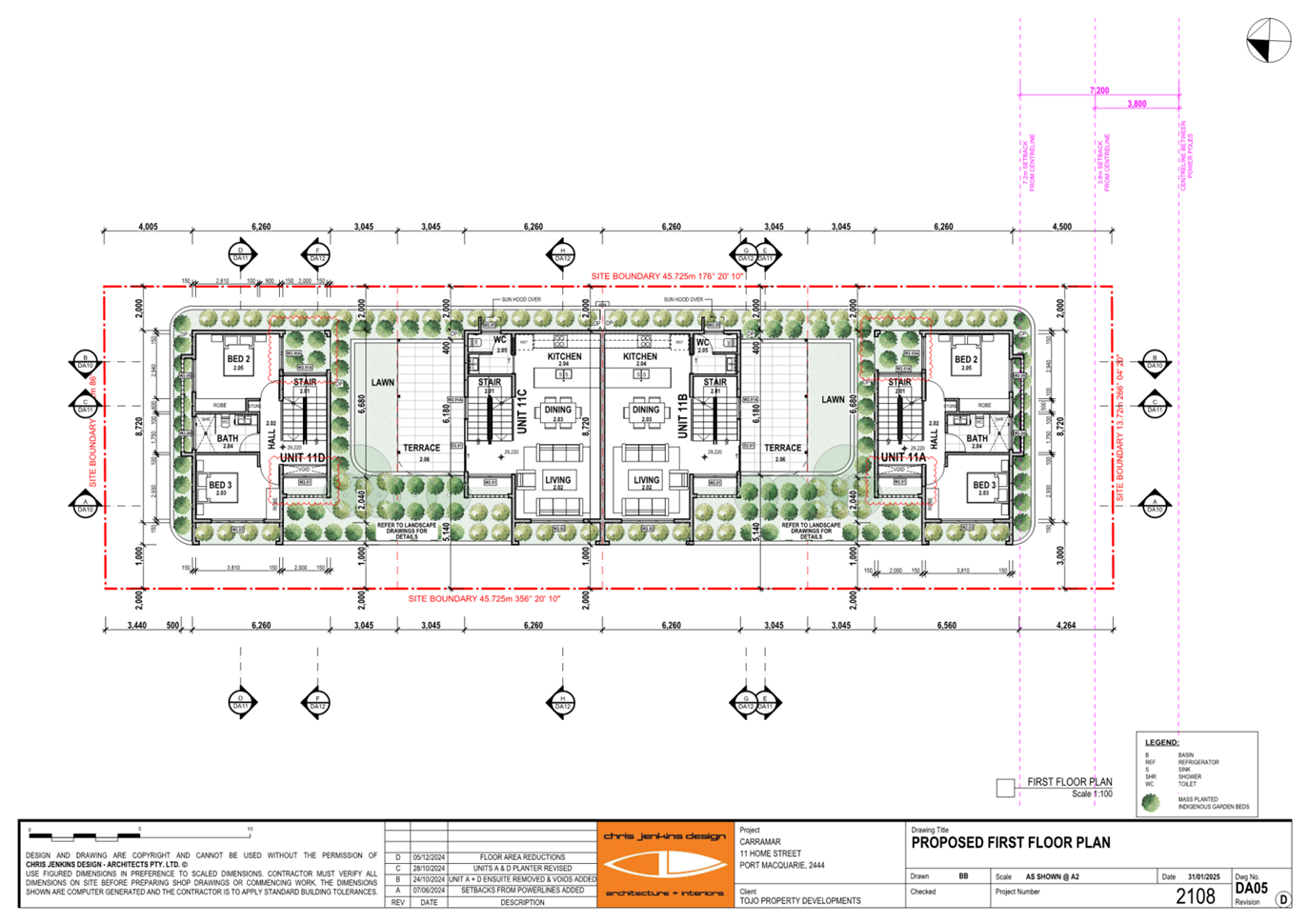
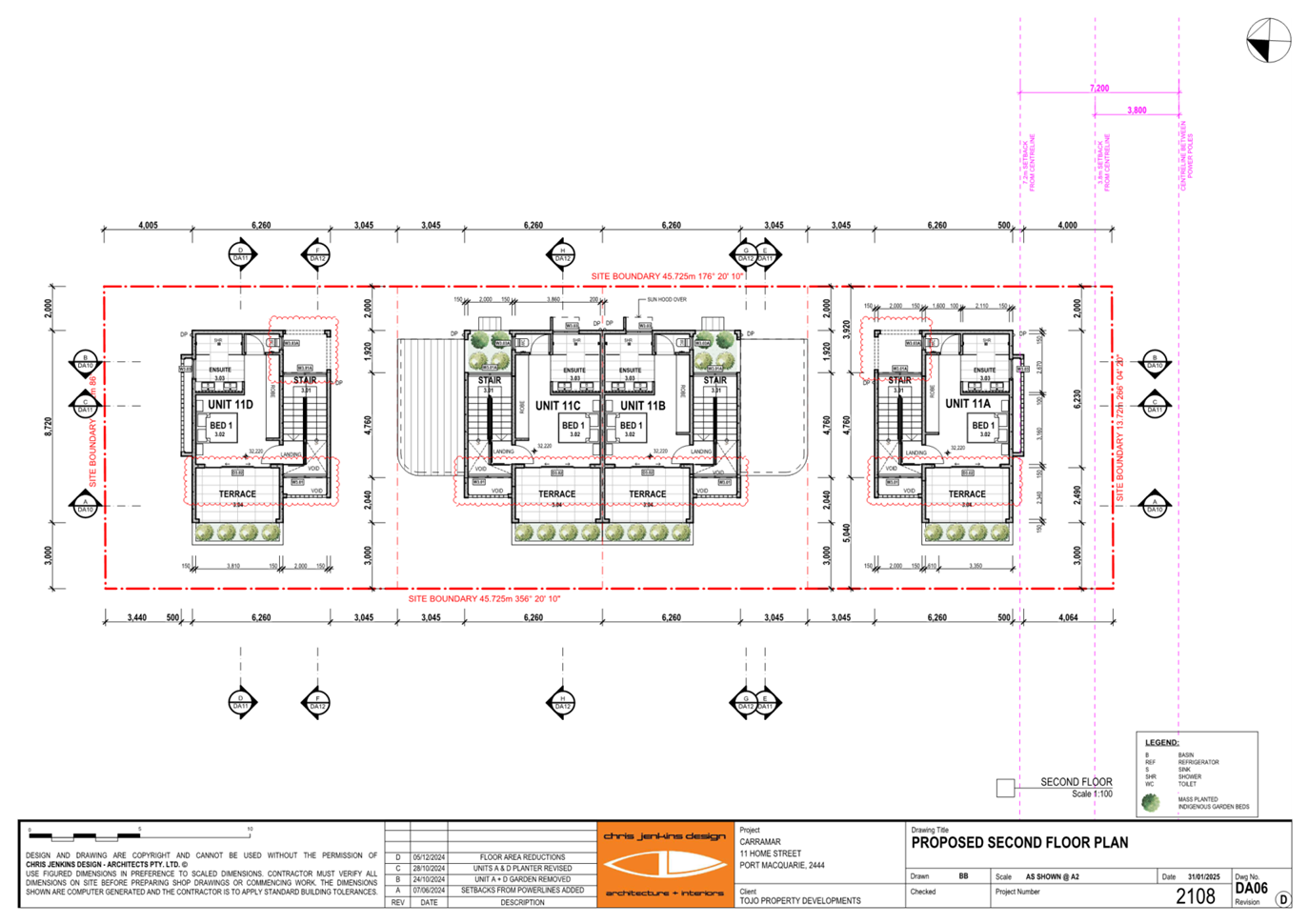
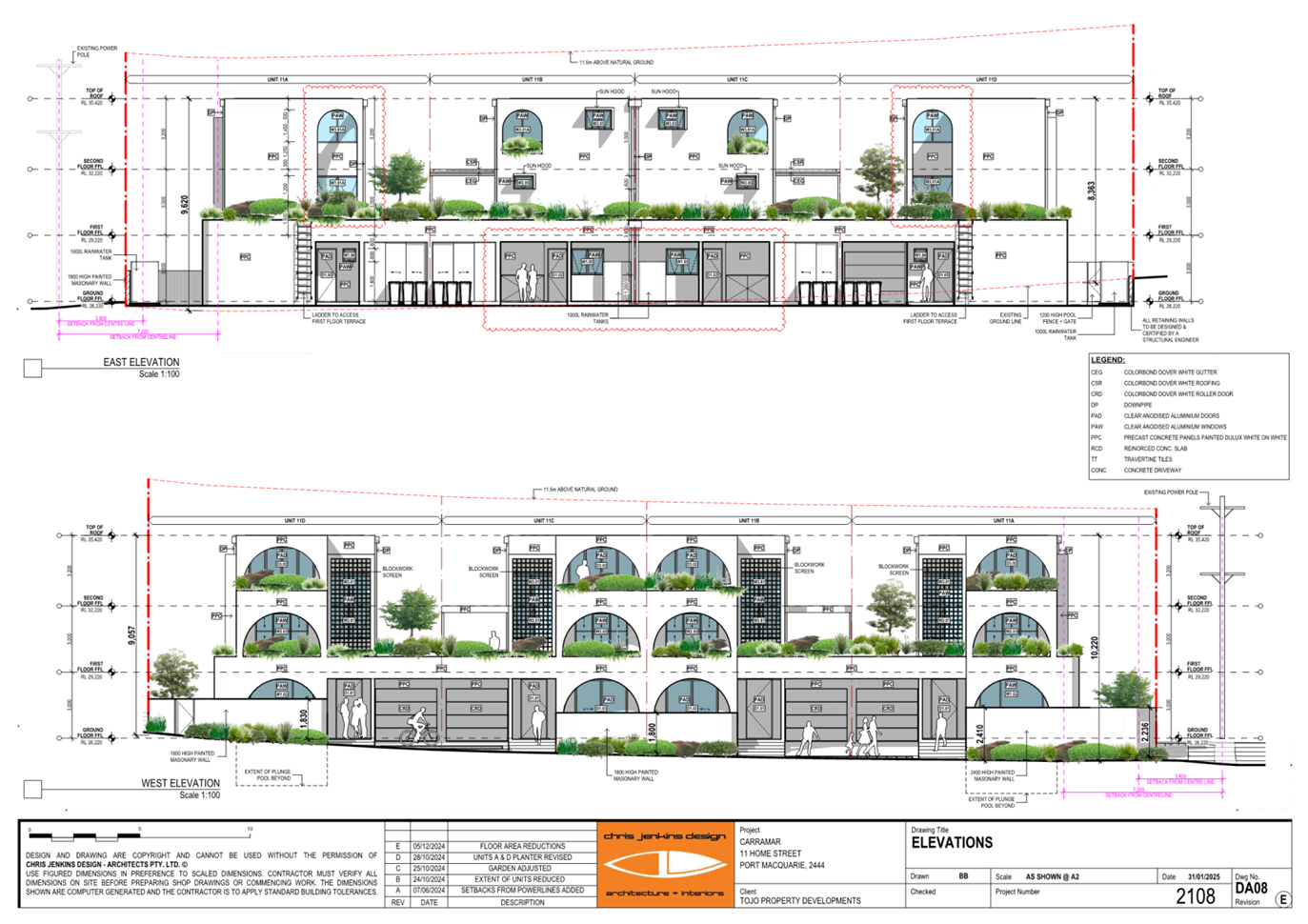
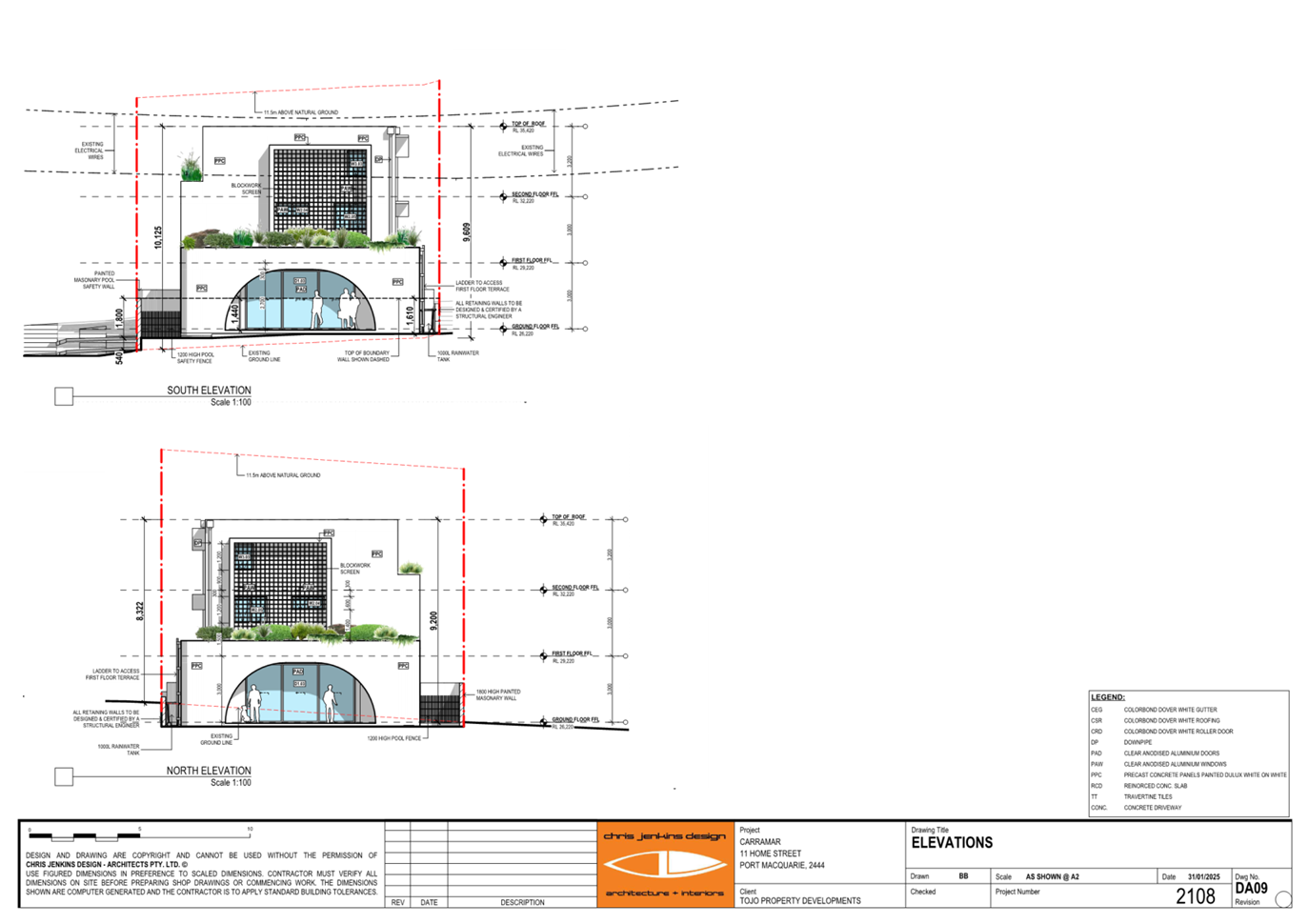
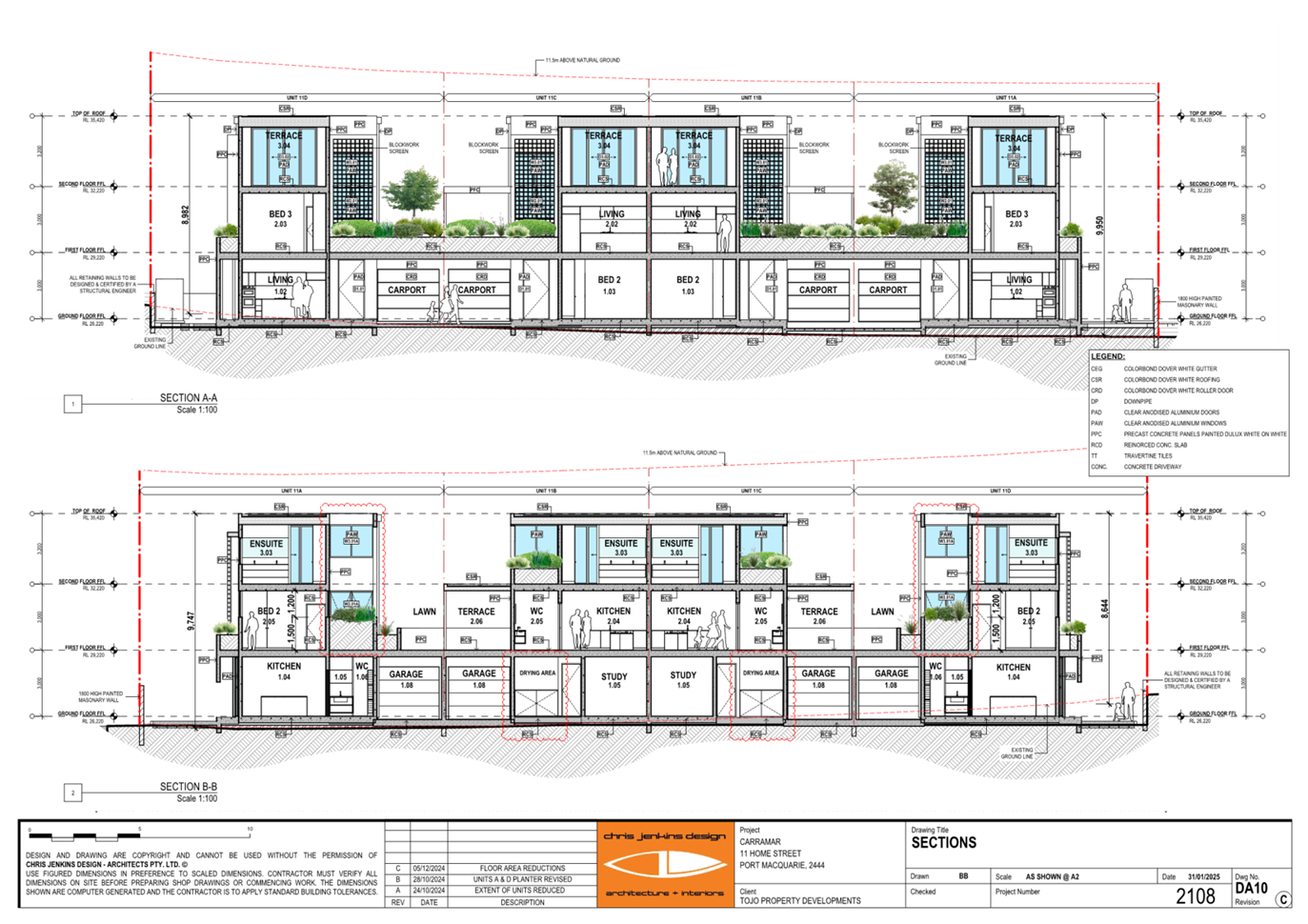

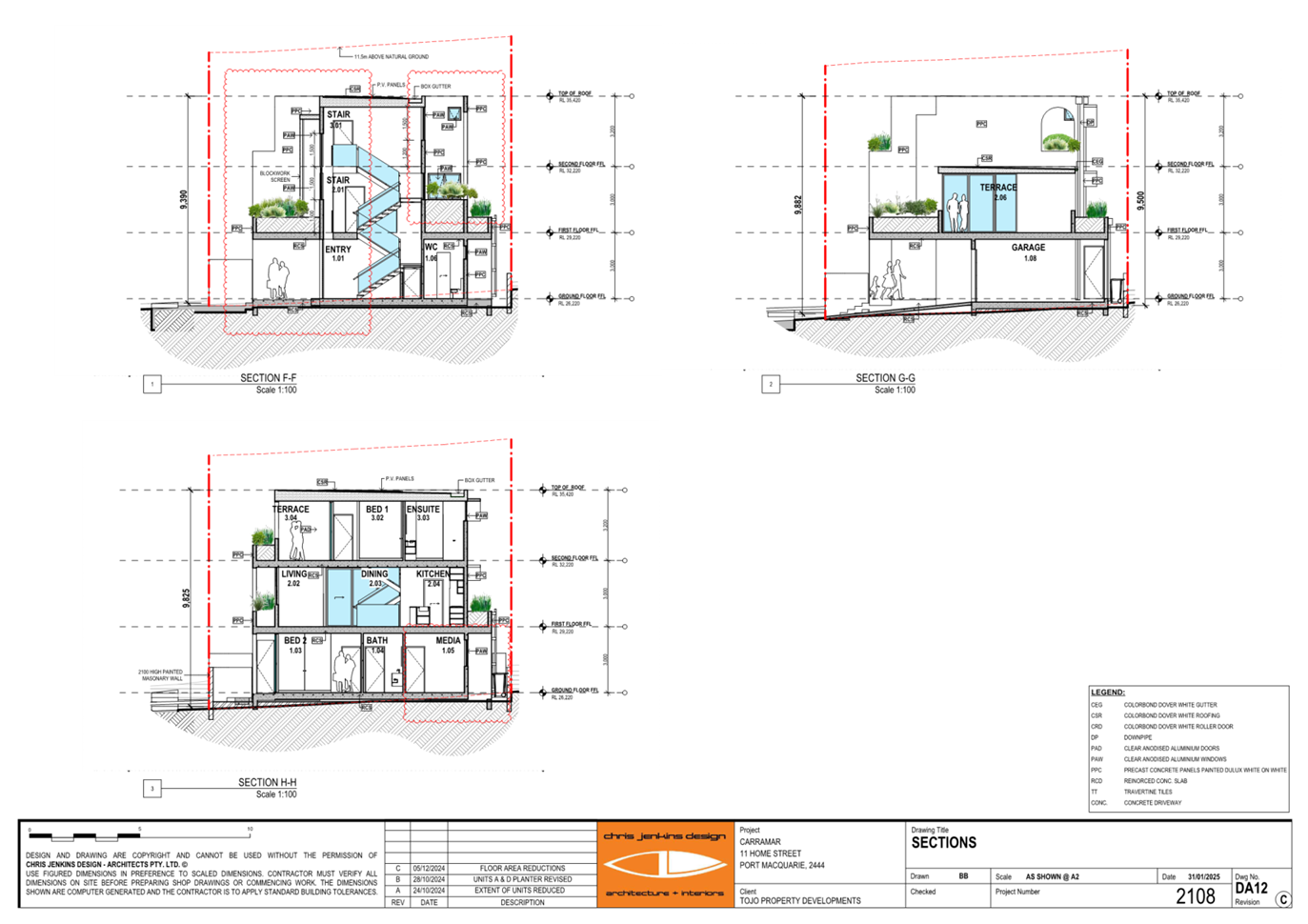
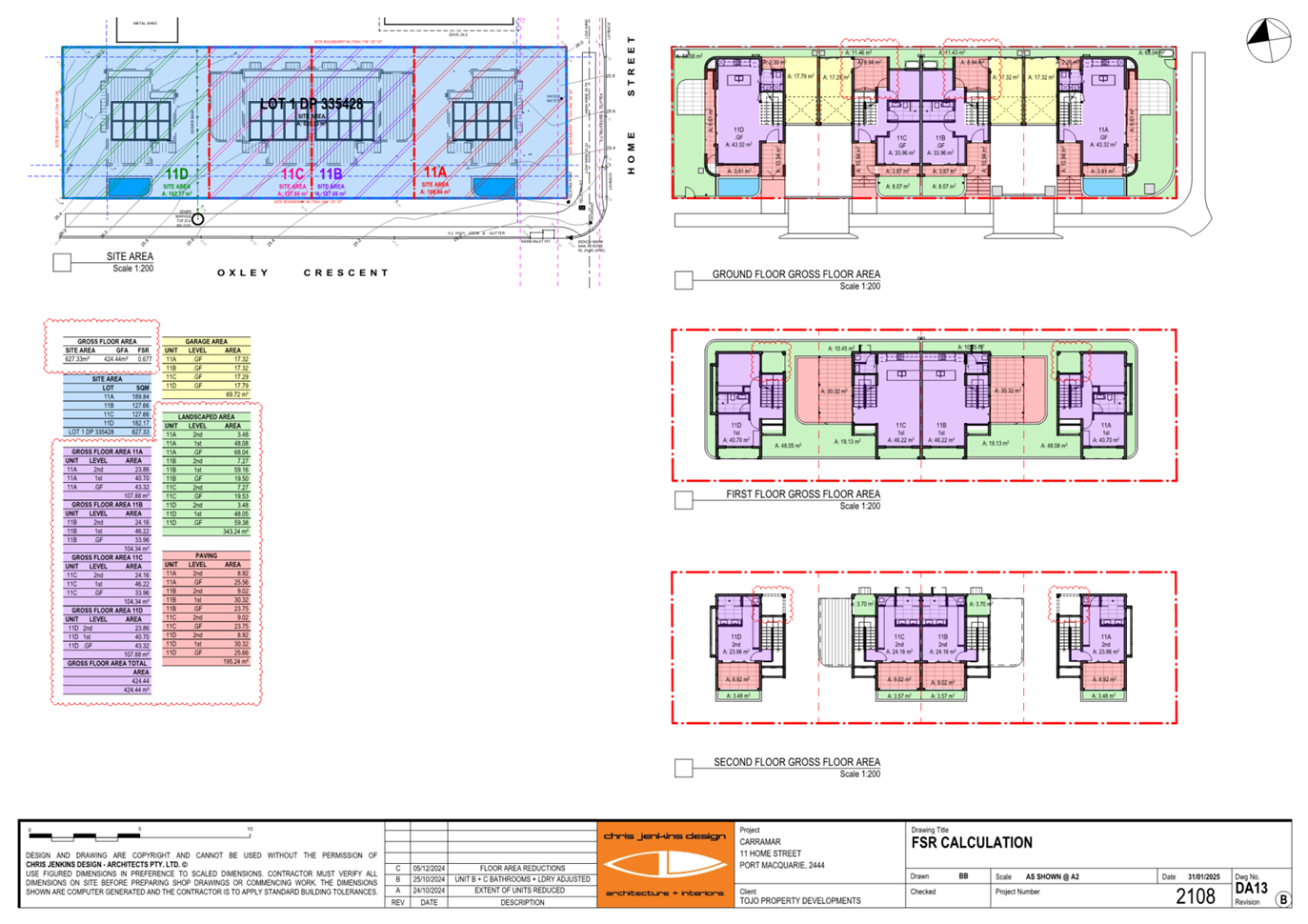
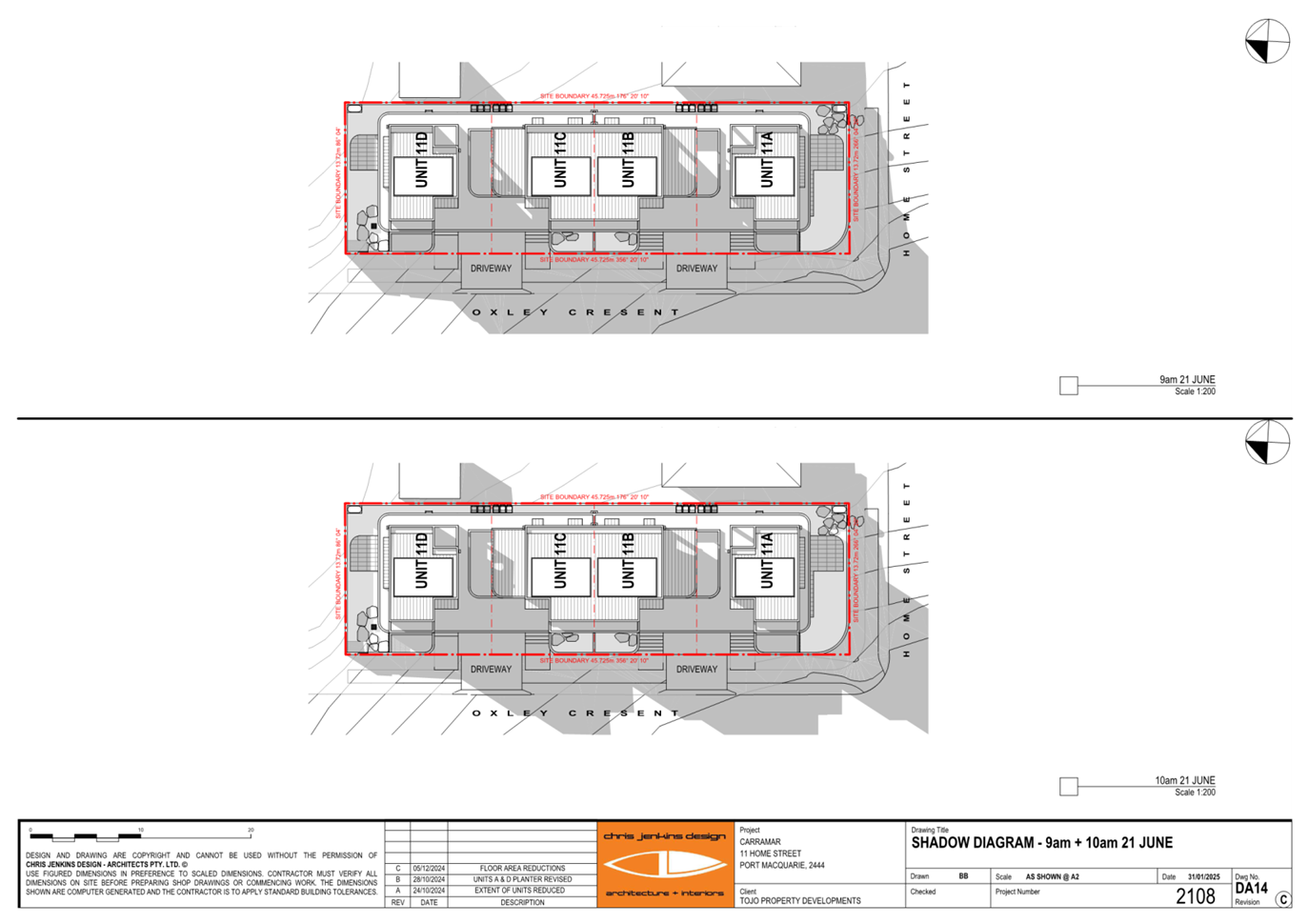


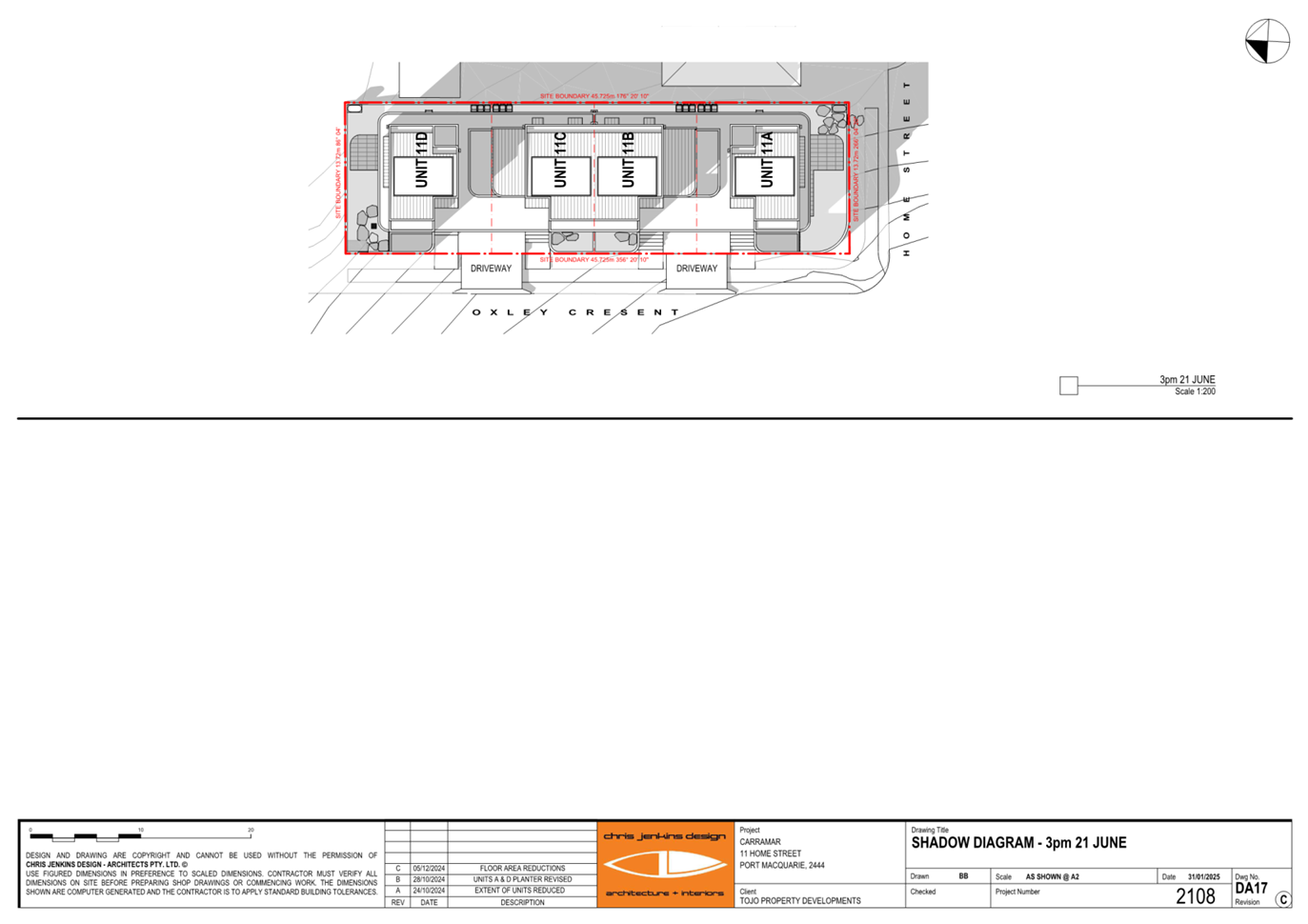
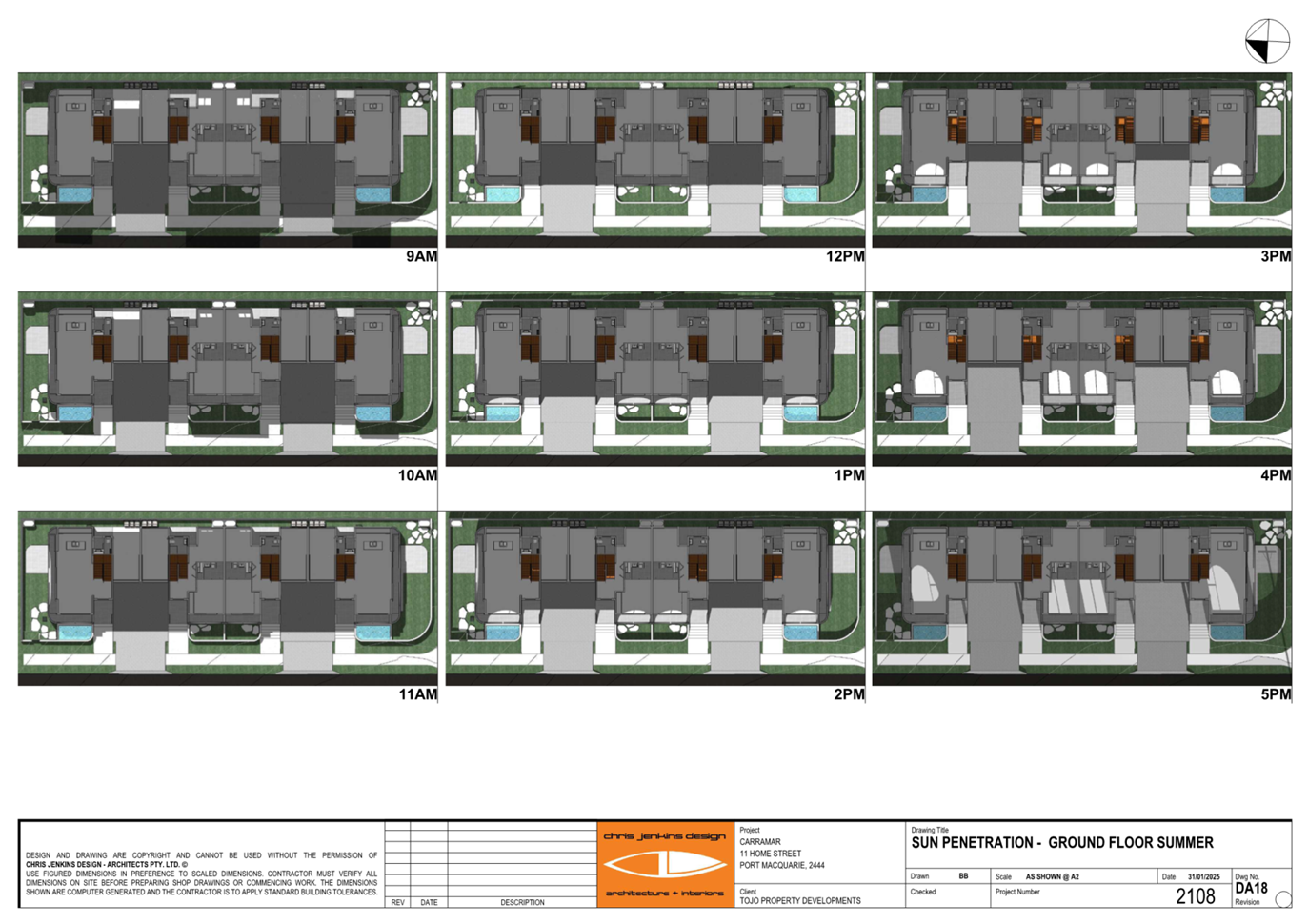

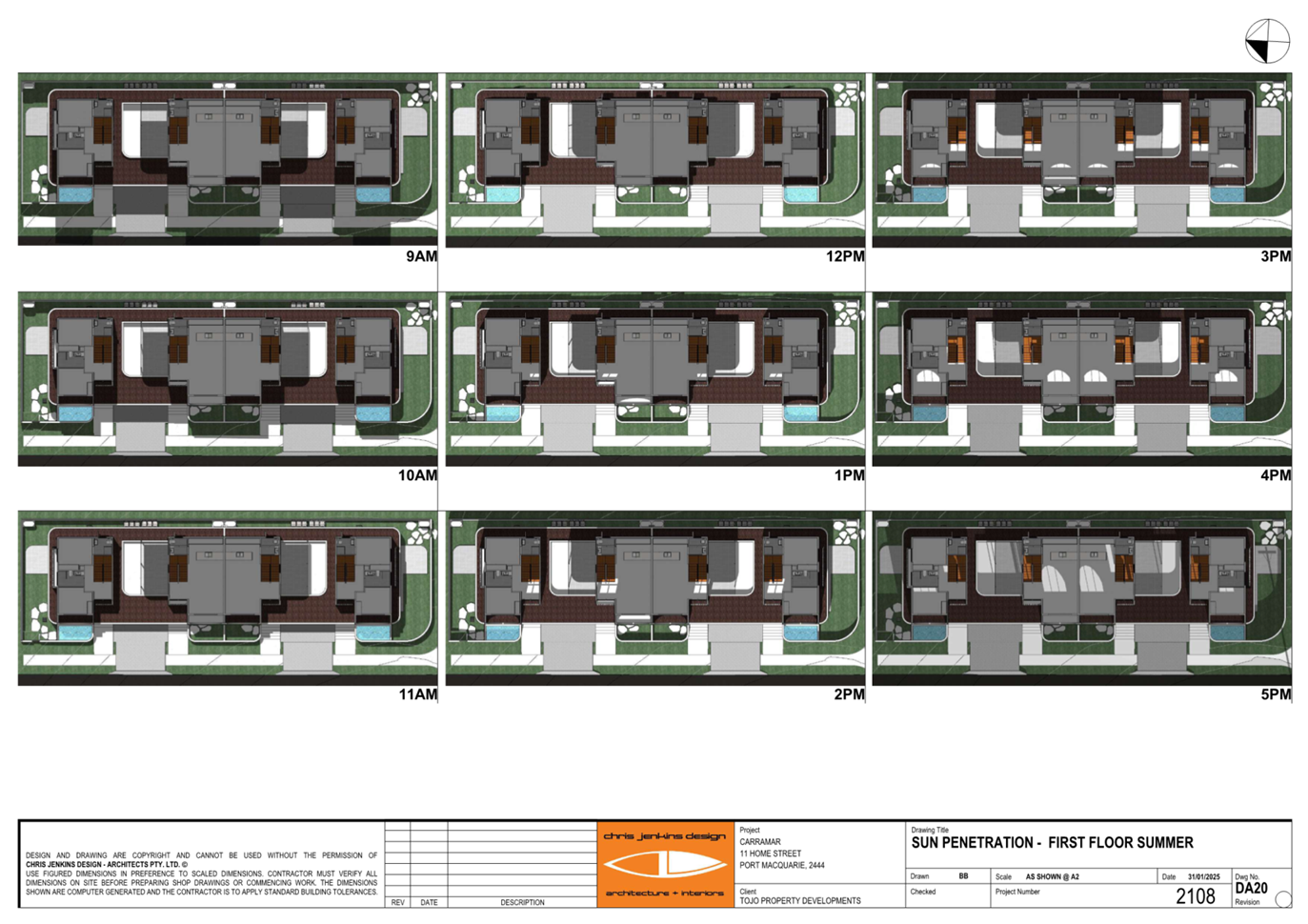
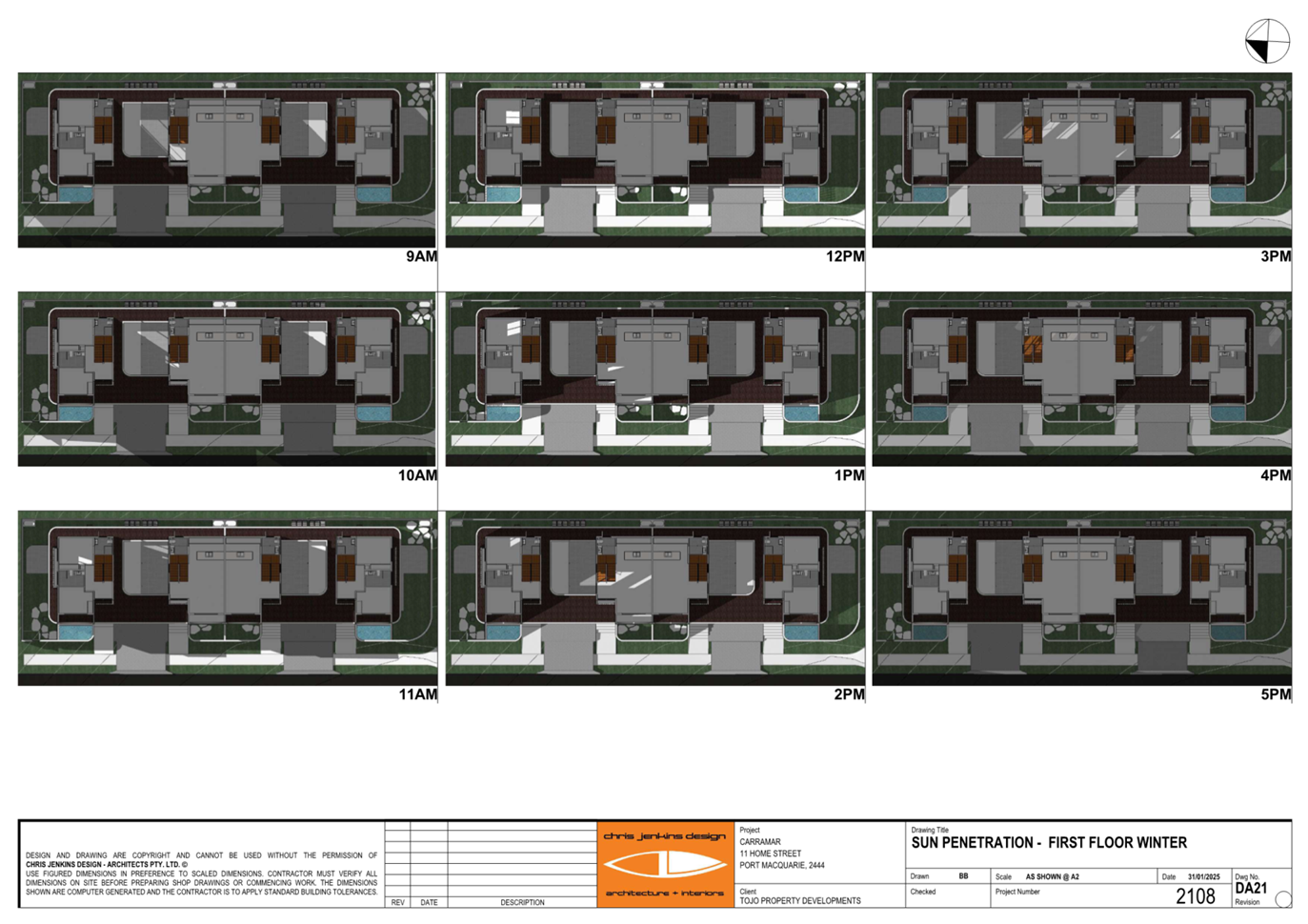
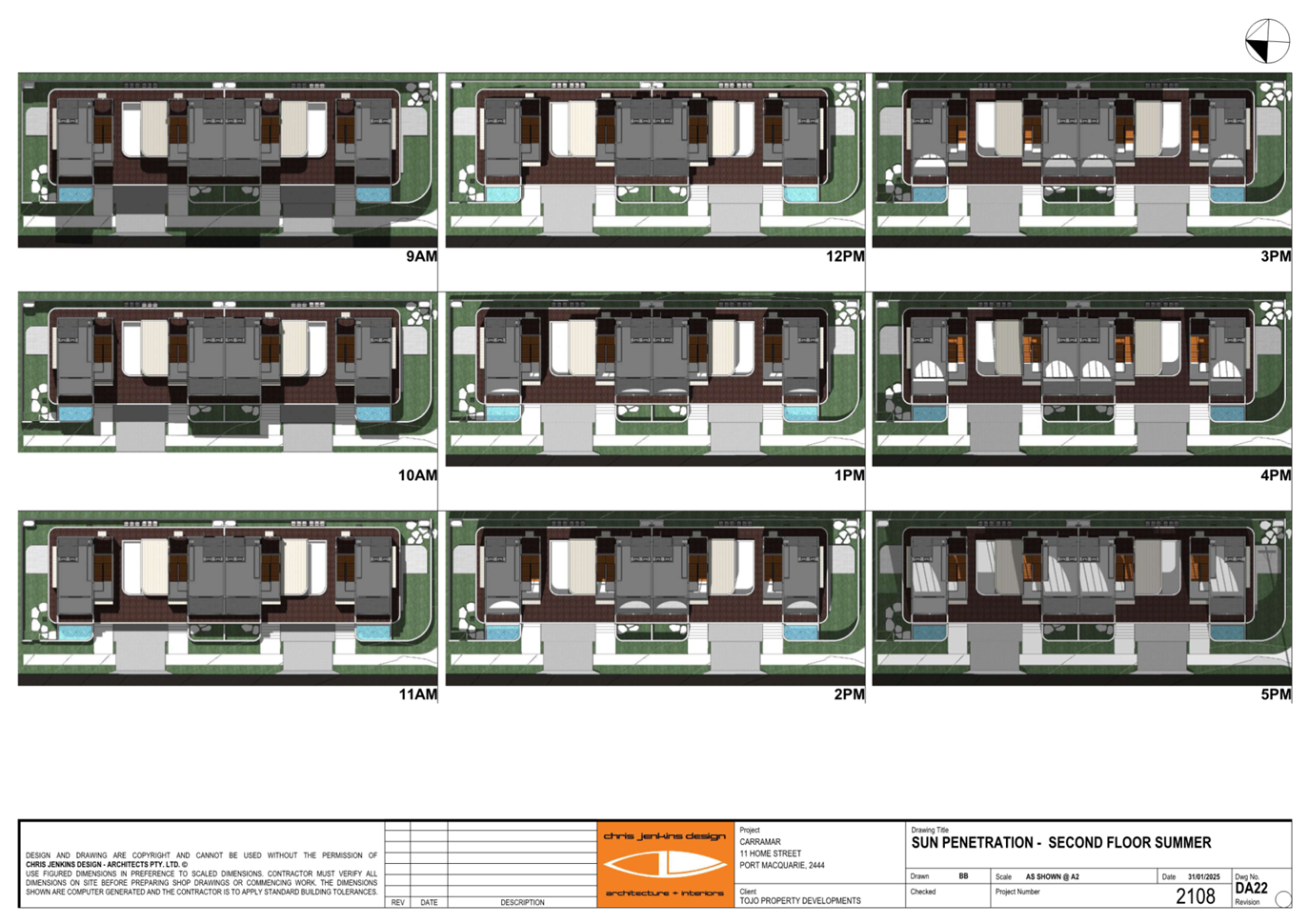
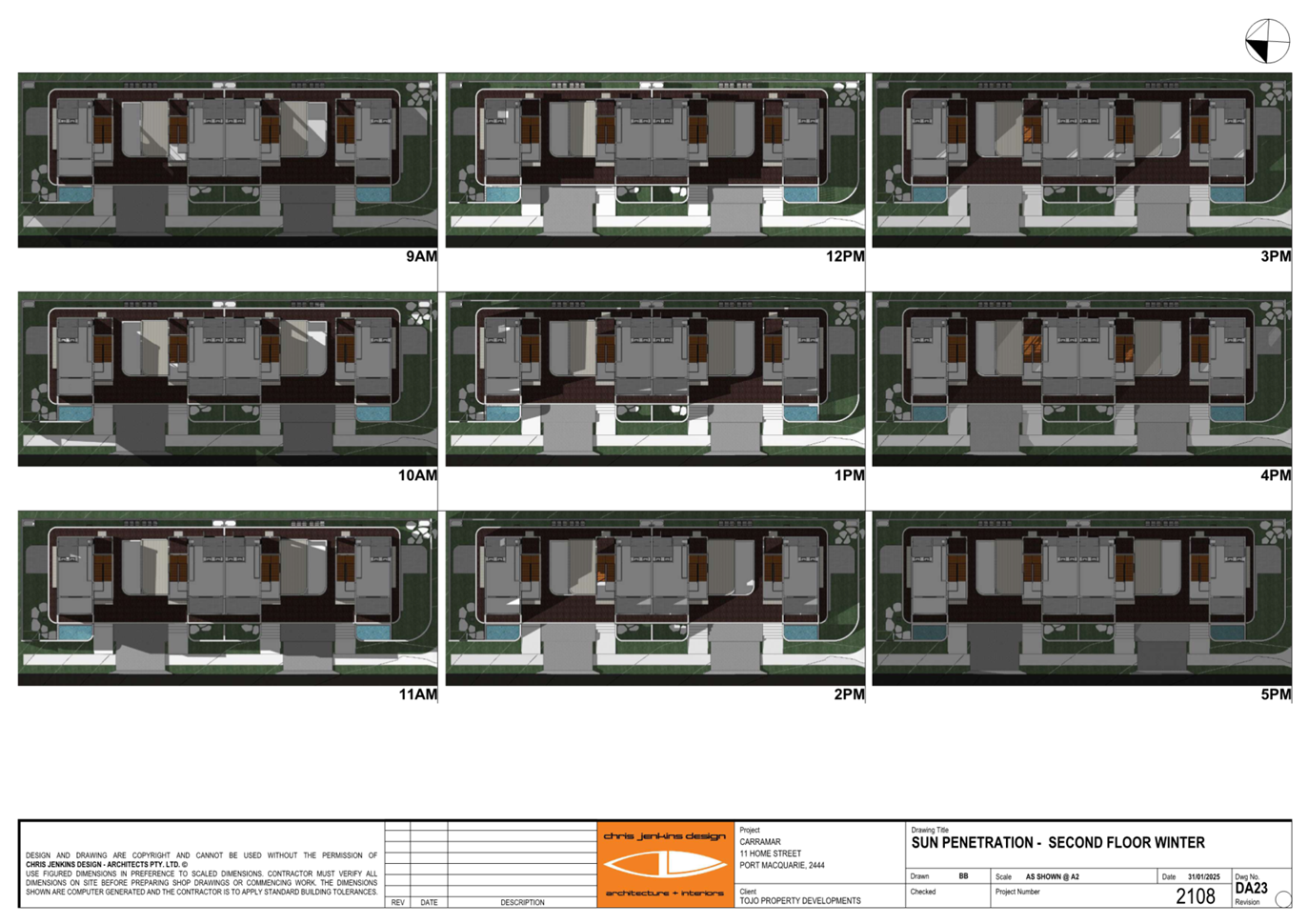
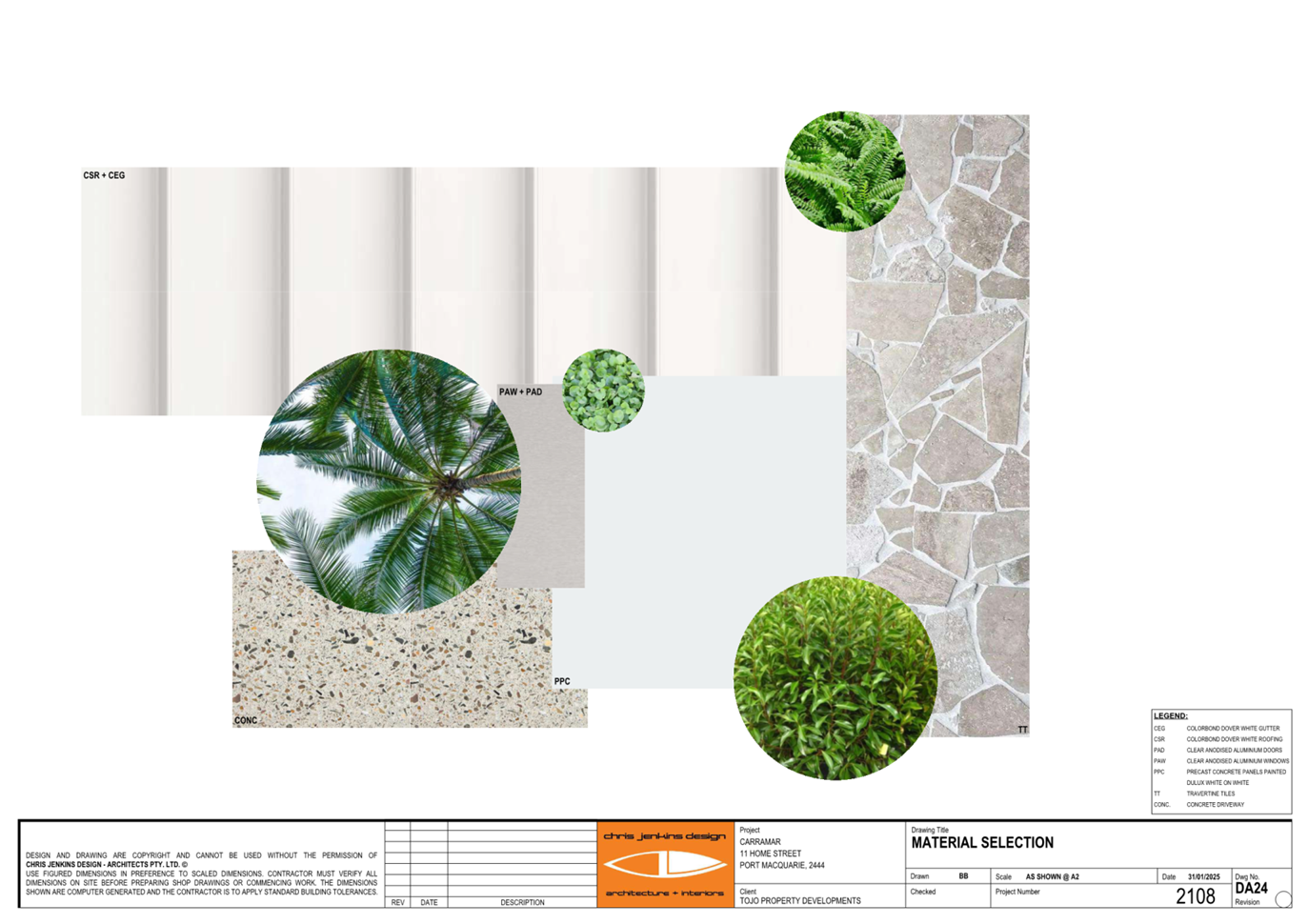


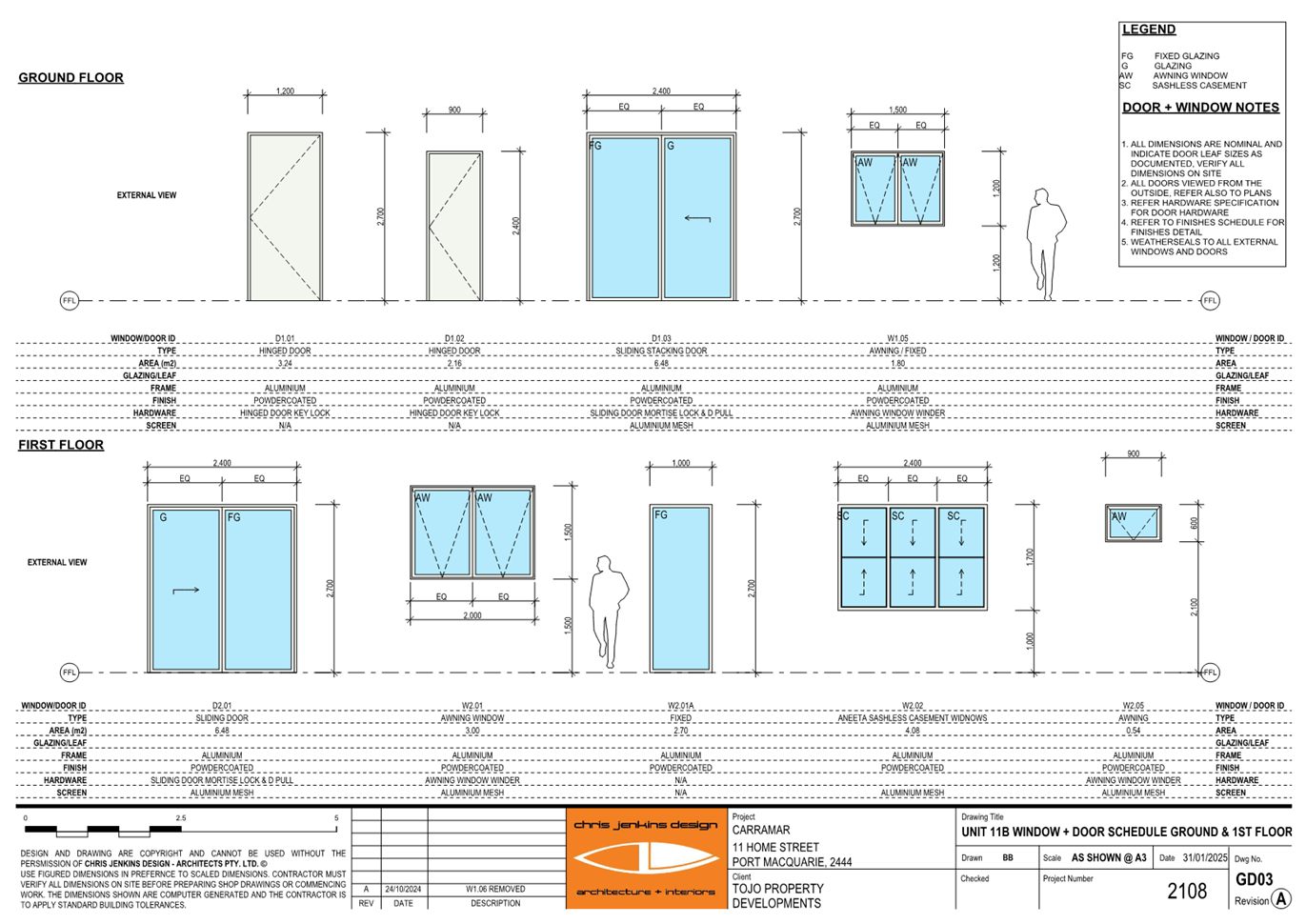
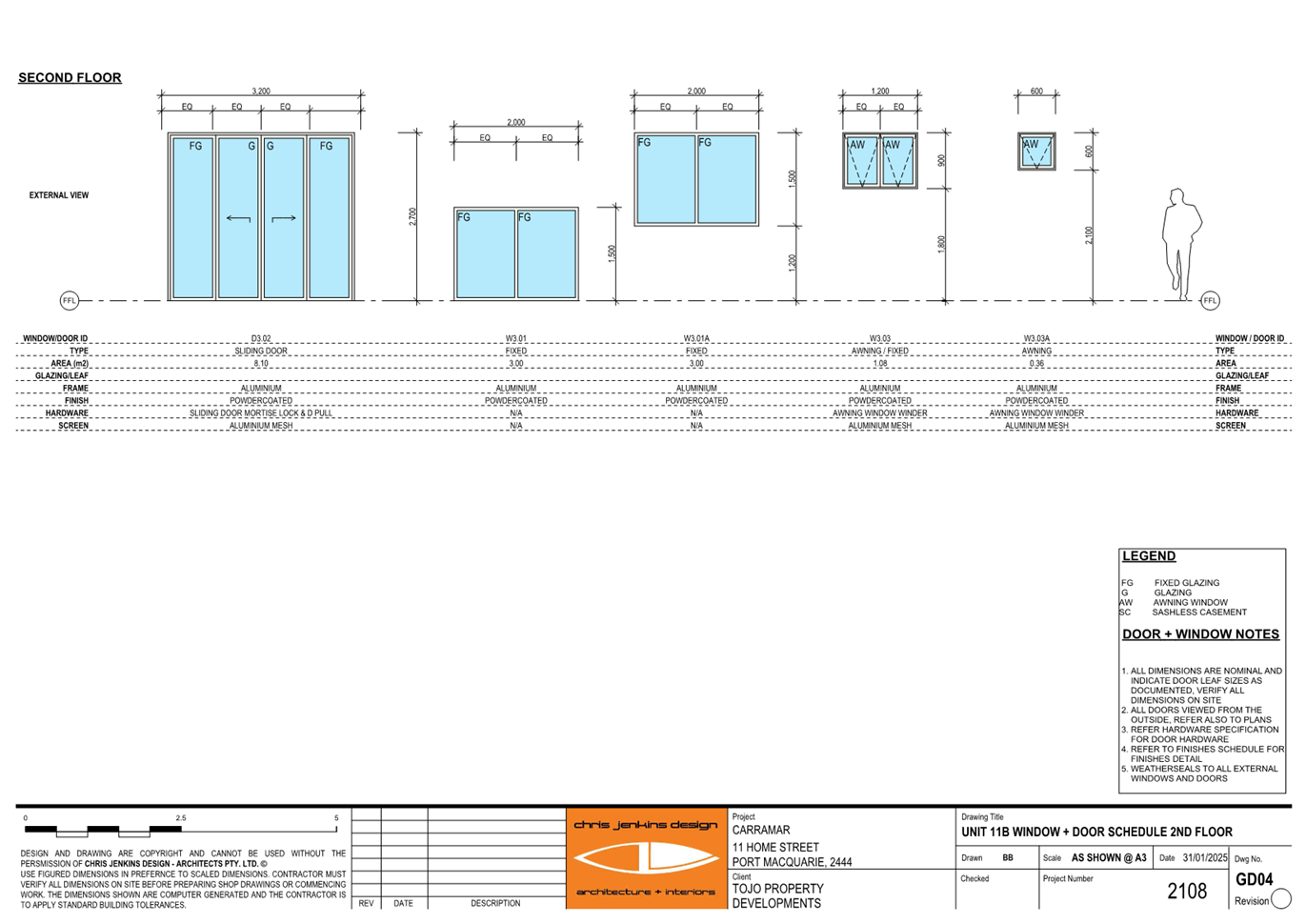
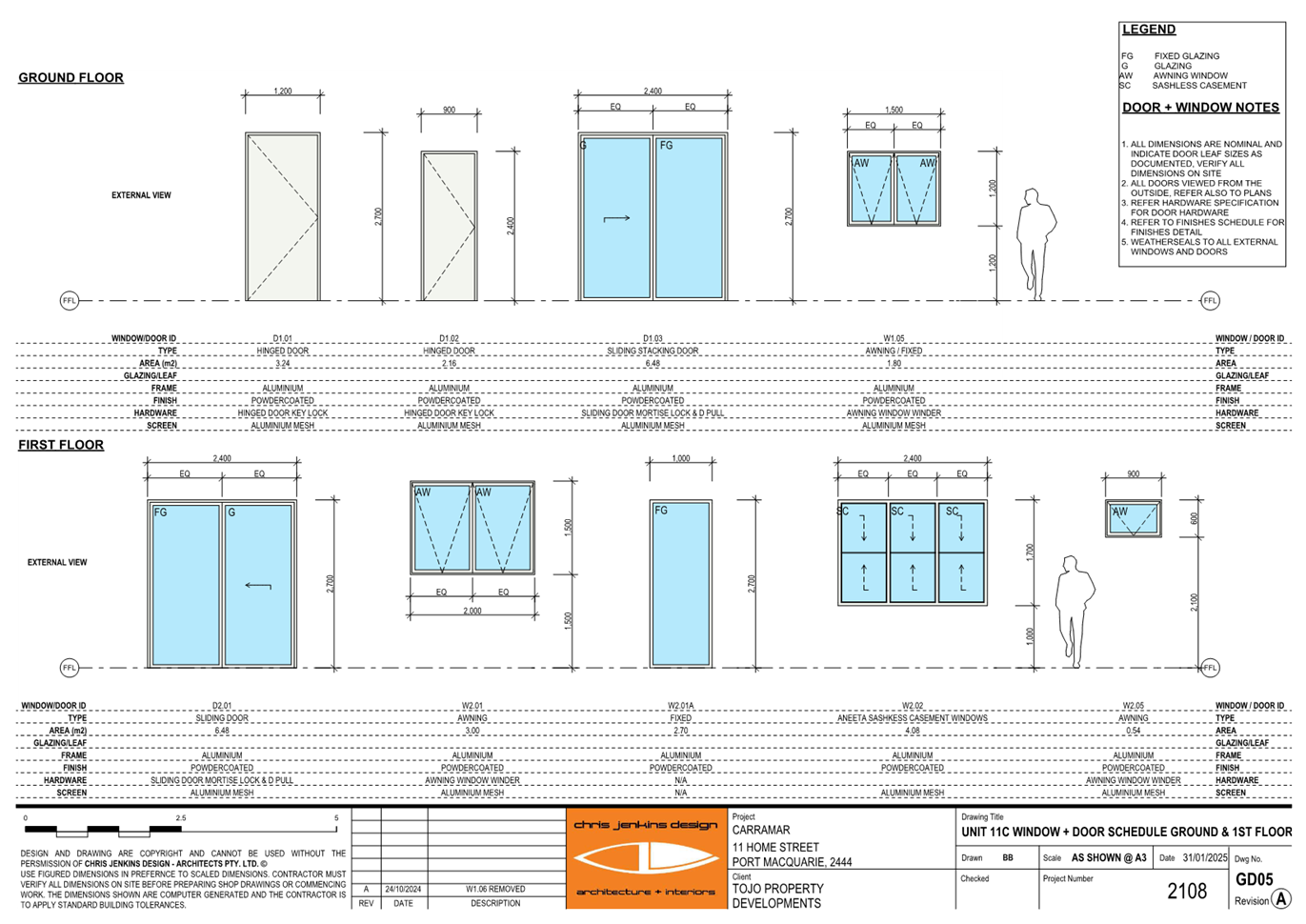
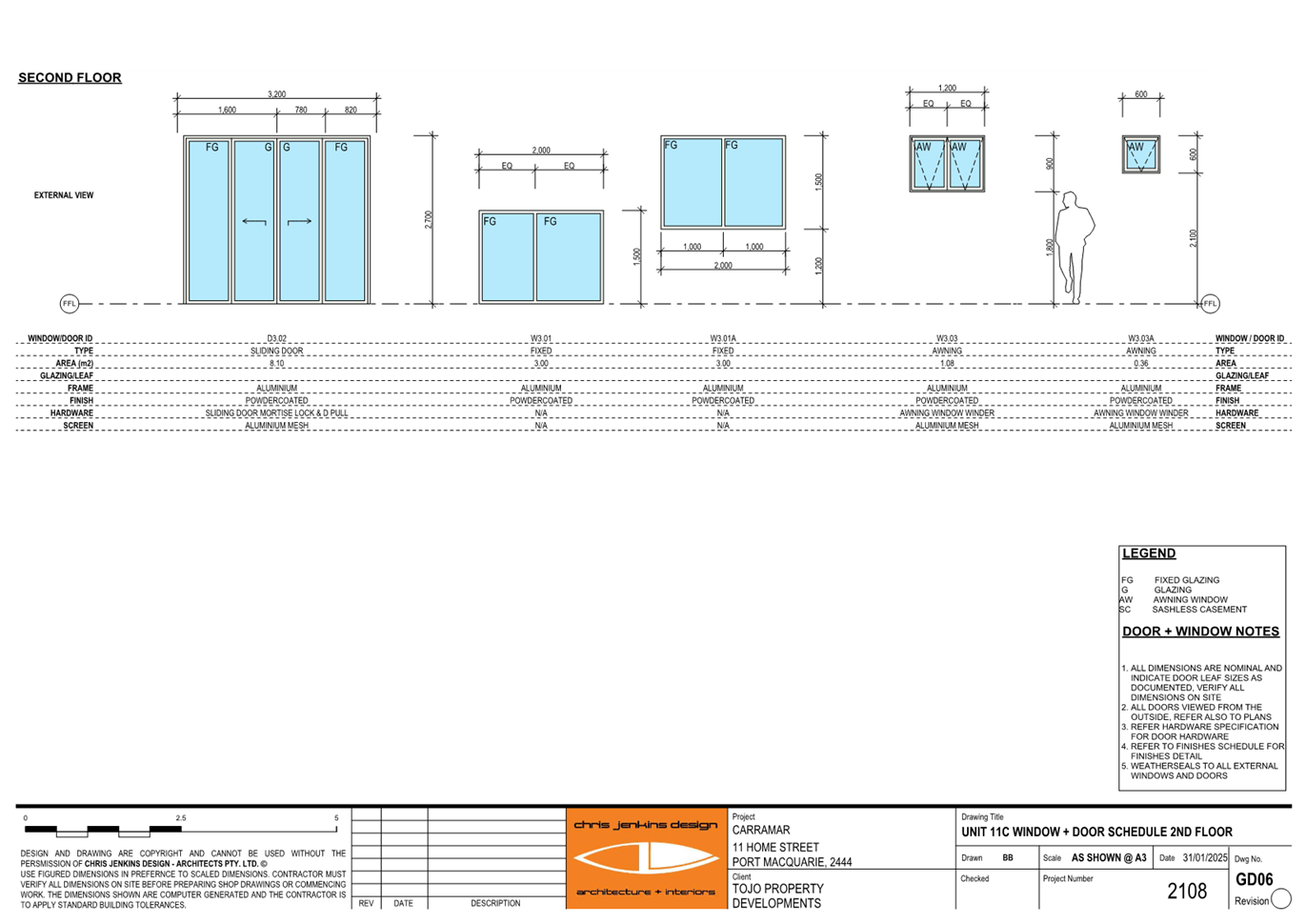

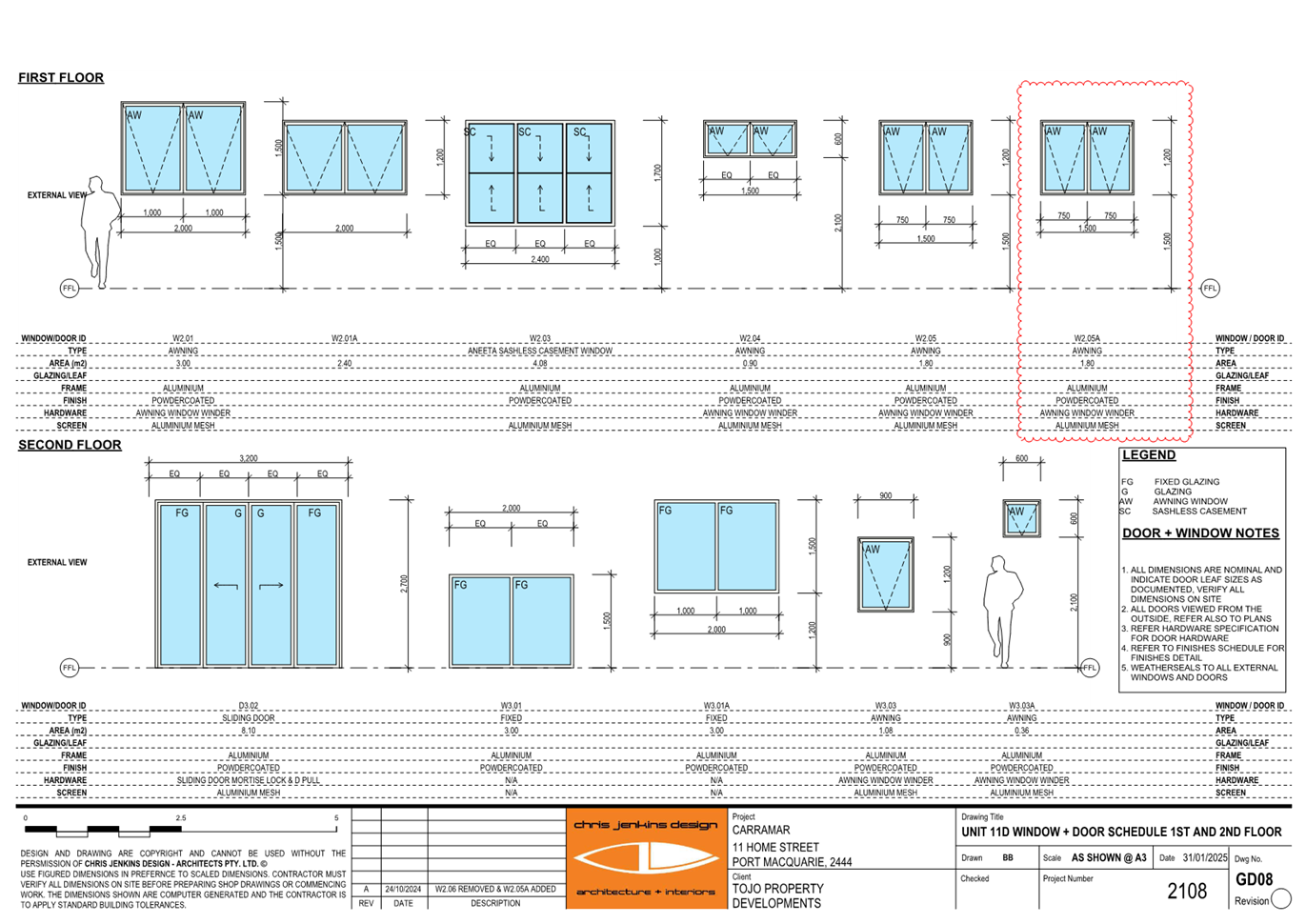
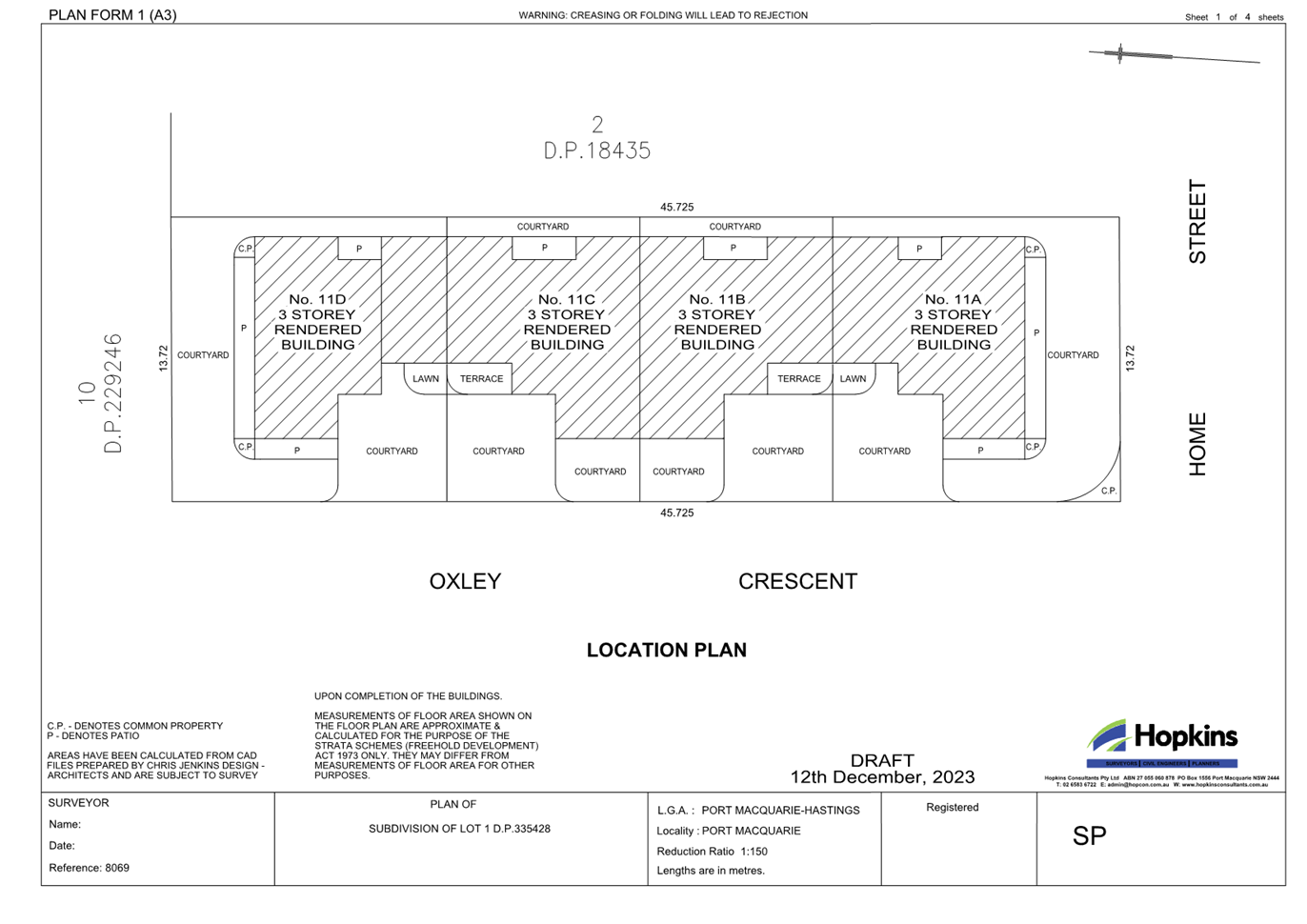
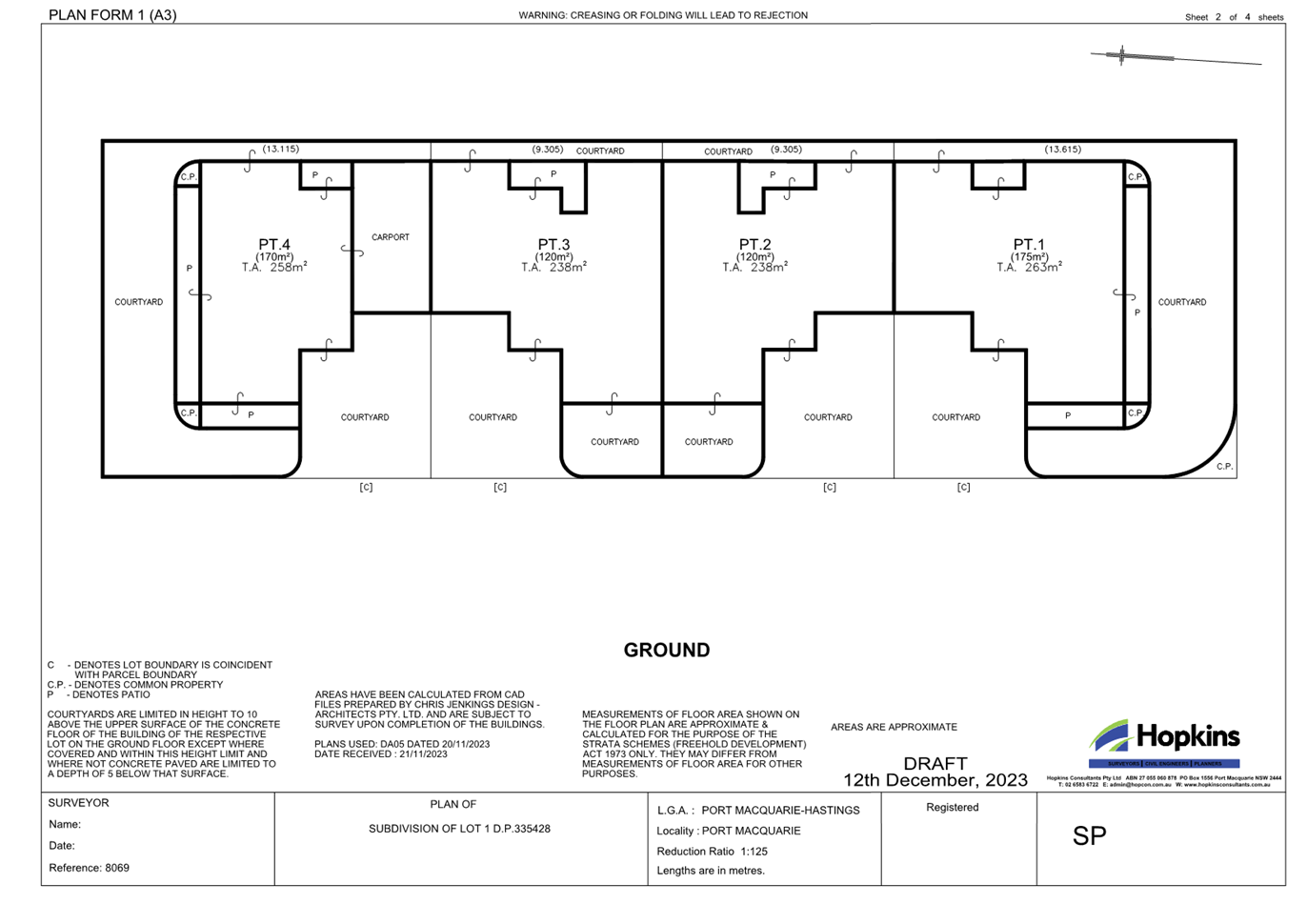
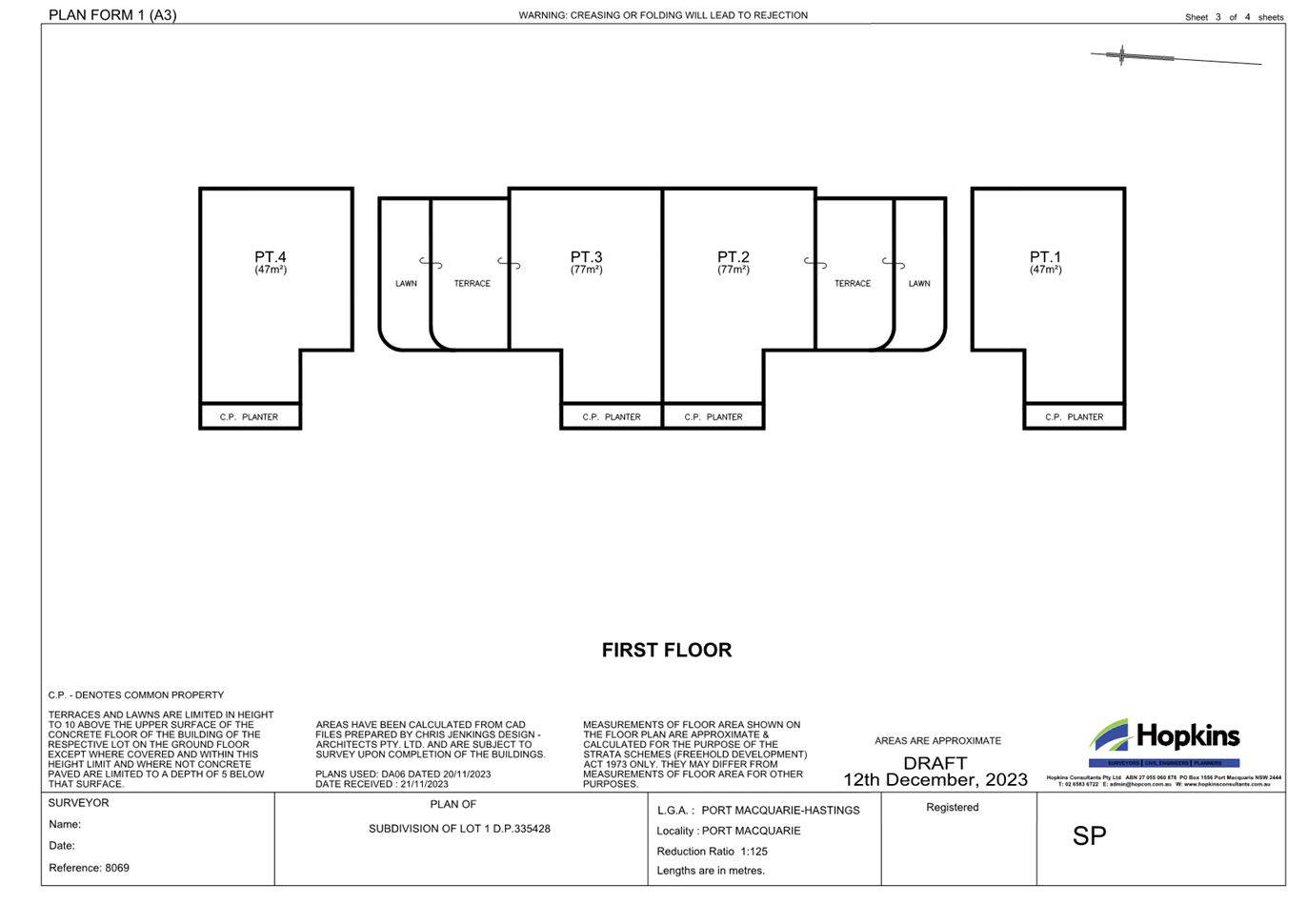
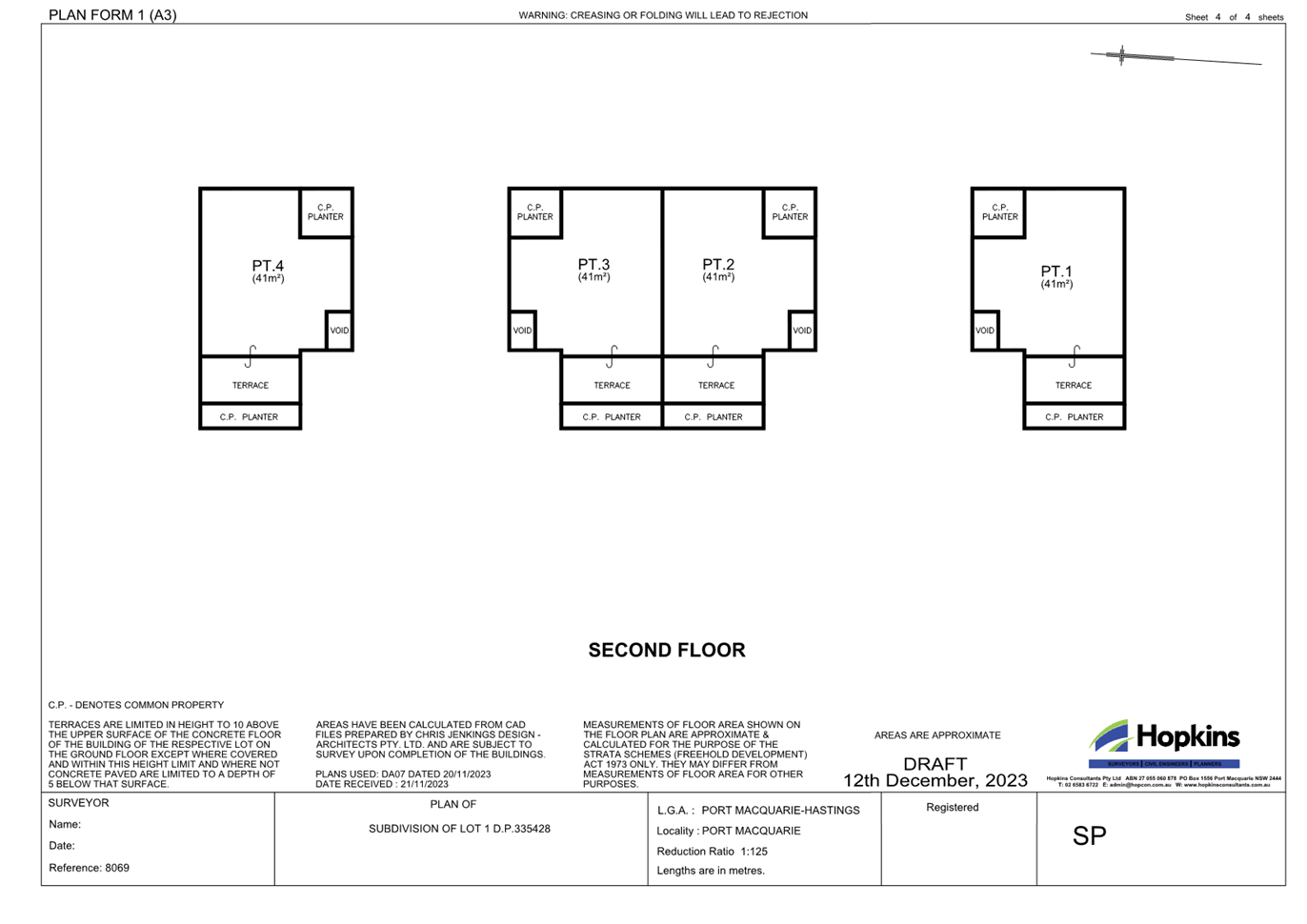
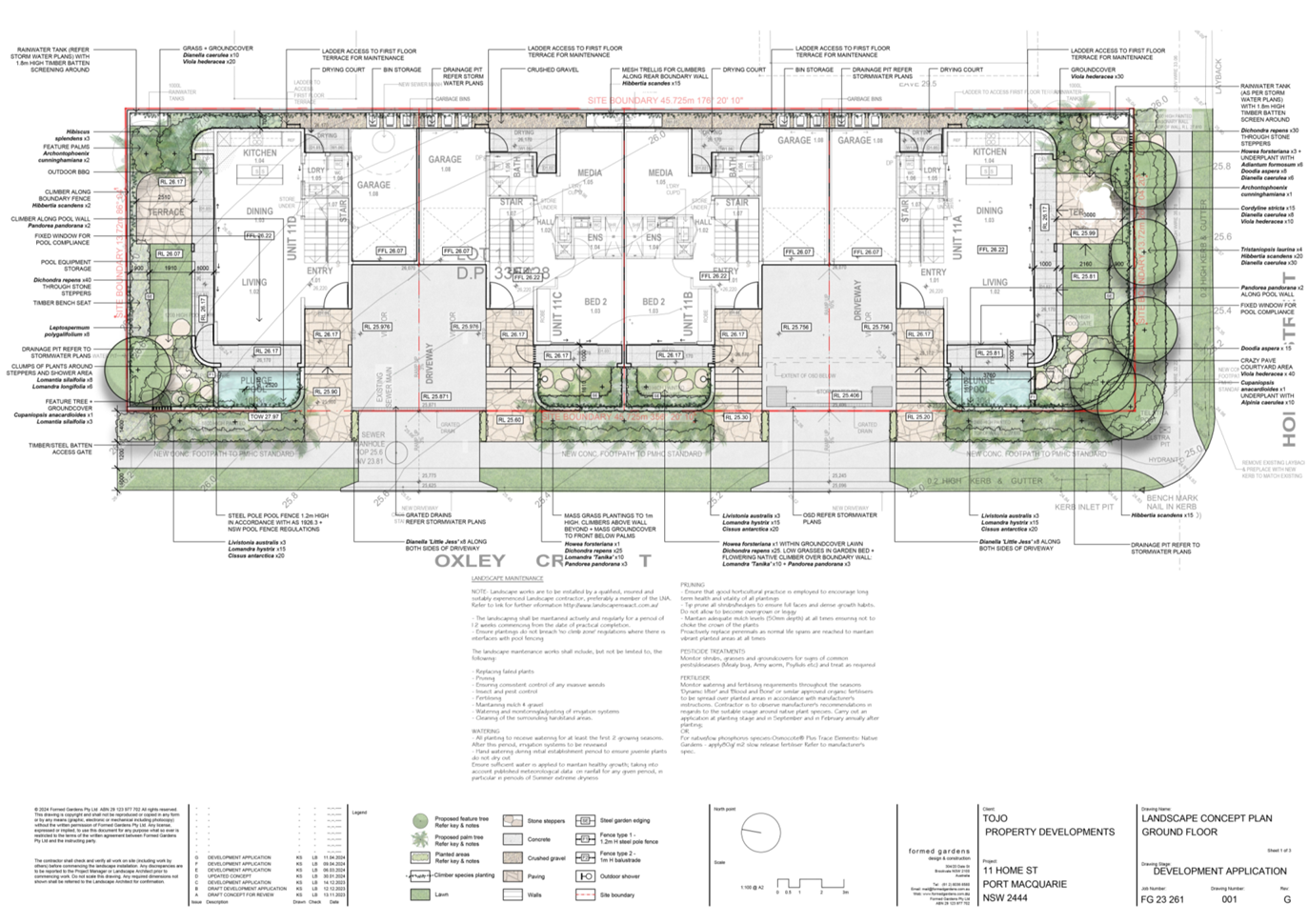

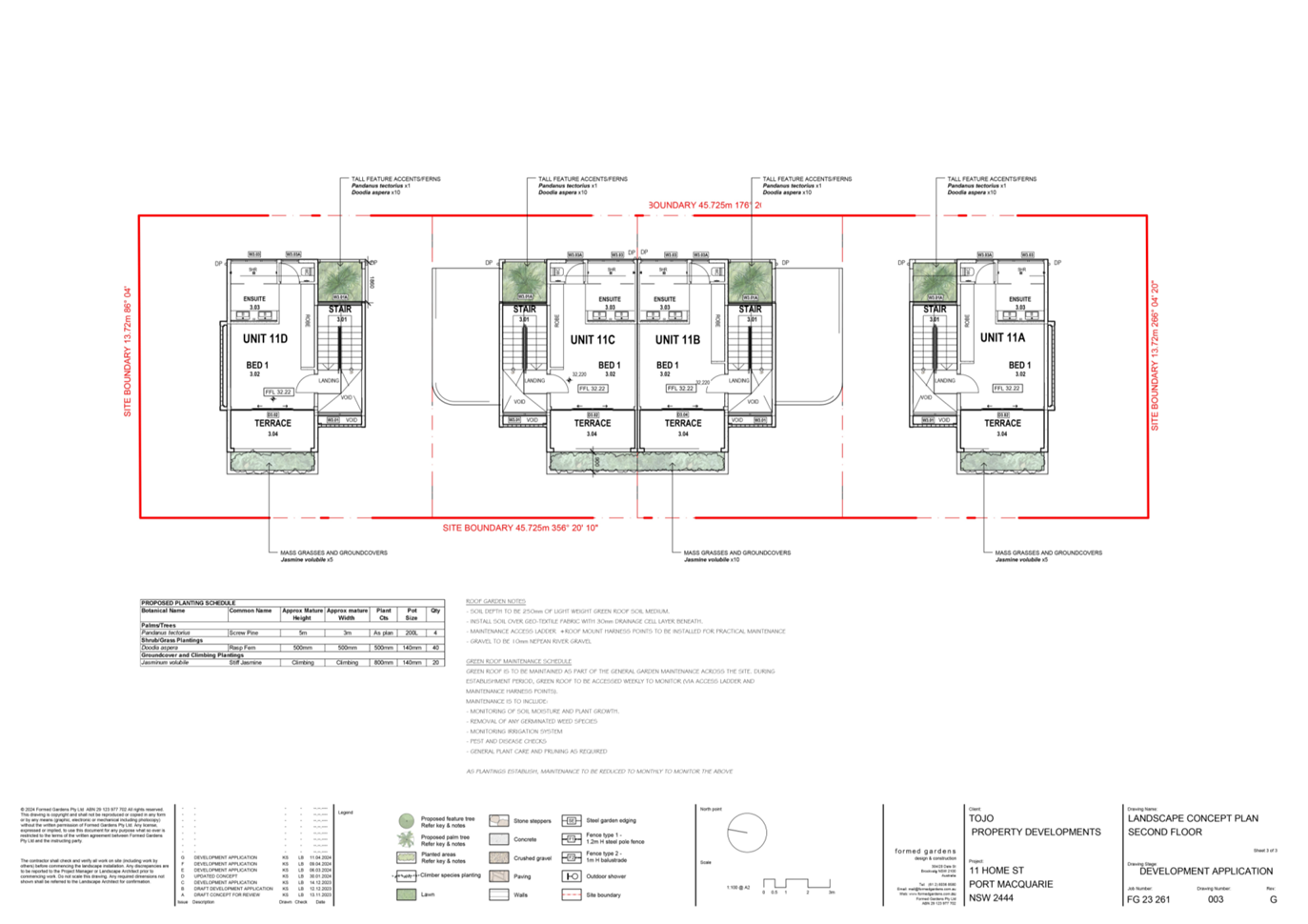
|
ATTACHMENT
|
Development Assessment Panel
16/04/2025
|
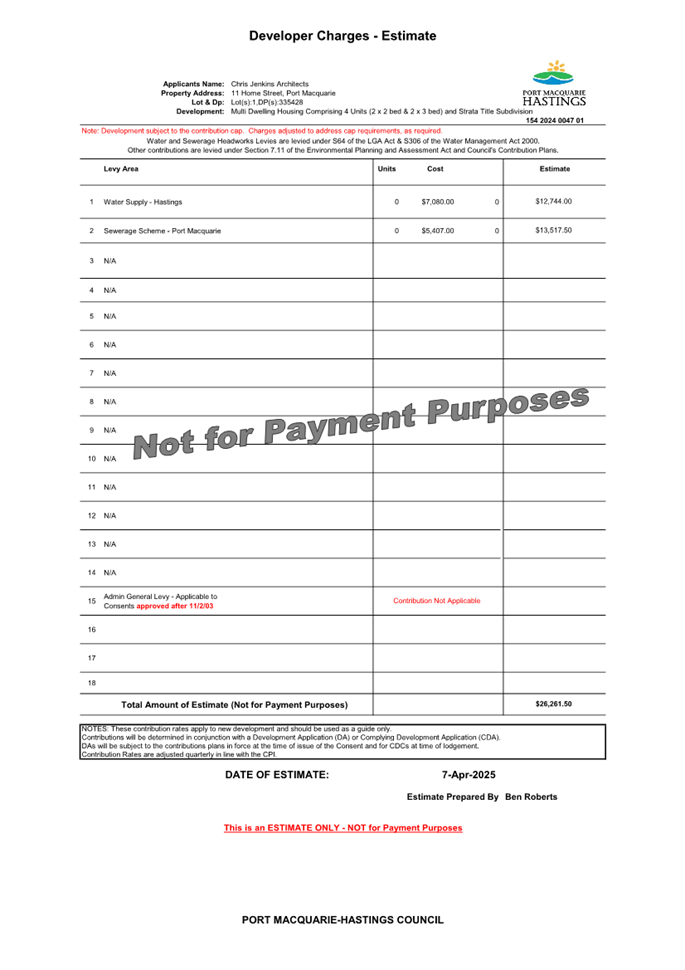

|
ATTACHMENT
|
Development Assessment Panel
16/04/2025
|

